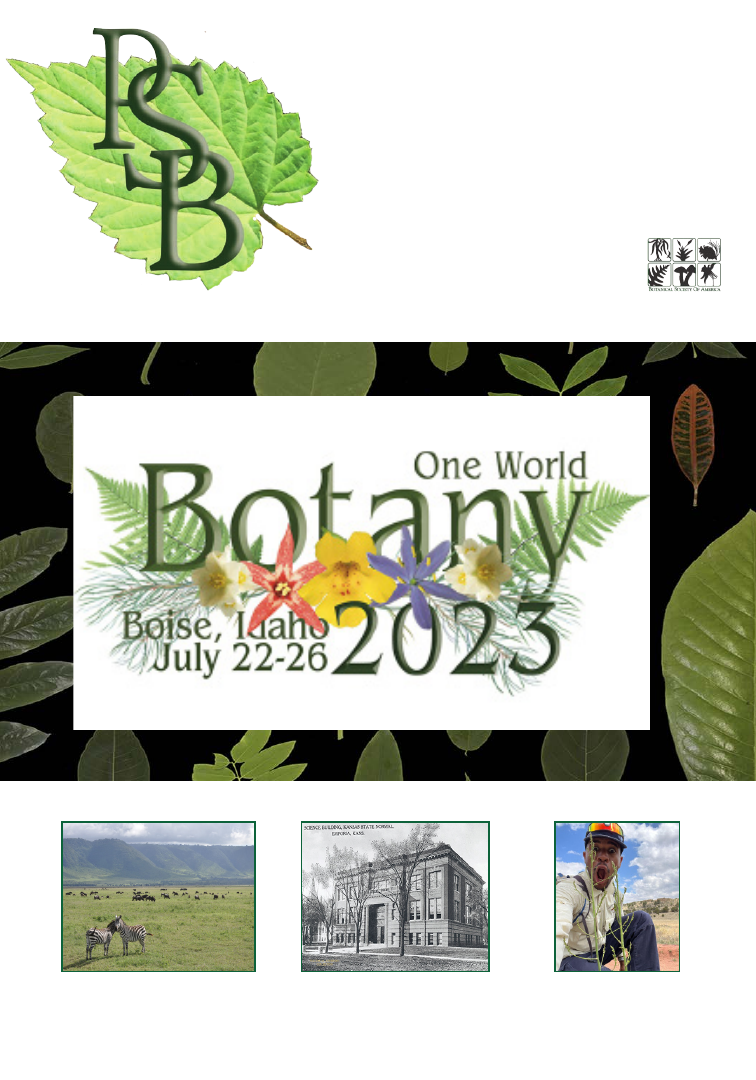
IN THIS ISSUE...
SUMMER 2023 VOLUME 69 NUMBER 2
PLANT SCIENCE
BULLETIN
A PUBLICATION OF THE BOTANICAL SOCIETY OF AMERICA
155 Years of Botany at Emporia State
University: A Case Study of College
Botany in the U.S.... p. 92
Meet the new student representative,
Josh Felton! ... p. 141
Travels in Tanzania with North
American Undergraduates: A Botanical
Safari...p. 114

Summer 2023 Volume 69 Number 2
FROM the EDITOR
Greetings,
It’s summer in Omaha, which means college baseball games, afternoon
thunderstorms, and incoming undergraduate advising. At my institution, at least,
it is rare to find a first-year student who knows they want to pursue a career in
botany. It can be a struggle to recruit and develop potential young botanists and
the landscape for botanical education has certainly undergone significant changes.
In this issue, you will find a case study of Botany as a discipline at Emporia State
University that discusses some of these challenges and changes, both historical and
recent. We also include an article describing a travel course which seeks to introduce
botany to students who are more focused on zoology. In this summer issue, you will
also find resources that may be helpful for navigating Botany 2023.
I hope to see many of you there!
Sincerely,

PSB 69 (2) 2023
68
68
SOCIETY NEWS
BSA Emerging Leader Award
The Emerging Leader Award of the Botanical Society of America is given annually in recognition
of creative and influential scholarship as well as impact in any area of botany reflecting the breadth
of BSA. Awardees have outstanding accomplishments and also have demonstrated exceptional
promise for future accomplishments in basic research, education, public policy, exceptional service
to the professional botanical community, or a combination of these categories.
Botanical Society of America’s
Award Winners (Part 1)
DR. JOYCE G. ONYENEDUM
CORNELL UNIVERSITY
Dr. Joyce Onyenedum is currently
Assistant Professor of Plant Evolution in
the Liberty Hyde Bailey Hortorium at
Cornell University. She earned a bachelor’s
degree in plant sciences from Cornell and
a doctorate in integrative biology from
the University of California, Berkeley. The
fundamental question driving her research is
understanding how plants climb. She studies
patterns through classical plant anatomy,
morphology, molecular systematics,
and statistical phylogenetic comparative
methods; she complements these findings
with an understanding of the developmental,
cell, and molecular processes that shape
the climbing habit in disparate lineages.
This integrative approach allows her to link
macroevolutionary patterns to fine-scale
mechanistic processes, thus uncovering the
evolution of development (evo-devo) of
climbing plants.

PSB 69 (2) 2023
69
Charles Edwin Bessey Teaching Award
(BSA in association with the Teaching Section and Education Committee)
Dr. Cynthia Jones, University of Connecticut
Dr. Eddie Watkins, Colgate University
Donald R. Kaplan Memorial Lecture
This award was created to promote research in plant comparative morphology, the Kaplan family
has established an endowed fund, administered through the Botanical Society of America, to
support the Ph.D. research of graduate students in this area.
Erika Edwards, Yale University
The Grady L. and Barbara D. Webster Structural Botany
Publication Award
This award was established in 2006 by Dr. Barbara D. Webster, Grady’s wife, and Dr. Susan V.
Webster, his daughter, to honor the life and work of Dr. Grady L. Webster. After Barbara’s passing
in 2018, the award was renamed to recognize her contributions to this field of study. The American
Society of Plant Taxonomists and the Botanical Society of America are pleased to join together in
honoring both Grady and Barbara Webster. In odd years, the BSA gives out this award and in even
years, the award is provided by the ASPT.
Alberto Echeverría, Emilio Petrone-Mendoza, Alí Segovia-Rivas, Víctor A. Figueroa-
Abundiz, and Mark E. Olson
The vessel wall thickness–vessel diameter relationship across woody angiosperms
American Journal of Botany, April 2022 109: 856-873
The BSA Developing Nations Travel Grants
Rafael Acuña-Castillo, Universidad de Costa Rica, Costa Rica
Tami C. Cacossi, UNICAMP, Brazil
Idowu Obisesan, Bowen University Iwo, Nigeria
Malka Saba, Quaid-i-Azam University, Islamabad, Pakistan
Jayani Wathukarage, Department of Agriculture, Sri Lanka and University of the Philippines,
Diliman

PSB 69 (2) 2023
70
The BSA Professional Member Travel Grants
Ana Andruchow-Colombo, University of Kansas
Nina Baghai-Riding, Delta State University
Israel L. Cunha Neto, Cornell University
Jessamine Finch, Native Plant Trust & Framingham State University
Julia Gerasimova, Senckenberg Research Institute and Natural History Museum Frankfurt
Margaret Hanes, Eastern Michigan University
Adriana I. Hernandez, California Academy of Sciences
Pankaj Kumar Ph.D., FLS, Texas Tech University, Department of Plant and Soil Science
Francesco Martini, Trinity College Dublin
Elizabeth McCarthy, SUNY Cortland
BSA Public Policy Award
The Public Policy Award was established in 2012 to support the development of tomorrow’s leaders
and a better understanding of this critical area.
Katherine T. Charton, University of Wisconsin-Madison
Lauren M. Orton, Sauk Valley Community College
Botanical Advocacy and Service Grant
This award organized by the Environmental and Public Policy Committees of BSA and ASPT
aims to support local efforts that contribute to shaping public policy on issues relevant to plant
sciences. To learn more about the winning projects, go to https://botany.org/home/awards/spe-
cial-funds-and-awards/botany-advocacy-leadership-grant.html.
Zeta Phi Beta Sorority, Inc State of Hawaii/New Mexico State Social Action Coordinator:
Maya L. Shamsid-Deen
For the proposal: Zeta Day at City Council: Social Action for Integrative Botanical Education,
Access to Land, & Food Sovereignty

PSB 69 (2) 2023
71
AWARDS FOR ESTABLISHED SCIENTISTS
GIVEN BY THE SECTIONS
Samuel Noel Postlethwait Award (Teaching Section)
The Samuel Noel Postlethwait Award is given for outstanding service to the BSA Teaching Section.
Janelle M. Burke, Howard University
AWARDS FOR EARLY CAREER SCIENTISTS
AJB Synthesis Papers and Prize
The AJB Synthesis Prize is intended to showcase early-career scientists and to highlight their unique
perspectives on a research area or question, summarizing recent work and providing new insights
that advance the field. The Prize comes with a $2000 award and recognition at the BSA Awards Cer-
emony at the Botany Conference. This is the first year of this award.
Dr. Liming Cai, University of Texas at Austin, for her article “Rethinking convergence in
plant parasitism through the lens of molecular and population genetic processes,” 2023, AJB
110: e16174. (To read more about Dr. Cai, see the Publications Corner article in this issue.)
AWARDS FOR STUDENTS
Donald R. Kaplan Dissertation Award in
Comparative Morphology
This award was created to promote research in plant comparative morphology, the Kaplan family
has established an endowed fund, administered through the Botanical Society of America, to
support the Ph.D. research of graduate students in this area.
Haylee Nedblake, University of Kansas
For the Proposal: Evolution of bee-exclusionary corolla width differences in Penstemon

PSB 69 (2) 2023
72
Graduate Student Dissertation Award in Phylogenetic
Comparative Plant Biology
This award supports the Ph.D. research of graduate students in the area of comparative plant
biology, broadly speaking, from genome to whole organism. To learn more about this award click
here.
Zachary Muscavitch, University of Connecticut
For the Proposal: The evolutionary dynamics of fog lichen symbionts: going global
The BSA Graduate Student Research Award including the
J. S. Karling Award
The BSA Graduate Student Research Awards support graduate student research and are made
on the basis of research proposals and letters of recommendations. Within the award group is
the Karling Graduate Student Research Award. This award was instituted by the Society in 1997
with funds derived through a generous gift from the estate of the eminent mycologist, John Sidney
Karling (1897-1994), and supports and promotes graduate student research in the botanical sciences.
The J. S. Karling Graduate Student Research Award
Jordan Argrett, University of Georgia
For the Proposal: Stealing from the rich to give to the poor: Are hemiparasitic plants the
“Robinhood” of sub-alpine communities?
The BSA Graduate Student Research Awards
Anna Becker, University of Florida
For the Proposal: The evolution of Hawaiian blueberries
Akriti Bhattarai, University of Connecticut
For the Proposal: Exploring the genetic mechanisms of white pine blister rust disease
resistance in whitebark pine (Pinus albicaulis) and Siberian pine (P. sibirica)
Ryan Carlson, University of Minnesota Duluth
For the Proposal: Resolving euphrasia taxonomy in Minnesota
Brendan Connolly, Northwestern University and The Chicago Botanic Garden
For the Proposal: Not all pollinators are created equal: The effects of differences in pollination
efficiency on plant genetic diversity and reproductive success

PSB 69 (2) 2023
73
Alexander Damian-Parizaca, University of Wisconsin-Madison
For the Proposal: Evolution, Taxonomy and pollination of New World Vanilla (Orchidaceae)
Anthony Dant, University of Arizona
For the Proposal: Beyond sidewalks: using a dynamic urban classification system to study the
evolution of an invasive plant
Melissa Duda, Northwestern University
For the Proposal: Using reproductive biology and ecological niche models to predict the
potential impact of hybridization in rare species
Caroline Edwards, Indiana University
For the Proposal: The spatial scale and environmental drivers of local adaptation in Viola
pubescens
Emma Fetterly, Northwestern University and the Chicago Botanic Garden
For the Proposal: Understanding biotic and abiotic drivers of floral color polymorphism in
Castilleja coccinea to inform restoration in a changing climate
Clayton W. Hale, University of Georgia
For the Proposal: Left in the shade: understanding the impacts of phenological mismatch
between overstory leaf out and understory herbs
Brooke Kern, University of Minnesota
For the Proposal: Is low hybrid fitness driving selection for increased reproductive isolation
between Clarkia xantiana subspecies?
Ashmita Khanal, Texas Tech University
For the Proposal: Unravelling the genetic basis of sex chromosome evolution in Black
Willows (Salix nigra Marshall)
Izai Kikuchi, University of British Columbia
For the Proposal: Reconstructing the evolution of mycoheterotrophy in Gentianaceae and
Dioscoreales using nuclear phylogenomics
G Young Kim, University of Connecticut
For the Proposal: Facultative CAM (Crassulacean Acid Metabolism) photosynthesis in
Native Hawaiian Peperomia
Kira Lindelof, North Carolina State University
For the Proposal: Applied conservation genetics: GBS and building a genetic inventory for
the recovery of Houstonia montana, an imperiled high-elevation, southern Appalachian
endemic

PSB 69 (2) 2023
74
Amee Maurice, University of Connecticut
For the Proposal: Molecular mechanisms of white pine blister rust disease resistance among
the threatened whitebark pines
Hannah McConnell, University of Washington
For the Proposal: Using the model fern Ceratopteris richardii to investigate genes regulated
by LEAFY orthologs
María de Jesús Méndez Aguilar, Autonomous University of Yucatan
For the Proposal: Populational structure of the traditional Chaya (Cnidoscolus aconitifolius,
Euphorbiaceae) used by Mayan communities in the Yucatan Peninsula, Mexico
Thomas H. Murphy, University of Florida
For the Proposal: Linking morphological and niche evolution in a ubiquitous neotropical
climber
Rodrigo Nicolao, Universidade Federal de Pelotas
For the Proposal: The role of hybridization in the evolution of the Southeastern South
American wild potatoes (Solanum ser. Commersoniana, Solanaceae)
Diego Paredes-Burneo, Louisiana State University
For the Proposal: The role of the Amotape-Huancabamba zone on the diversification of the
high-Andean flora: a case study of the genus Brachyotum (Melastomataceae)
Seth J. Raynor, University of Colorado Boulder
For the Proposal: Lichens of the Indian Peaks Wilderness, towards a complete state inventory
Senna Robeson, University of Chicago
For the Proposal: Seeking the source of geographic range shifts in tarflowers (Bejaria, Ericaceae)
Katie Kobara Sanbonmatsu, Texas A&M University
For the Proposal: Phylogenetics and biogeography of Macromitrioideae (Orthotrichaceae): A
diverse but understudied group of mosses
Parikrama Sapkota (Pari), University of Texas at El Paso
For the Proposal: Unraveling above-belowground interactions that support restoration of
dryland plants communities
Rory Schiafo, Northwestern University and Chicago Botanic Garden
For the Proposal: Understanding the role of light availability and species’ characteristics for
driving priority effects in oak woodland plant communities
Rachel Tageant, Claremont Graduate University
For the Proposal: A floristic inventory of the Owens River Headwater Area, Mono County, CA

PSB 69 (2) 2023
75
Rina Talaba, Northwestern University
For the Proposal: Investigating the differences of Cirsium pitcheri’s floral scent according to
the predation of novel weevil, Larinus planus
Daniel Tucker, University of Victoria
For the Proposal: Magic carpets of the canopy: the role of epiphytic bryophyte functional
structure in driving hydrologic ecosystem processes in a tropical montane cloud forest
Selena Vengco, Claremont Graduate University
For the Proposal: Conservation genetics and the maintenance of flower color polymorphisms
in a non-model system of Erythranthe discolor (Phrymaceae)
Mari Wilson, University of British Columbia
For the Proposal: Comparative transcriptomic analysis of mycoheterotrophy in fern
gametophytes
The BSA Undergraduate Student Research Awards
The BSA Undergraduate Student Research Awards support undergraduate student research and
are made on the basis of research proposals and letters of recommendation.
Melanie Beaudin, Carleton University
For the Proposal: Genetic diversity and population structure of a disjunct Opuntia fragilis
population
Max Gray, University of British Columbia
For the Proposal: Testing the pervasiveness of MITE-induced apomixis in Asteraceae
Kaitlin Henry, Bucknell University
For the Proposal: Chemical analysis of extrafloral nectar in western Australian Solanum
tudununggae (Solanaceae) to explore possible ant-plant relationships
Jonathan Le, University of California, Irvine
For the Proposal: Mapping nutrient localization throughout Drosera capensis digestion using
MALDI-MSI
Samuel Monger, Auburn University in Montgomery
For the Proposal: Identification of kudzu-associated soil microbes - a first step towards
developing more successful restoration techniques
Zach Smith, University of Wisconsin-Madison
For the Proposal: Morphological and physiological adaptation in an ancient plant lineage

PSB 69 (2) 2023
76
The BSA Young Botanist Awards
The purpose of these awards is to offer individual recognition to outstanding graduating seniors
in the plant sciences and to encourage their participation in the Botanical Society of America.
Fae Bramblepelt, The University of Alabama, Advisor: Michael McKain
Gurleen Chana, University of Guelph, Advisor: Christina Caruso
Sam Fuss, Connecticut College, Advisor: Rachel Spicer
Erin Grady, Cal Poly, San Luis Obispo, Advisor: Natalie Love
Wolfgang Graff, Miami University, Advisor: Richard Moore
William Gregor, Miami University, Advisor: Richard Moore
Hanna Hickey, University of Guelph, Advisor: Christina Caruso
Ellie Hollo, Connecticut College, Advisor: Rachel Spicer
Megan Keyser, Miami University, Advisor: Richard Moore
Henry Lagasse, Trinity College, Advisor: Nikisha Patel
Claire Marino, Bucknell University, Advisor: Chris Martine and Tanisha Williams
Taylor Michael, Pittsburg State University, Advisor: Neil Snow
Aadia Moseley-McCloud, Howard University, Advisor: Janelle Burke
Celina Patiño, Weber State University, Advisor: James Cohen
Sam Pelletier, Connecticut College, Advisor: Rachel Spicer
Dominique Pham, University of Richmond, Advisor: Carrie Wu
Sierra Sattler, South Dakota State University, Advisor: Maribeth Latvis
Rachel Savage, South Dakota State University, Advisor: Maribeth Latvis
Madeline Wickers, Bucknell University, Advisor: Chris Martine and Tanisha Williams
Matthew Yamamoto, Connecticut College, Advisor: Rachel Spicer
Noah Yawn, Auburn University, Advisor: Robert Boyd
Diamanda Zizis, Bucknell University, Advisor: Chris Martine and Tanisha Williams

PSB 69 (2) 2023
77
The BSA Student and PostDoc Travel Awards
Winners were selected by lottery
Sevyn Brothers
Claudenice H. Dalastra
Melissa A. Lehrer
Isabela Lima Borges
Carlos A. Maya-Lastra
Vernon I. Cheadle Student Travel Awards
(BSA in association with the Developmental and Structural Section)
This award was named in honor of the memory and work of Dr. Vernon I. Cheadle.
Arthur Leung, University of Toronto, Advisor: Rowan Sage
For the Presentation: Ultrastructural modifications facilitated the initial steps in the evolution
of C4 photosynthesis in Tribulus (Zygophyllaceae)
Oluwatobi Adekunle Oso, Yale University, Advisor: Professor Erika Edwards
For the Presentation: Origin and distribution of leaf teeth in temperate woody angiosperm flora.
AWARDS FOR STUDENTS - GIVEN BY THE SECTIONS
Southeastern Section Student Presentation Awards
The following winners were selected from the Association of Southeastern Biologists meeting that
took place at the end of March, 2023.
Southeastern Section Paper Presentation Award
Ben Brewer, Appalachian State University
Southeastern Section Poster Presentation Award
Elizabeth Companion, University of North Carolina Asheville
Mason McNair
Erika R. Moore-Pollard
Megan Nibbelink
Zach Smith
Tengxiang Wang

PSB 69 (2) 2023
78
STUDENT TRAVEL AWARDS
Developmental & Structural Section Student Travel Awards
Yesenia Madrigal B., Universidad de Antioquia (Colombia), Advisor: Natalia Pabón-Mora
For the Presentation: Assessment of the flowering genetic regulatory network in tropical
orchids with different lifeforms.
Deannah Neupert, Miami University, Advisor: Richard Moore
For the Presentation: The alteration to vegetative growth and gene expression supports the use
of a novel aerial bulbil in Mimulus gemmiparus for reproduction.
Ecological Section Student Travel Awards
Annie E. Meeder, California Polytechnic University, Advisor: Dr. Jenn Yost, For the
Presentation: Post-eradication transitions and dynamics of Santa Cruz Island vegetation
communities.
Charlotte Miranda, San Jose State University, Advisor: Benjamin Carter
For the Presentation: Soil generalist Erysimum capitatum shows differential adaptation to
serpentine soil of origin across a California latitudinal gradient
Shan Wong, Texas Tech University, Advisor: Jyotsna Sharma
For the Presentation: Disjunct populations of a hemi-epiphytic orchid (Vanilla trigonocarpa)
show segregation of mycorrhizal niches.
Genetics Section Student Travel Awards
Samantha Drewry, University of Memphis, Advisor: Jennifer Mandel
For the Presentation: Conservation genetics in the endangered whorled sunflower Helianthus
verticillatus (Asteraceae).
Elizabeth Uzezi Okinedo, University of Massachusetts Boston, Advisor: Brook Moyers
For the Presentation: Pleiotropy and adaptation in the silverleaf sunflower, Helianthus
argophyllus
Primarily Undergraduate Institution (PUI) Faculty and
Future Faculty Conference Awards
Sarah E. Allen, Penn State Altoona
Chloe Pak Drummond, Mount Holyoke College
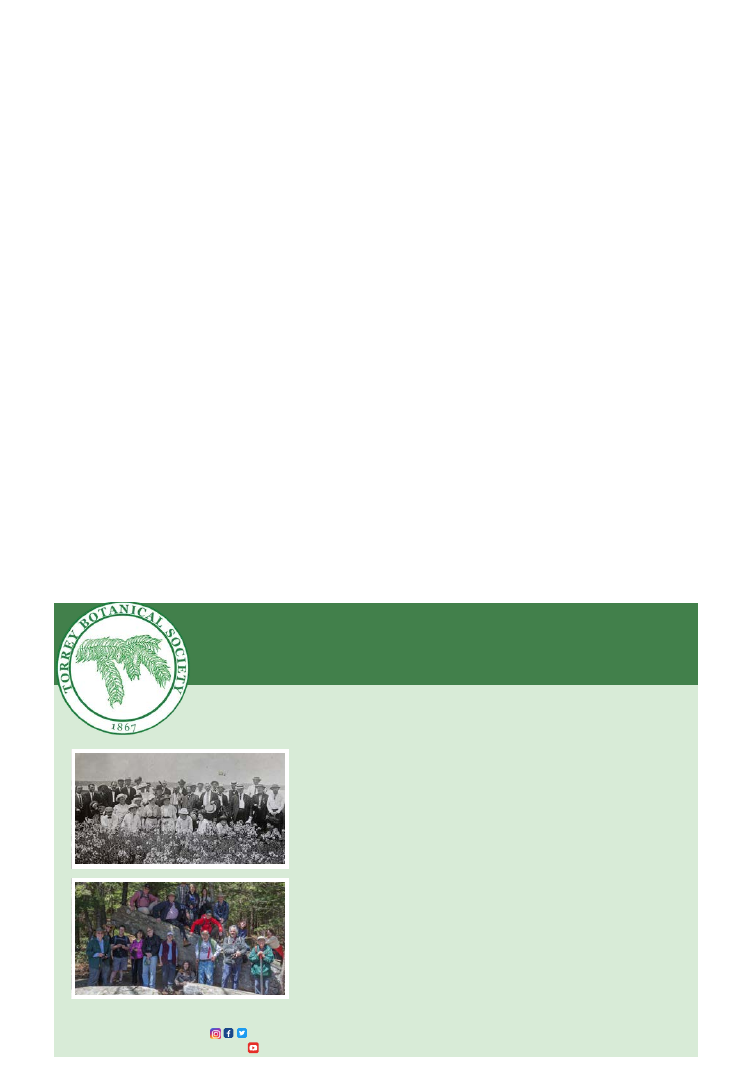
PSB 69 (2) 2023
79
Elizabeth McCarthy, SUNY Cortland
Angela McDonnell, St. Cloud State University
Angela Walczyk, Gustavus Adolphus College
Phytochemical Section Student Travel Awards
Abigail McCoy, State University of New York at Cortland, Advisor: Dr. Elizabeth McCarthy
For the Proposal: Relaxed purifying selection is observed in genes at the branches of the
flavonoid biosynthetic pathway in Nicotiana species that do not produce anthocyanin
compared to those that do. Co-authors: Jacob Landis, Elizabeth McCarthy
Pteridological Section & American Fern Society
Student Travel Awards
Lacey E. Benson, San Jose State University, Advisor: Dr. Susan Lambrecht
For the Presentation: A morphometric analysis of western sword fern (Polystichum munitum)
pinnae and pinnae scales across the coast redwood forest ecological gradient.
You-Wun Hwang, National Tsing Hua University, Advisor: Li-Yaung Kuo
For the Presentation: Frond dimorphism in Tectaria ferns: trends of their foliar characteristics
and spore investment
@TorreyBotanical
www.torreybotanical.org
@TorreyBotanicalSociety
Torrey Botanical Society
THE OLDEST BOTANICAL SOCIETY IN THE AMERICAS
Field trips
held in the
NY/NJ/CT area
Journal of the Torrey
Botanical Society
free to publish
low open-access fees
Virtual lectures
watch our past
lectures on YouTube
Undergraduate,
graduate, and early
career fellowships
application deadline:
January 15
Since our founding in New York City in 1867, the
goals of the Torrey Botanical Society have
remained the same: to promote an interest in
botany, and to collect and diffuse information
on all topics relating to botany.
Staten Island, 1914
upstate NY, 2012

PSB 69 (2) 2023
80
Eric Puetz
South Dakota State University
Biological life has always fascinated me for
as long as I can remember. At a young age I
was exposed to Native tallgrass prairie species
of Eastern South Dakota. This landscape of
rolling prairie is home to the “Coteau des
Prairie” or “Prairie Coteau,” as described by
French explorers and the homeland of the
Lakota Sioux. This region is located within
one of the most endangered ecosystems on
the planet, Northern Tallgrass prairie, with
an estimated 2–14% of Native Tallgrass
prairie remaining. Conservation policy is
often intertwined with economic interests,
and this is especially true in South Dakota,
where tourism is a significant industry due to
its many natural beauties, including the Black
Hills, Badlands, and Missouri River. I am a
strong believer that biological conservation
of private and public lands is a matter of
national security, and this is linked directly
to public policy. As the impacts of climate
change, geopolitical instability, hunger,
and loss of ecosystem services threaten our
world’s growing population, conserving and
investing in our “biodiversity infrastructure”
will preserve our nation’s ability to provide
resources for future generations. To quote
the late author and naturalist Aldo Leopold,
“A thing is right when it tends to preserve
the integrity, stability, and beauty of the
biotic community. It is wrong when it tends
otherwise.” Preserving ecosystem services
in the face of climate change will require
substantial investment in scientific research,
public education, and advocacy.
In April 2022 I was a recipient of the 2022
Congressional Visits Day (CVD) Award and
had the honor of representing the Botanical
Society of America (BSA) and American
Society of Plant Taxonomists (ASPT).
Drawing on past hands-on experience and
ongoing research training at South Dakota
State University, I used my platform to
advocate for $11 billion in appropriations
for the National Science Foundation (NSF)
in support of scientific research, public
2022—2023 Congressional Visits
Day Remarks
Each year, the BSA Public Policy Committee awards two early-career botanists the opportunity to
attend the American Institute of Biological Sciences’ Congressional Visits Day. This event is hosted
by the Biological and Ecological Sciences Coalition, and recipients obtain first-hand experience
at the interface of science and public policy. The first day includes a half-day training session
on science funding and how to effectively communicate with policymakers provided by AIBS.
Participants then meet with their Congressional policymakers, during which they will advocate
for federal support of scientific research. This article details the experiences of this year’s recipients.

PSB 69 (2) 2023
81
education, and ecological conservation, using
a practical, no-nonsense approach valued in
South Dakota and the Midwest. The NSF’s FY
2023 budget request consisted of six themes:
climate and clean energy research, equity
for underserved communities, discovery
engine, emerging industries, research
infrastructure, and organizational excellence
agency operations/award management. This
experience introduced me to the world of
public policy and allowed me to develop
communication and advocacy skills necessary
for communicating with lawmakers. Despite
the challenge of the COVID-19 pandemic and
communicating virtually, this event opened
my eyes to the advancements NSF funding
provides in medicine, engineering, biological
sciences, and technology we use every day.
This event, which began with a two-day
communication bootcamp, allowed me to
further build my communication skills and
emphasized the importance of incorporating
my personal story in advocating for increased
NSF funding. Following the communications
bootcamp, three constituents and I met with
personnel from the offices of lawmakers from
South Dakota: Rep. Johnson, Sen. Rounds,
Sen. Thune; Montana: Rep. Rosendale,
Sen. Daines, Sen. Tester; and Minnesota:
Rep. Philips, Sen. Smith. Following the
communication bootcamp, my team members
and I formed a discussion plan of talking
points in relation to our personal stories,
which helped to form relationships during the
short meetings with lawmakers’ staff. Several
memorable moments from these interactions
include briefly speaking with Rep. Johnson,
who had a few moments to listen to our
message despite a busy schedule, and the
breakthrough moments with lawmakers’ staff
where our message was truly being absorbed
and the spark of a true connection was evident.
Bipartisan cooperation during times of stark
partisan political divide is vital to achieving
legislative success. My team and I experienced
strong bipartisan support from Democrat and
Republican lawmakers alike, and during the
fiscal year 2023 NSF funding was increased
by 12% to $9.9 billion. I cherish the memories
from this event, and having the opportunity
to use my voice to advocate for scientific
advancement was a profound experience.
LAUREN M. ORTON, PHD
Sauk Valley Community College
I am honored to be selected as a recipient of
the 2023 Botanical Society of America’s Public
Policy Award. As an early-career Professor of
Biology at Sauk Valley Community College
in Dixon, Illinois, one of my passions is to
advocate for STEM programs across the
higher educational spectrum. The trip to
Washington, DC, was an amazing opportunity
to express the importance of science, not only
from a research perspective, but also from
the unique perspective of community college
education. When we think of projects funded
by the National Science Foundation (NSF),
we can easily identify needs at research-
based universities, independent and non-
profit research organizations, and medical

PSB 69 (2) 2023
82
institutions. However, community colleges
and their diverse student bodies also benefit
greatly from NSF-funded programs that
provide research opportunities for 2- and
4-year undergraduate level students (Research
Experience for Undergraduate student
programs).
After arriving in our nation’s capitol, I had some
time to sightsee across the National Mall (one
of my favorite places). Advocacy, throughout
history, has found its voice on the Mall, and it
is a great source of inspiration. The following
day, our science communication bootcamp,
hosted by the American Institute for Biological
Sciences (AIBS), began at Southwestern
Universities Research Association’s downtown
DC conference facility. Dr. Jyotsna Pandey of
AIBS provided a wonderful bootcamp, and
we began by learning about the pillars of
communication and how to effectively share
our message. Often, scientists are perceived
as out of touch, and it can be a struggle to
express a technical message in ways that
resonate with our audience. Therefore, having
Jyotsna’s expertise in communicating with
our lawmakers was an invaluable learning
opportunity for me. With the tools we learned
during the day, we were able to begin crafting
a message that would be both informative
and persuasive while presenting the needs
of the scientific community through specific
examples in support of our positions.
Additionally, a panel of public policy experts
joined us to speak about their careers on The
Hill and with various federal organizations
dedicated to crafting public policy. Their
experience and advice were encouraging to
those of us seeking to expand our involvement
in science public policy.
That afternoon and continuing into the
morning of the second day, we learned about
the complexities of the federal budgeting
process. Already having an understanding
of organizational and municipal budgeting, I
was amazed by the funding challenges that the
federal government grapples with each fiscal
year. Discretionary funding, which includes
the NSF, is where we tend to hear of the
sweeping cuts in favor of increasing funding
in other areas. There is never an easy solution
when it comes to the budgeting process.
With this knowledge in hand, I began to
understand the approach to advocating for
funding of the NSF, and how to go about
effectively providing that information to
our lawmakers. That second afternoon we
worked with our assigned regional groups. As
a Midwest resident, I was partnered with my
fellow BSA Public Policy Awardee, Katherine
Charton from the University of Wisconsin,
Madison, and Dr. Rebecca Kauten of the Iowa
Lakeside Laboratory and University of Iowa.
I am so grateful to have been partnered with
Katherine and Rebecca, who are not only
wonderful colleagues, but passionate policy
advocates as well! We worked together to
craft a clear and concise message, and request
funding of the NSF at or above the current
level of $11.9 billion. Each team member
spoke to their own strengths and elaborated
on how NSF funding has positively impacted
their careers. Whether it was discussing the
concrete funding numbers and effect on
STEM workforce percentages, speaking to
the impact of NSF funding on the ability for
small and university-independent research
organizations to collect crucial data, or
advocating for educational opportunities made
possible by the NSF for underrepresented
student groups and community college science
programs, we devised a clear message for our

PSB 69 (2) 2023
83
lawmakers. This message was that the NSF is
the primary funding body for science, and
each of us has seen or personally experienced
the positive impact it provides—the NSF
needs your support!
The Congressional Visits Day was an absolute
whirlwind! Starting early in the morning, our
Midwest team traveled to Capitol Hill where
we had for our first meeting in Senator Ron
Johnson’s (R-WI) Hart Senate Building office.
With Jyotsna present to lend her expertise,
we spoke with members of Senator Johnson’s
staff and provided materials from AIBS to
support our request to fund the NSF at $11.9
billion. Although the meeting was brief, it
was informative and upbeat; also, despite
the busy schedules of the congressional staff
members, we were well received everywhere
we went. We bounced back and forth between
the Dirksen Senate Office Building, the
Longworth House Office Building and the
Hart Senate Office Building, meeting with
staff of Senator Tammy Baldwin (D-WI),
Senator Chuck Grassley (R-IA), Senator Joni
Ernst (R-IA), Representative Mark Pocan
(D-WI), Representative Ashley Hinson (R-
IA), and Representative Lauren Underwood
(D-IL). To conclude the day, I met with staff
members of Senator Dick Durbin (D-IL)
and Senator Tammy Duckworth (D-IL) from
my home state of Illinois. Julie Palakovich
Carr, a current member of the Maryland
state legislature, former congressional staff
member, and AIBS associate, joined me to
provide her expertise on NSF funding. It was a
pleasure to speak with her regarding her time
on The Hill and her passion for meaningful
legislation as an elected official.
Overall, my experience was an unforgettable
one. It was a remarkable opportunity to not
only learn about the ins-and-outs of federal
funding and budgeting, but also lend my
voice in support of funding an organization
that is paramount in the scientific community
for financial backing of research. Both
large and small projects, undergraduate
and graduate student thesis research, non-
profit and independent research facility
projects, opportunities for students outside of
traditional research-based higher education
institutions, and so much more fall under the
purview of the NSF’s funding. Meeting with
our representatives keeps them informed of
what their constituency values and wants to
see supported. I hope more people engage
in public policy and speak up for positive
change. As a professor, one thing that was
particularly impactful from this opportunity
was sharing the experience with my students,
in real-time, thanks to social media. I was able
to update students of my journey by posting
to my educational social media channel and
engaging them in the civic process. It is my
hope that, through my example of advocacy,
they will find their voices and become involved
in the issues that matter most to them.
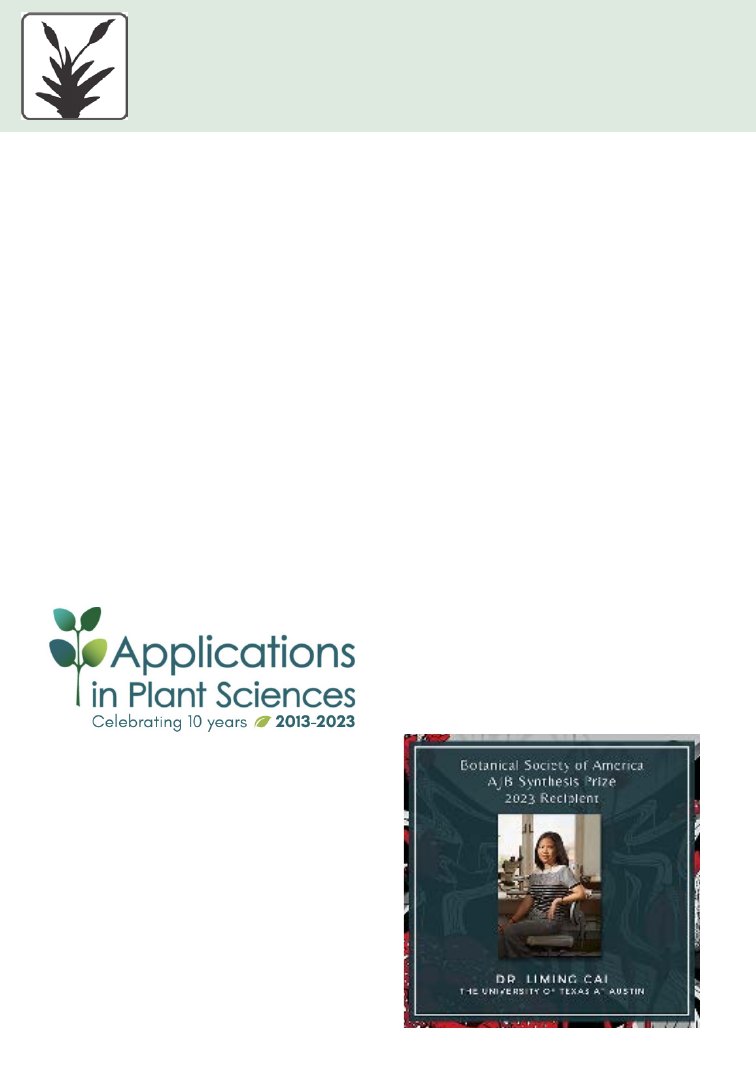
PSB 69 (2) 2023
84
84
PUBLICATIONS CORNER
It is with great pleasure that we mark the first
10 years of publication for Applications in Plant
Sciences. APPS was launched as an open access
journal in January 2013 with the intention of
being “a new source for sharing exciting and
innovative applications of new technologies
that have the potential to propel plant research
forward into the future,” according to the
journal’s first Editor-in-Chief, Dr. Theresa
Culley. The journal covers all areas of the plant
sciences, publishing novel protocols, software
notes, reviews, and application and genomic
resource articles, under the leadership of
current Editor-in-Chief, Dr. Briana Gross, and
Managing Editor Beth Parada, along with the
APPS editorial board.
We will be marking this milestone and
highlighting some of the remarkable papers
published over the past 10 years, including
several special themed issues, which have
helped to bring in talented early-career
and experienced researchers working
together as editors, reviewers, and authors.
Congratulations to all the dedicated people
who contribute to the journal and benefit
from reading the papers published!
Celebrating 10 Years of Publication
for
Applications in Plant Sciences
AMERICAN JOURNAL OF
BOTANY
SYNTHESIS PRIZE
We are delighted to announce that Dr.
Liming Cai, of the University of Texas
at Austin, is the winner of the first AJB
Synthesis Prize (https://botany.org/home/
awards/awards-for-early-career-scientists/
ajb-synthesis-papers-and-prize.html) for
her article “Rethinking convergence in plant
parasitism through the lens of molecular
and population genetic processes,” AJB 2023,
110: e16174. The Synthesis competition was
intended to showcase early-career scientists
and to highlight their unique perspectives on a
research area or question, summarizing recent
work and providing new insights that advance
the field. The Prize comes with a $2000 award
and recognition at the BSA Awards Ceremony
at the Botany Conference.
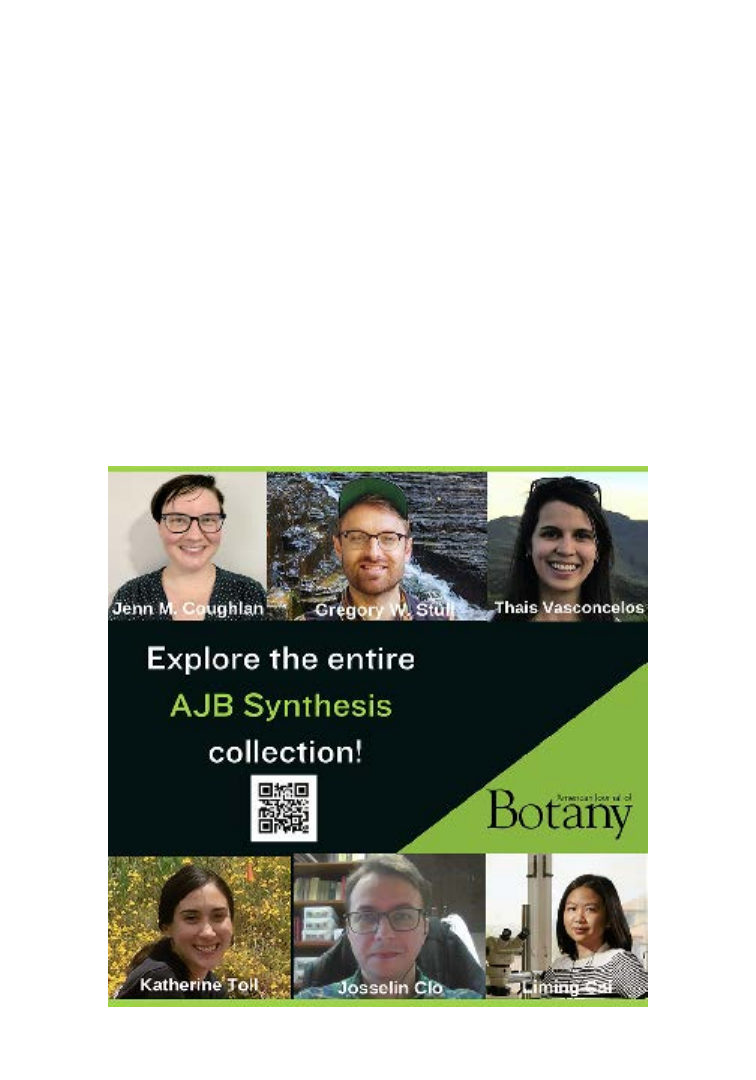
PSB 69 (2) 2023
85
Dr. Cai is currently a Stengl-Wyer Postdoctoral
Research Fellow at the University of Texas at
Austin focusing on the evolutionary genomics
and physiology of parasitic plants. She
received her doctoral degree in evolutionary
plant biology at Harvard University, and
her bachelor’s degree, with Honors, in Life
Sciences from Fudan University in Shanghai,
China. Her research combines natural history
and cutting-edge molecular methods to
gain a mechanistic understanding of how
plants live and evolve. She is exploring
how plant parasitism impacts the integrity
of mitochondrial function and mito-nuclear
interaction using genome sequencing,
respiratory physiology, and herbarium-
based approaches. Dr. Cai is a member of
the BSA’s Early Career Advisory Board and
has served on the Reviewing Editor Board
for Applications in Plant Sciences. She has
published numerous papers in peer-reviewed
journals and received much recognition and
many awards for her scholarship.
Dr. Cai was one of six early-career scientists
whose Synthesis papers were published in
AJB (https://bsapubs.onlinelibrary.wiley.com/
doi/toc/10.1002/(ISSN)1537-2197.synthesis).
CONGRATULATIONS TO ALL THE AUTHORS!
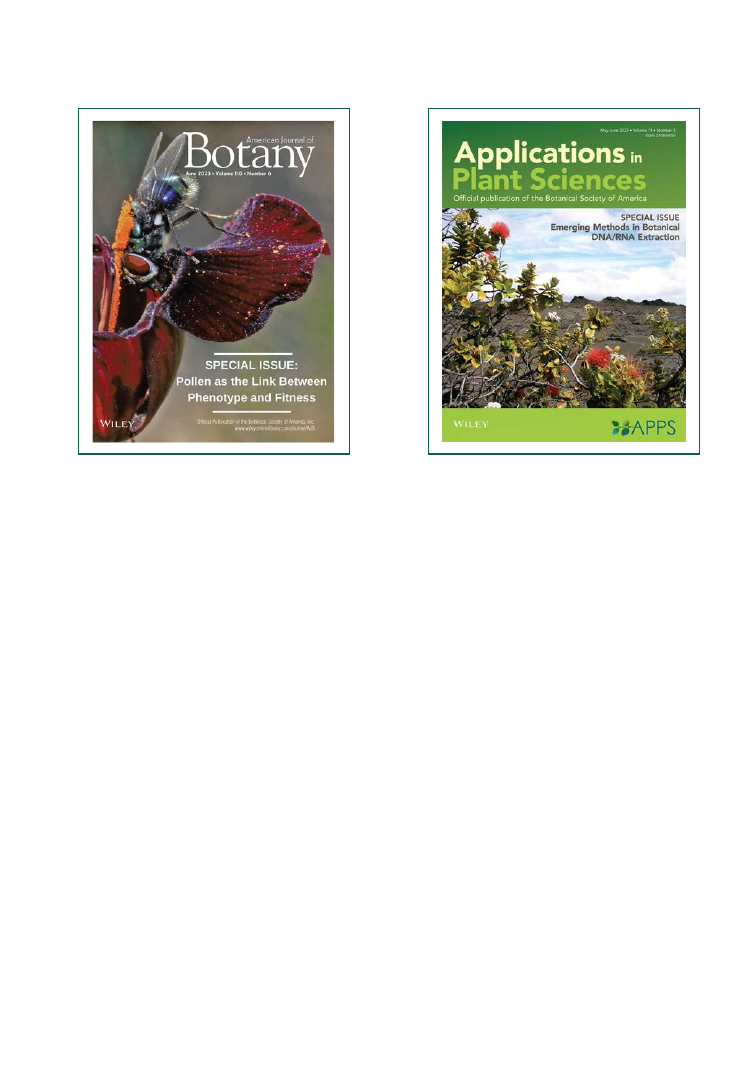
PSB 69 (2) 2023
86
The June issue of the American Journal of
Botany explores the theme of “Pollen as
the Link Between Floral Phenotype and
Fitness.” Guest editors Øystein H. Opedal,
Rocío Pérez-Barrales, Vinícius L. G. Brito,
Nathan Muchhala, Miquel Capó, and
Agnes Dellinger worked with contributors
to highlight research that provides new
insights into the relationships between pollen
production, presentation, flower morphology,
and pollination performance (e.g., pollen
deposition onto stigmas), the role of pollinators
in pollen transfer, and the consequences of
heterospecific pollen deposition. Several of
the studies demonstrate exciting experimental
and analytical approaches that should pave
the way for continued work addressing the
intriguing role of pollen in linking plant
phenotypes to reproductive fitness. A paper
in Applications in Plant Sciences forms part of
the current special issue and presents a new
pollen quantification technique that evaluates
the use of high-energy violet light for pollen
grain classification.
The May–June issue of Applications in Plant
Sciences explores “Emerging Methods in
Botanical DNA/RNA Extraction.” Guest
editors Richard Hodel, Ed McAssey, and
Nora Mitchell have curated a diverse group
of papers highlighting the current state
of knowledge in nucleic acid extractions,
including both the key challenges and creative
innovations that have been developed to
circumvent these challenges to address a
variety of exciting botanical questions. This
special issue provides a valuable resource
that will help readers to improve their own
protocols, expand their toolkits, and consider
additional research frontiers enabled by
nucleic acid data.
EXPLORE THE NEW
AJB/APPS SPECIAL ISSUES
See the full issue at:
https://bsapubs.onlinelibrary.wiley.com/
toc/21680450/2023/11/3
See the full issue at:
https://bsapubs.onlinelibrary.wiley.com/
toc/15372197/2023/110/6.
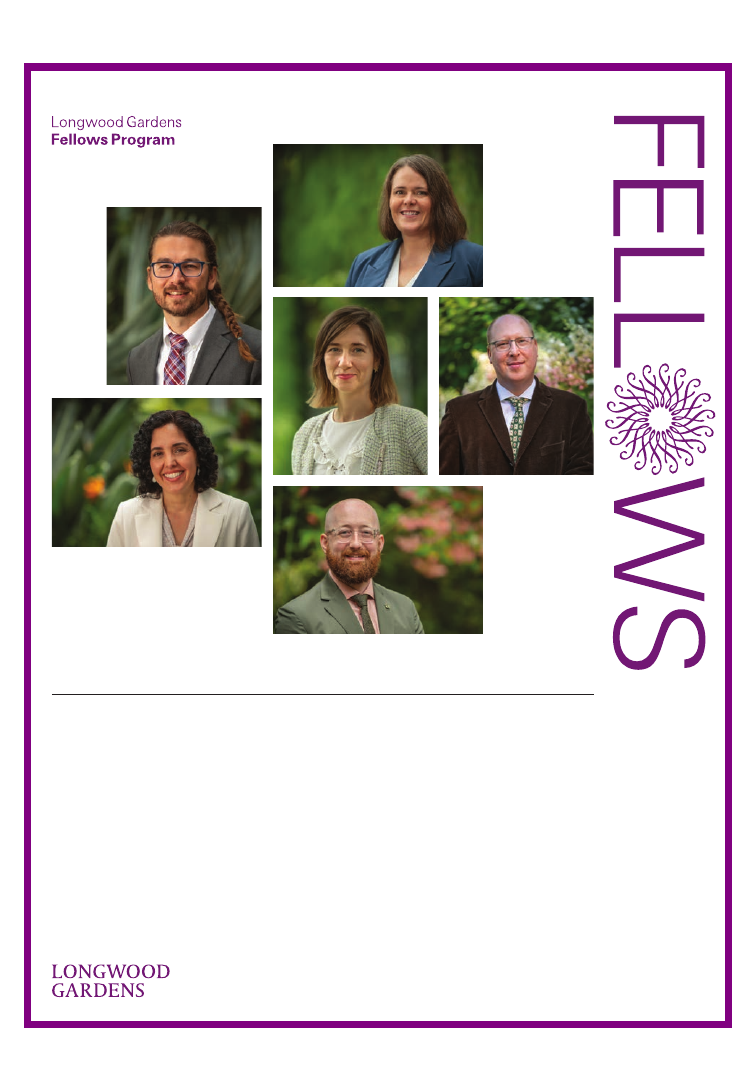
PSB 69 (2) 2023
87
Do you aspire to lead a
horticultural institution
or business?
Are you passionate about
using your career to make
a positive global impact?
Your Path
to Leadership
Applications for the 2024–2025 cohort are
open through July 31. Learn more and apply
at longwoodgardens.org/fellows-program.
Congratulations
to our graduating
2022–2023
Longwood Fellows
Cohort. From top
left: Danny Cox,
Amanda Hannah,
Rae Vassar, Rama
Lopez-Rivera,
Anamari Mena, and
Ryan Gott, Ph.D.
The Fellows Program develops tomorrow’s leaders,
preparing them to successfully navigate pressing
challenges, develop thoughtful strategies, and lead
organizations that are equitable and sustainable.
During the fully funded, cohort-based residency,
Fellows engage in project-based learning that
allows them to hone their professional skills while
delving into issues relevant to the horticulture
industry today.
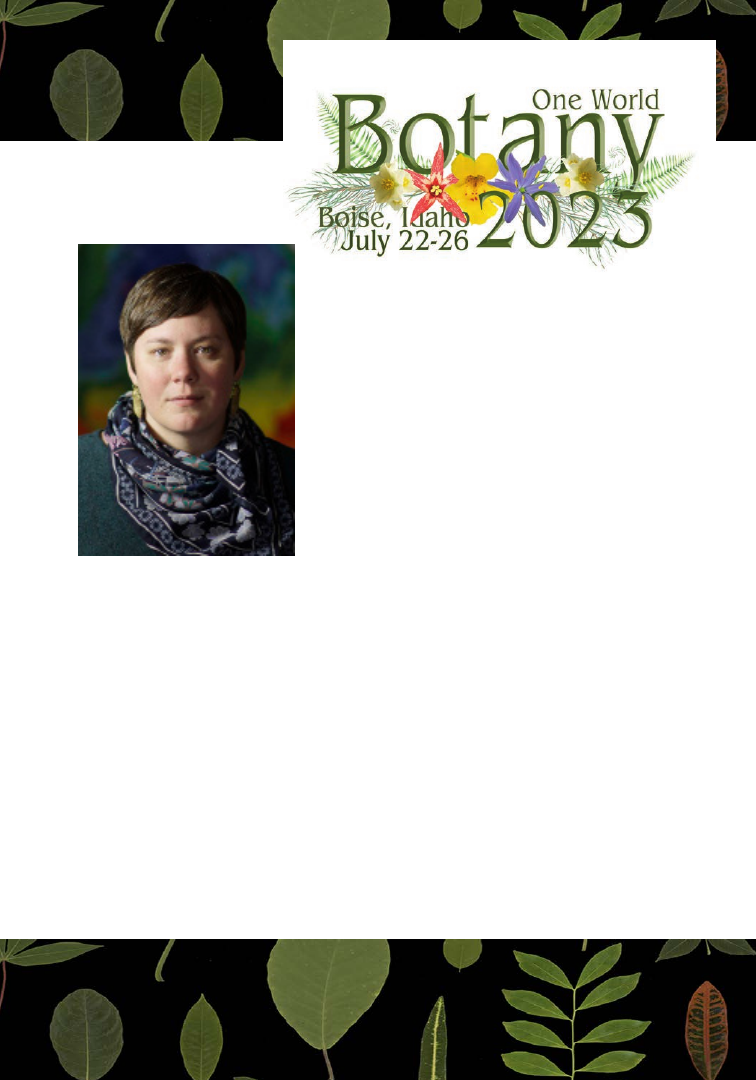
PSB 69 (2) 2023
88
Jacquelyn Gill is an associate professor of paleoecology at the University of Maine’s Climate
Change Institute. She is a paleoecologist and biogeographer, bringing the perspectives of
space and time to bear on questions in ecology and global change science. Her work takes
a community ecology approach to help understand how species and their interactions
have responded to interacting drivers (like climate change and extinction) through time.
She directs the BEAST Lab, which investigates 1) the legacies “biotic upheavals” like the
extinction of Pleistocene megafauna on vegetation, 2) biotic interactions and drivers of
landscape change on large spatiotemporal scales, 3) plant range dynamics and vulnerability to
climate change, and 4) what paleoecology, Indigenous archaeology, and Traditional Ecological
Knowledges can tell us about human-environment interactions in the past.
She is a co-host of the podcast Warm Regards and author of the blog “The Contemplative
Mammoth”, welcoming conversations and advice on science, early career academia, and
diversity in STEM. She is a co-founder of the March for Science and a 2020 recipient of NCSE’s
Friend of the Planet award.
JACQUELYN GILL
BOTANY 2023
PLENARY SPEAKER
SUNDAY, JULY 23 7:30 PM
BOISE CENTER, BOISE, ID
Register now - www.botanyconference.org
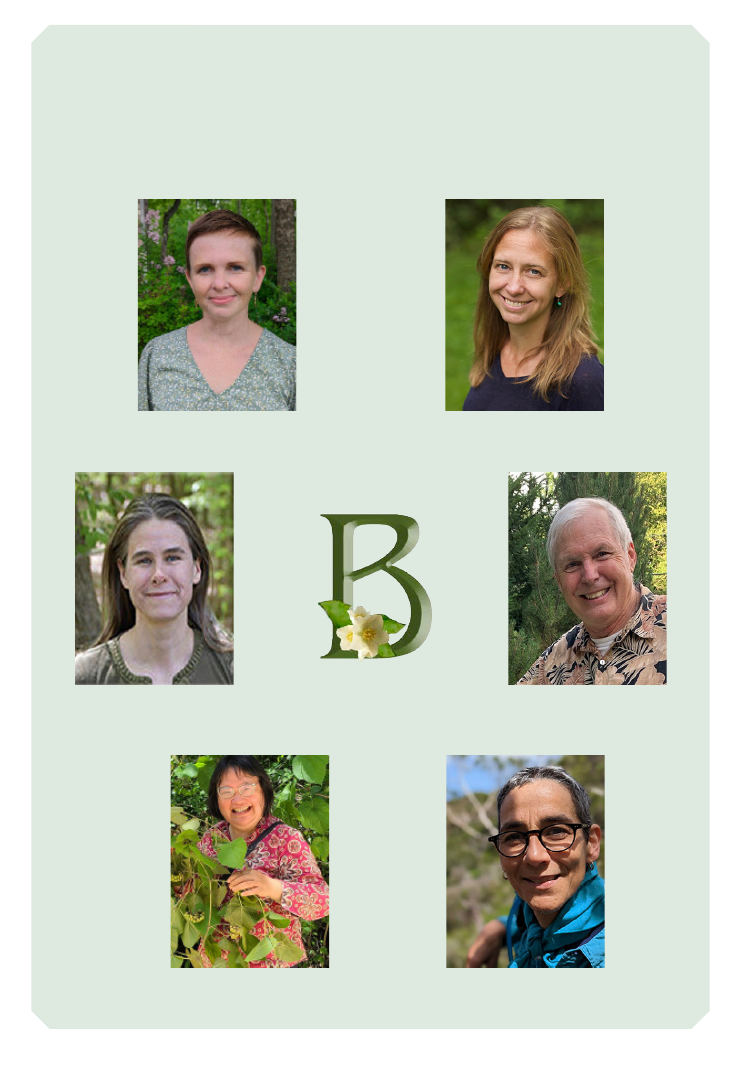
PSB 69 (2) 2023
89
KAROLINA HEYDUK
BSA EMERGING LEADER
DON MANSFIELD
REGIONAL BOTANY LECTURE
JUN WEN
ASPT INCOMING PRESIDENT
ERIKA EDWARDS
KAPLAN MEMORIAL LECTURE
BRENDA MOLANO-FLORES
BSA INCOMING PRESIDENT
JILL WHITE
ANNALS OF BOTANY LECTURE
Botany 2023 Featured Speakers!
SEE the BOTANY 2023 WEBSITE for MORE INFORMATION
THESE TALKS WILL BE PRESENTED LIVE DURING the CONFERENCE
and RECORDED for the VIRTUAL PLATFORM.

PSB 69 (2) 2023
90
© 2022 LI-COR, Inc.
The LI-6800 Portable Photosynthesis System helps reveal it.
• Aquatic measurements—CO₂
gas exchange from algae and
other aquatic samples.
• Multiphase Flash™
Fluorometer—flash intensity of
up to 16,000 µmol m
-2
s
-1
.
• Dynamic Assimilation™
Technique—faster CO₂
response curves.
You share your research stories in
scientific journals, and the LI-6800
is designed to safeguard the
collection and quality of
publishable data. Automated
adjustments of experimental
parameters combined with stable
control of non-experimental
parameters empower you to test
hypotheses with high confidence.
The LI-6800 is the global standard
for photosynthetic gas exchange
and chlorophyll a fluorescence
measurements.
Your research has a story to tell.
The LI-6800 features novel
advancements not found in any
other photosynthesis system:
Learn more at
licor.com/6800
LI-COR and Multiphase Flash are registered trademarks of LI-COR, Inc. in the United States and other countries.
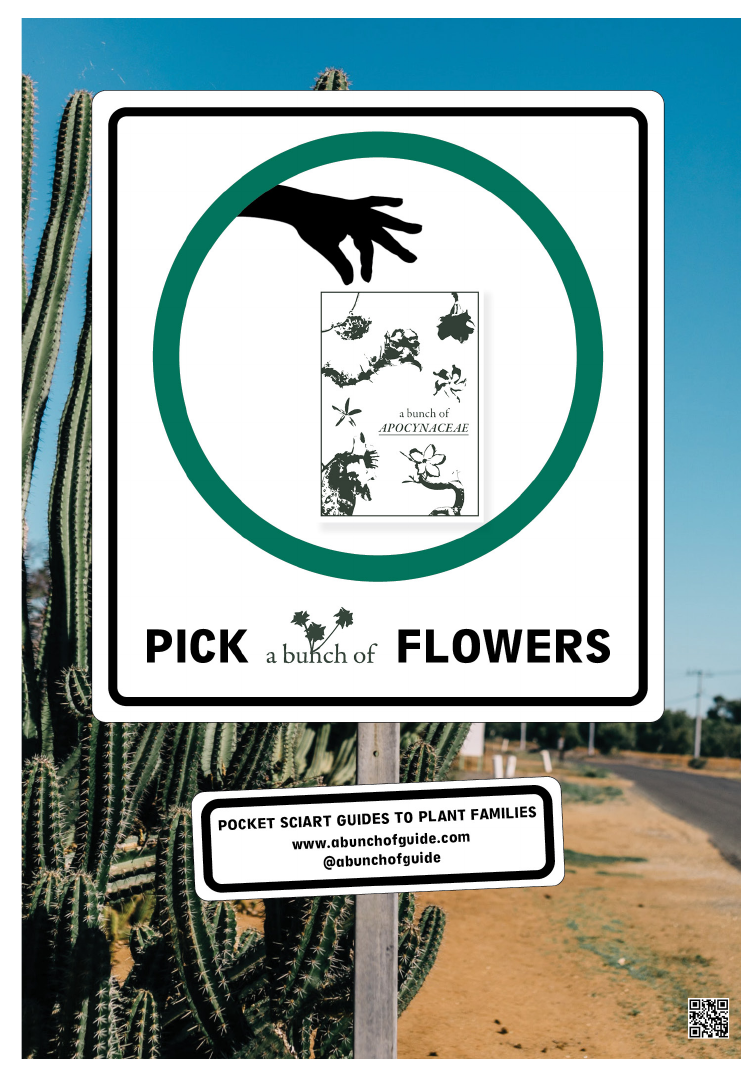
PSB 69 (2) 2023
91

PSB 69 (2) 2023
92
92
INTRODUCTION
Plant Study has been an integral part of the
college curriculum in the U.S. since before
the founding of the nation. In colonial times,
botany was studied primarily as a necessary
component of medical education and the
earliest botanists were physicians. By the
founding of the republic, however, botany
found its place in the field of natural history
at a growing number of institutions and the
teaching of botany was one of the leading
developments in what would become the
standard scientific curriculum. By the 1850s,
botany was one of the premier disciplines
represented in the American Association
155 Years of Botany at Emporia
State University: A Case Study of
College Botany in the United States
By Marshall D. Sundberg
Roe R Cross Distinguished Professor of Biology –
Emeritus, Emporia State University,
Emporia, KS
Email: msundber@emporia.edu
for the Advancement of Science (AAAS).
Already in 1875 Huxley and Martin had
published their elementary biology textbook
and with the founding of Johns Hopkins
University, academic biology became closely
connected with medicine. In 1882 the Natural
History Section of the AAAS split into four
subdivisions, including biology, but botanists
argued, “Upon even a casual examination
these courses, in almost every case, turn out
not to be courses in biology at all, but courses
in Zoölogy masquerading under an attractive
but deceptive name.” (Macmillan, 1893) This
argument was pivotal in establishing the
Botanical Society of America (Sundberg, 2014).
Nevertheless, by the 1920s biology overtook
botany in the high school curriculum. At the
college level, a 1931 survey of 202 U.S. colleges
and universities demonstrated that botany
remained the most taught introductory course
(59%) while zoology (51%) and biology (42%)
trailed (Schaefer, 1932); by 1937, biology had
replaced botany and zoology in the general
education requirements of more than 60%
of colleges. To address this problem, the BSA
Education Committee obtained NSF funding
for a series of summer institutes (1956-1969)
for small college, and some high school,
SPECIAL FEATURE

PSB 69 (2) 2023
93
teachers to update concepts in modern botany.
Yet, by 1969 it was also clear that botany
departments were being merged into biology
departments and in biology departments,
botany courses were being deleted (Stern).
This trend, documented in a series of Plant
Science Bulletin articles, continues into the
2020s (Sundberg, 2011, 2012, 2014, 2016;
Jones, 2020). For the past 125 years, botany
in the curriculum of today’s Emporia State
University, has followed a remarkable similar
trajectory.
CREATING A SOLID
FOUNDATION
The State of Kansas was admitted to the
Union in 1861, and in 1863 three institutions
of higher education were established: The
State Agricultural College in Manhattan, the
State Normal School in Emporia, and the
State University in Lawrence. This order of
legislation is an indicator of the legislators’
(many of them rural farmers) attitudes toward
education. The Ag School will be critical to
developing the state’s (and their) economies,
and the Normal school will provide teachers
to the schools being opened in many rural
communities. Then comes the university.
The Normal School was finally opened after
the Civil War ended in 1865, and Lyman
Kellogg was appointed as principal. The
following year Dr. Henry B. Norton, who
trained as a science teacher at the Illinois
State Normal School, was hired to teach the
natural sciences, including botany. The first
classes were taught on the second floor of the
Emporia Public School, and the college had
no equipment, books, or maps of their own.
The following year, the first college building
was completed and the 1868 catalog listed
anatomy and physiology, botany, and zoology
as the available natural science classes. In 1874
Norton left to accept a position at San Jose
Normal School in California and S. C. Delap,
Graduate of Millersville State Normal School,
PA, was hired as a replacement. Unfortunately,
the Normal School burned in 1878 and all the
equipment and school records were lost. With
the facility completely destroyed, the faculty
resigned en masse (anonymous, 1889; Prentis,
1899).
A new building was completed in 1880 (Figure
1), and Holmes Sadler was hired as the school
librarian and Natural Science and Elocution
instructor. The natural history classroom
and laboratory were in the basement; on the
first floor was a natural history museum and
recitation room. It is unclear if Sadler had
input into the design of the building, but he was
clearly in the vanguard of science education
theory. As Charles E. Bessey wrote in 1877,
“A college which proposes to keep up with the
current must provide botanical and zoological
laboratories ... A botanical laboratory is just as
necessary for the proper teaching of botany, as
is a chemical laboratory for chemistry” (Bessey,
1877). The 1880-81 catalogue states, “This
Figure 1. Kansas State Normal School,
1880. Botany was taught in the basement,
on the far west (left) side of the building.

PSB 69 (2) 2023
94
subject [botany] is taught more thoroughly
than any other branch of natural science,
from the fact that the methods of scientific
research do not materially differ in the various
branches, and the materials for extensive
and exhaustive research on this subject are
more readily accessible to our students”
(Catalog, 1880, p. 35). Indeed, both geology
and zoology were scheduled for one 10-week
term whereas botany consisted of 20 weeks of
study and included field and laboratory work.
In the 1881-82 through 1883-84 catalogs,
Sadler provides course descriptions. Students
should be able to describe the similarities and
differences between 40 genera, along with the
distinguishing characters of each, and describe
general principles of classification. They
would also consider the evolution (history)
and physiology of plants. The 1884-85 catalog
specifies Kellerman’s Elements of Botany as
the textbook (1883). This newly published
book was reviewed in Science as being “a
little bit more comprehensive…than books of
this grade usually are…unsatisfactory in its
execution in many respects, it comes nearer to
filling a serious gap in botanical literature than
any other thus far published…” (Science, 1884).
It is unknown what texts were originally used,
but the University library did subscribe to
Science so it is possible this review influenced
Sadler’s choice. However, Kellerman, the
author, was the new Professor of Botany at
Kansas State Agricultural College, so this
also may have influenced Sadler’s textbook
adoption.
It is interesting that for the first time,
components of the laboratory course are
individually specified in the Catalog. Students
were responsible for making a herbarium of
50 species with full descriptions. Each student
also had a compound microscope and was
responsible for making microscopic drawings
of cells and tissues of fungi, algae, and a variety
of land plants. Thus, the Normal School
in Emporia should have been included in
Arthur and Bessey’s lists of colleges adopting
“The New Botany” and requiring use of the
compound microscope in the laboratory
(Sundberg, 2012). In lab, students would also
do experiments with artificial soils (Catalog,
1884-85, p. 37).
In 1885 the regents organized a Department
of Natural History, and Dorman Kelly was
hired as Professor of Natural History to
replace Sadler, who left education and moved
to Memphis. Catalog course descriptions in
1885 were the same as the previous year except
the textbook would be Gray’s School and Field
Book of Botany (1880). The following year,
Kelly devised a new format for the course. At
the beginning of the term, the class would be
divided into two sections. The top half of the
students, in the first section, would receive
more rapid, compressed instruction for the
first 10 weeks. If they received a score of at
least 80%, they would pass the course and be
able to move on to another course. If not, they
would join the second section for the second
10 weeks of normal instruction. Except for a
change in textbook in 1887, Gray’s Lessons and
Manual of Botany, the structure of the course
remained the same for a decade until Kelly
was replaced by Lyman Wooster in 1897.
Wooster was primarily a geologist; as a result,
few changes were made in the botany offering.
The previous year, Bergen (1896) published
Elements of Botany, a somewhat briefer
book than Gray, which Wooster adopted to
complement Gray’s Field, Forest and Garden
Botany (1895) in the Botany course. Some
of the features that may have influenced
Wooster in adopting Bergen were end of
chapter summaries and, for some chapters,

PSB 69 (2) 2023
95
review questions to guide student study. Most
of Wooster’s students were future teachers, so
this provided practice. In 1902 he hired one
of his graduates, Elizabeth Crary, to assist
in teaching the natural history laboratory
courses.
In anticipation of a request to upgrade
the status of the school, the faculty of the
science departments—Biology and Geology,
Chemistry and Physics, Political Geography
and Physiography—compiled a booklet
detailing the course offerings and organization
of each department. It also included sections
on the Methods of Study. Botany continued
to be a 20-week course. During the first
section, which focused on morphology and
taxonomy, students were required to make
80 to 90 “judgements” (detailed descriptions
of characters) for each of 40 to 50 plants. But
first the student must make accurate labelled
drawings of the “plant for the day.” The
judgements for a given day must be prepared
ahead of time as the class time was spent
“verifying” the judgements (compare today’s
flipped classroom approach). “The knowledge
of the plants thus obtained by observation,
by the expression of judgements and by the
criticism of these judgements is still further
tested and corrected by requiring pupils
during the class hour to affirm or deny the
truthfulness of the statements made in several
keys…in so far as they apply to the plants at
hand” (Anonymous, 1904). In the laboratory,
morphological details were sketched and
labelled using water mounts and compound
microscopes. During the second section the
focus is on performing the 40 experiments
described in Bergen (1901) and “from the
personal experience of class members and
class reference books.” Plant anatomy involved
hand sectioning and observations with
the compound microscope, supplemented
with enlarged photographs of tissues, and
correlating structure with function. An
even richer understanding was obtained by
considering the ecology of the plants under
examination.
Beyond these specifics, the booklet went on
to explain some additional objectives of the
curriculum. First, the primary objective is
not to make “finished botanists” but rather
“growing botanists.” The second objective is to
develop students’ observational skills. Third is
to develop students’ power of forming valid
conclusions about what they have seen, felt,
or heard. “Most students in secondary schools
and colleges are weak in the ability to form
judgements about what their senses report, for
most school studies give them small occasion
to use their powers in this direction.” A final
objective is for students to acquire such a
knowledge of plants and love of botany that
they may successfully teach botany in the
elementary and secondary schools of the state
(Anonymous, 1904; Catalog 1905, p. 231).
In 1905 the school was authorized both to offer
bachelor’s degrees and to begin construction
of a new science building. The Department of
Natural Sciences now became the Department
of Biology and Geology, following a national
trend of combining botany and geology.
Biology programs first began to be offered
in U.S. colleges in the late 1880s as an
alternative to separate botany and zoology
programs. By 1911 about 30% of colleges
had biology departments (Sundberg, 2012,
2014). Emporia’s approach was a compromise.
General Biology was added as a 4-credit (cr.)
prerequisite for incoming students who had
not had a full year of high school botany or
zoology. The course taught the common
basic concepts required for both the botany
and zoology programs. A full curriculum of

PSB 69 (2) 2023
96
science courses was now required, and Crary
was promoted to instructor with primary
responsibility for the botany program. Norton
Science Hall was dedicated in November
1907 (Figure 2). A botany laboratory and two
classrooms were on the west end of the first
floor, and another laboratory and the Natural
History Museum were on the west end of the
second floor.
The following year, the curriculum was
expanded and another former student, Alban
Stewart, was hired as an additional instructor.
After one year Stewart decided to move on for
an advanced degree, and Frank U.G. Agrelius
was hired in 1911 to teach Bacteriology as
well as Botany (Figure 3). By this time Crary
had also completed some graduate work at
the University of Chicago and was promoted
to Professor. The botany curriculum now
consisted of 12 courses under the credit hour
system. Freshman Botany remained 4 cr.,
Advanced Field Botany was a 3 cr. summer
course, and the remaining courses were
single-semester, 2 cr. courses: Algae, Fungi,
Mosses and Ferns; Plant Physiology; Plant
Anatomy; History of Botany (summer only);
Economic Botany; Botanical Microtechnique
(summer only); and Nature Study. In 1913 the
Algae and Fungi courses were combined into
a single course and a new Botany in the High
School was added. Lab fees were also added
for some courses: Freshman Botany ($1.25),
Plant Physiology ($3.00), Plant Anatomy
($2.00), and Plant Microtechnique ($2.50)
(Catalog 1913).
According to the 1913-14 catalogue, a B.A. in
biology required 11 cr. in Bacteriology, 11 cr.
in Botany, 8 cr. in Zoology, 2 cr. of Plant Nature
Study, and 2 cr. of Evolution of Plant and
Animal Form; however, the botany offerings
were much reduced after Crary left in 1914.
For the next three decades Frank Agrelius
was the botanist (and bacteriologist) in the
department and the only regularly scheduled
botany courses were: Freshman Botany, Plant
Anatomy, Plant Physiology, Nature Study,
and Systematic Botany—each offered once
a year and occasionally also in summer. In
1916 the Freshman Botany was divided into
two separate courses, the first focusing on
development of spore plants and the second
on development of seed plants.
Figure 2. Norton Science Hall. Botany lec-
ture rooms and laboratories, 2
nd
and 3
rd
floors,
are on the west (left) side of building.
Figure 3. Frank Agrelius, who taught plant
taxonomy for 45 years.

PSB 69 (2) 2023
97
In 1923 the Normal School became
Kansas State Teachers College in Emporia.
Although there were some major changes
to the biology department, losing several
zoology and microbiology courses to newly
formed Department of Agriculture and
Health Education, botany was unscathed.
Agrelius, who had now completed a master’s,
was promoted to Associate Professor. In
1929 the department hired a new head,
John Breukelman, who initially focused
on advanced courses as the regents now
authorized master’s degrees for the college.
In 1930, 2-4 cr. of research was added to
each of the sub disciplines, including botany.
The following year three graduate-level
courses were added: Forest Botany, Special
Morphology of Algae, and Special Morphology
of Fungi. Breukelman’s reorganization of the
department was completed in 1935 when
the Department of Agriculture was merged
with the Department of Biology and Geology
to become the Department of Biological
Sciences. With Wooster now retired, geology
was split out to join with chemistry and
physics in a Department of Physical Sciences.
Breukelman, a charter member of the
National Association of Biology Teachers,
also instituted a Bachelor of Arts in Education
degree for prospective secondary teachers and
a biology minor for the master’s program.
There were no further significant botanical
changes to the department until after the war
(Catalogs, 1931-1935; Breukelman, 1963).
In 1946 the department was approved to
offer a graduate major in biology, and Merle
Brooks received the initial graduate teaching
fellowship. He completed his master’s the
following year and was immediately hired as an
instructor in biology while spending summers
at the University of Colorado pursuing a
doctorate in botany. Initially he taught only the
introductory botany and secondary education
courses, although when Agrelius retired in
1950, Brooks picked up the rest of the botany
courses, except plant systematics, which
Agrelius continued to teach until 1956 when
Brooks completed his doctorate (Breukelman,
1950, p. 190; Menhusen, 1959, p. 27).
Homer A. Stephens, an instructor–extension
agent hired part-time between 1951 and
1955, partially filled the systematics void, but
the Agrelius position was not replaced until
1955 when Gilbert Leisman, a paleobotanist
from Minnesota, was hired (Figure 4). He
changed Systematic Botany into a modern
plant taxonomy course and added Plants of
Kansas. But several courses were also deleted,
including Forest Botany, Spore Plants, Seed
Plants, and Elementary Biological Science.
In 1957 Joseph D. Novak, also with a botany
Ph.D. from Minnesota, arrived to teach
Figure 4. Gilbert Leisman in his Norton Sci-
ence Hall office. Leisman was a long-time
member of the BSA and served as chairman of
the Paleobotanical Section in 1967. He was
awarded several NSF grants to study Kansas
Coal Balls, Permian shale outcroppings at the
Ross Natural History Area, and the late Car-
boniferous Hamilton Quarry Lagerstätte.

PSB 69 (2) 2023
98
Introductory Botany and Science Education,
but left after only one year for a position at
Purdue University and ultimately at Cornell
University. The following year Brooks also
left, leaving Leisman the only botanist
in the department, along with Clarence
Glandfelter, who was hired in 1930 by the
Agriculture Department to teach agriculture
and conservation courses, but since the
department merger brought over Forestry and
Horticulture to biological sciences (Catalogs,
1951-1955, 1957; Bruekelman, 1963).
THE GOLDEN ERA
The entire country experienced a boom in
higher education following World War II,
with returning soldiers given incentives to
pursue education through the G.I. Bill. It is
interesting that before 1890, most high school
graduates went on to college, but this was
less than 4% of 18- to 21-year-olds (Hurd,
1961; Rudolph, 1977). After WWII, with the
dramatic rise in births and the realization
that upward mobility in the lower and middle
classes depended more and more on a college
degree, citizens and legislators put a priority
on expanding access to higher education.
Ironically, even with this general push toward
a college degree, “Scientific illiteracy became a
characteristic of college-educated Americans
some time toward the middle of the twentieth
century if not before” (Rudolph, 1977, p. 255).
Science, then, was a special case that required
additional culturing.
In my experience, as a low-level administrator
at two institutions, three things determine
the success you will have in reaching higher
goals for the unit: support from the top, a
person or core of people on the cutting edge
of innovation, and money–external grant
support. The Department of Biology in the
late 1950s and 1960s was fortunate to have
all three of these components come together
at the same time general support for higher
education was rising. In 1953 the College
inaugurated a new President, John E. King,
who was a strong supporter of the liberal
arts and sciences and in full agreement with
Bruekelman’s philosophy: “To prepare good
teachers you’ve got to first prepare them
intellectually” (Prophet, 1998). A new science
building for the physical sciences was begun
in 1956 and complete in 1959. Although
biology remained in Norton Science Hall, it
expanded to fill the building (Figure 5). In
1963, Brighton Lecture Hall was added to the
science building, and a new biology wing (now
Bruekelman Hall) was begun in 1966 (the last
year of King’s tenure) and completed in 1970.
In addition to these improvements in physical
infrastructure on campus, in 1958 the College
received an option to lease 1040 acres of prairie
on the edge of the Flint Hills, 14 miles west of
Emporia, for a natural history reservation to
be named after the benefactors, the late F.B.
Ross and Rena G. Ross. Breukelman, a field
Figure 5. Original Botany Laboratory, 2
nd
floor, Norton Science Hall, now dedicated to
structural studies after plant physiology moved
into a wet laboratory vacated by Chemistry’s
move to the new Science building.

PSB 69 (2) 2023
99
biologist, was persuasive and the college took
the lease. Three years later the estate gifted the
southwestern 200 acres of the F.B. Ross and
Rena G. Ross Natural History Reservation
to the College, a gift accepted by the State
Board of Regents and Legislature. This facility
would turn out to be very important in the
department’s growth during the next decade.
In 1953 Bruekelman was well-aware of the state
of biology education in the country, having
recently completed 11 years as Editor of the
American Biology Teacher. The time was ripe
for change and post-war enrollment increases
were anticipated. In the fall of 1952, there were
5 faculty members serving 236 undergraduate
majors and 10 graduate students; ten years
later there would be 13 faculty serving more
than 705 undergrads and more than 60 grad
students. Graduate summer registration rose
from 15 to more than 100. In 1958 Breukelman
retired as chair, but he had been grooming his
replacement, Ted Andrews, for 10 years and
Andrews hit the ground running. Andrews
graduated from Emporia in 1940 and went on
for a master’s from Iowa, 3 years in the Naval
Reserve, and Ph.D. from Ohio State in 1948.
He immediately accepted a faculty position
in the biology department. Like Bruekelman,
Andrews was very active in NABT and both
served as President of the organization.
Major external grants at Emporia began
with the 1953-1959 Summer Conservation
Workshops, supported by the National Wildlife
Federation and led by Bruekelman. The Initial
NSF Summer Institute for Secondary Science
Teachers at Kansas State Teachers College
was received in 1957 and co-directed by
Merle Brooks, along with a physicist and a
mathematician. This program supported about
120 high school teachers, mostly from Kansas
and adjacent states, to complete two summer
courses in either biology, physical sciences, or
mathematics (about 40 in each). This grant
subsidized tuition and provided room and
board for the participant (and spouse and
family) and a small stipend. It was renewed
annually from 1957 to 1968. The grant also
supported a seminar series by distinguished
scientists who would come to campus for a few
days to a week during the session. Among the
botanists presenting over the duration of the
program were: Henry Andrews, Washington
University, Paleobotany; Leslie John Audus,
University of London, plant hormones;
George W. Beadle, Cal Tech, genes and
enzymes; John Dodd, Iowa State, Algology;
Harry J. Fuller, Illinois, economic botany;
Arthur Galston, Yale, photosynthesis and
plant metabolism; Richard Keeling, Purdue,
anatomy; Samuel Postlethwait, Purdue,
science education; Peter Raven, Stanford,
ecology, evolution; Paul Sears, Yale, plant
ecology; Bruce Stowe, Yale, plant physiology;
Ian Sussex, Yale, plant development; and
Billie Turner, Texas, systematics. Brooks also
coordinated the second year of the program
before leaving Emporia in 1959 for a position
at the University of Nebraska, Omaha.
Ted Andrews, who had just become head of
the department, took over leading the Summer
Institute while searching to replace Brooks
and add additional faculty positions to the
Department. Emily Hartman, with a Ph.D. in
plant taxonomy from Kansas, was hired from
California State Polytechnic College to replace
Brooks in 1958, taking over both his botany
and microbiology courses. However, in 1960
she returned to a position in California. For two
summers (1959 and 1960), Vincent Weber, a
plant anatomist from Minnesota, had a visiting
appointment specifically for the summer
institutes. Another short time hire, Gilbert
Hughes, replaced Weber in the summers of

PSB 69 (2) 2023
100
1961 and 1962, but also taught Microbiology
and Mycology during the academic year,
filling some of Brooks’ former role. A tenure-
track plant taxonomist, James Wilson was also
hired in 1959 specifically to replace Agrelius
and take over systematics. When Hughes left
in 1962, two new botanists were hired, Jack
Carter and Donald Ahshapanek. Carter was
an alumus (B.S. ’51, M.S. ’53) who went on
for a Ph.D. from Iowa. Although trained in
taxonomy, Carter was hired primarily to teach
the plant organismal courses and to take over
as Coordinator of the NSF Summer Institutes.
Like Andrews, Carter was already involved
in NABT, so he was a natural to take over the
grant programs. Ahshapanek, with a PhD in
Plant Physiology from Oklahoma, returned
to Kansas, where he did undergraduate work
at the Haskell Institute (now Haskell Indian
Nations University). The following year
Richard Keeling was hired specifically to teach
Microbiology and Mycology. Between 1960
and 1965 the number of biology faculty grew
from 13 to 23; botanists grew from three to
five (plus one part-time).
Realizing the potential for generating master’s
degrees, Andrews evolved the summer
institute program into a sequential institute so
that a student making satisfactory progress the
first summer could be supported to return the
following two summers. Under this format,
approximately 40 more biology majors could
be added to the graduate program for up to
8 years (Table 1). Furthermore, a diversity of
upper level / graduate courses could be offered
on a regular basis, with fieldwork, class, and
research, based at the Ross Reservation (Table 2).
Andrews was also PI on two additional NSF
Grants. Research Participation for High
School Teachers in Biology at Kansas State
Teachers College ran from 1961 to 1968 and
selected 5-8 teachers to spend the summer
taking a research course under the direction
of one of the faculty members. Carter also
coordinated this grant during his tenure at
Emporia.
The Academic Year Institute for High School
Teachers in Biology at Kansas State Teachers
College, which ran from 1962 to 1964, was
also a team project with Andrews as P.I. and
Carter coordinating implementation of the
grant. Its purpose was to broaden teachers’
scientific knowledge and to improve their
ability to motivate their students to consider
STEM careers. The focus was specifically on
the subject matter rather than the methods
of teaching. Thirty teachers were chosen each
year to participate in a full load of graduate
courses and research with the option of partial
support the following summer to complete
the master’s. The program also included
optional spring break field trips. The first
involved caravanning through Tamaulipas,
San Luis Potosi, and Nuevo Leon, Mexico;
subsequent years involved backpacking trips
Table 1. Biology Participants in NSF Summer Institutes and Number of Master’s Graduates
Year
1957
1958
1959
1960
1961
1962
1963
1964
Participants
50
50
44
49
50
50
49
38
1
st
time
50
50
32
23
17
17
23
15
Returning
0
0
10
26
38
38
26
33
Graduating
5
3
8
10
9
18
26
46
(NSF, 1957-1968)

PSB 69 (2) 2023
101
in the Rockies. Twenty-two of the first 30
participants completed their master’s by 1964,
and 5 went on for a Ph.D. Approximately 400
students participated in the Summer Institutes
and/or the Academic Year Institutes between
1957 and 1968, and of these 282 received an
M.S. and 11 received an Ed.S. (NSF, 1957-
1968; Prophet, 1998).
In 1964 Andrews took a leave of absence to
become Associate Director of the Biological
Science Curriculum Study (BSCS) in Boulder,
Colorado. Andrews did not return in 1965 and
instead recruited Carter to take over for him
at BSCS in 1966; after leaving Emporia, Carter
directed BSCS for two years before moving to
the faculty at Colorado College and Andrews
moved on to become Associate Director
of the Commission on Undergraduate
Education in the Biological Sciences (CUEBS)
in Washington, D.C. The year Andrews took
leave, another former alum, Bernadette
Menhusen (M.S., 1959) was hired to teach
non-vascular plants and natural history for
education majors. Meanwhile, botany was well
represented in the NSF Research Participation
Program. Of the eight year-long participants
in 1965, two worked with Ahshapanek in
plant physiology, two worked with Leisman in
paleobotany, two worked with Wilson in plant
taxonomy, and one worked with Keeling in
mycology.
A new plant physiologist, Robert Parenti, who,
like Ahshapanek had a PhD in plant physiology
from Oklahoma, was hired in 1966 to replace
Carter. Bruekelman accepted the position of
acting chair so the department could do its first
national search for a new chair. Edwin Kurtz,
a plant physiologist and science educator
from the University of Arizona, was hired in
1968. This marked a high point for botany at
Emporia with 6 botanists and a mycologist out
of 19 tenure-track faculty members (Archives,
Box 1, staff meeting notes 1964-1966, Biology
minutes 1965-1968). It was also a high point
for the university with enrollment reflecting
the height of the baby boom generation.
A new president, John Visser, was hired in
1967 and he immediately began the work
Table 2. Botany Courses Offered, and Enrollments, during NSF Summer Institute Years.
Course
1960
1961
1962
1963
1964
1965
1966
1967
Gen Botany
48
113
116
49
102
94
122
98
Pl Taxonomy
66
58
63
46
46
46
22
30
Pl Morphology
28
36
14
31
24
39
24
—
Pl Anatomy
—
10
52
10
12
13
21
21
Grasses
2
11
11
7
4
4
5
8
Farm Crops
—
8
9
—
—
—
—
—
Bot for Teach
25
6
5
7
4
Pl Physiology
—
—
—
15
25
20
0
3
Mycology
—
—
—
9
38
34
50
34
Paleobotany
11
5
8
10
16
12
—
Pl Kingdom
—
—
—
—
—
—
28
54
Phycology
—
—
—
—
—
10
0
3
UG Proj
6
4
2
7
8
Grad Proj
3
1
2
5
—
—
—
—
Grad Res
—
—
2
0
7
14
15
22

PSB 69 (2) 2023
102
to seek university status for the college. He
hired a mycologist, John Peterson (trained by
Constantine Alexopolis at Michigan State in
1953, 10 years before Alexopolis was elected
President of BSA) to be professor of Biology
and Dean of Liberal Arts and Sciences in 1971.
The reorganization plan was finally approved
in 1974 and the name was changed to Emporia
Kansas State College and then, in 1977, to
Emporia State University (ESU). Peterson
continued as Dean of the new College of Liberal
Arts and Sciences for the next 12 years. With
the reorganization, the Biology Department
became the Division of Biological Sciences
with five areas of concentration available
for specialization: general biology, botany,
environmental biology, microbial and cellular
biology, or zoology. Biology courses were
renumbered with prefixes reflecting the area of
concentration. The botany emphasis required:
15 hours of physical sciences, the Biology Core
consisting of GB 100 (Introductory Biology),
MC 150 (Introductory Microbiology), BO
212-213 (Biology of Plants and Lab) ZO 214-
215 (Biology of Animals and Lab), MC 216 or
MC 346 (Cell Biology or Molecular Biology),
EB 220 (Ecology) and at least 8 additional
botany courses from the following: BO 338-339
(Trees and Shrubs and lab), BO 409 (Botany
Projects), 450 (Special Topics in Botany),
BO 542-543 (Plant Taxonomy and Lab), BO
552-553 (Plant Kingdom and Lab), BO575-
576 (Paleobotany and Lab), BO 752-753
(Plant Anatomy and Lab), BO 755-756 (Plant
Physiology and Lab), and BO 865 (Grasses
and Lab). Separate courses in Bryology,
Morphology and Paleobotany of Vascular
Plants, and Phycology were combined into BO
552 (Plant Kingdom). This curriculum would
remain basically unchanged until 2021-2022.
THE BOOM ENDS AND A
SLOW DECLINE BEGINS
Unfortunately, Kurtz and Peterson arrived
at the end of high times. The last successful
summer institute grant had just been awarded
for 1968, and the 1969 submission for an
academic year institute in 1970 would be the
last successful submission for that program.
Menhusen was successful in obtaining 3 years
of support (1970-1973) for an NSF Cooperative
College/School science program, and she
teamed with science educator John Ransom
on an NSF Implementation Projects for
High School and Elementary School Science
Program, but only two other external projects
were funded in the department during the
1970s. University enrollment began to level off
in 1967 and peaked at 7150 in 1969, declining
thereafter. Ten years later, enrollment was
less than 5850 and still going down. This
decrease was the result of two major factors:
the increase in the number of community
colleges throughout the state and the entrance
of Wichita University into the state system.
The result was college-wide loss of 70 faculty,
mostly through retirements or resignations.
During this decade, biology continued to
graduate more undergraduates and graduate
students than any other department in the
college, but tenure-track lines decreased by
4 to 15 by 1980. Four botanists resigned. In
1971 Don Ahshapanek, who also advised pre-
dental, pre-mortician, and pre-optometry, left
to accept a position at his alma mater; Haskell
Institute had just been redesignated Haskell
Indian Junior College. In 1972, Chair Edwin
Kurtz left to chair the biology department at
the University of Texas Permian Basin. In 1974
Menhusen left to teach at other universities,
and in 1980 Parenti left for a position in the
U.S. Fish and Wildlife Service.

PSB 69 (2) 2023
103
There were certainly some unpleasant
dynamics occurring among the biology
faculty at this time, which may be related to
more than one of these faculty losses. The
staff meeting minutes of 17 February 1971,
says there was a straw poll among the faculty
to consider an evaluation of the department
chair (Kurtz) – 11 in favor, 5 against, which
was sent to the President. The President’s reply
on 4 March was “…to wait until fall when the
new Dean [Peterson] takes over.” On January
3, 1972, Kurtz distributed most of his duties
as chair among 5 faculty members, and 3
days later a letter from Dean Peterson to the
faculty states he “intends to back the chair
– whatever!” Nevertheless, Kurtz left at the
end of Spring semester (Archives, Box 24,
Staff Meeting Minutes; Box 6, Biology Faculty
Memos 1970-1971).
There are some intriguing clues as to what
was going on in the department. In addition
to being a very productive botanist, Kurtz was
a nationally known science educator and the
October 11, 1971 KSTC Round Table noted
that the previous summer Kurtz had spoken
in Virginia on “Accountable learning systems:
Results from a college classroom” and later in
Oklahoma on “Designing instruction based
on behavioral objectives.” Furthermore, that
year he required all faculty members to turn
in a copy of their complete syllabus for every
course and a full CV! Coincidently, Emporia
State has been requiring this of faculty for the
past decade, and it has not been popular. I
suspect that the biology department in 1971
felt the same way about these requirements
from their chair who obviously had an agenda
for curriculum re-design and assessment
(Archives, Box 10, Biology Faculty Memos
4-71 to 4-72; Table 3; Figure 6).
University enrollment continued to decline
and in 1978 the administration sent down
guidelines to the departments for contingency
planning. Among other things, departments
should “reorganize, consolidate, and prune
programs wherever possible”; at the graduate
level, classes of fewer than seven students
should be offered “only under exceptional
circumstances.” (11/3/1978). On March 2,
1979, the Biology Executive Committee
considered 14 items in the Department’s
contingency plan; no. 13 specifically addressed
the botany concentration. “What courses
do we keep, in light of enrollment? How
many botanists? What about Wilson?” On
January 9, 1980, Parenti resigned, leaving the
department in the lurch. To partially fill the
gap in botanists, Tom Eddy, an entomologist/
conservationist, took on teaching plant
taxonomy in the spring of 1980 to allow
Wilson to focus on economic botany and trees
and shrubs. That fall, a search for a “field-
oriented plant scientist” was approved and
James Mayo, was hired the following spring.
Figure 6. Doodle by Don Ashapanek from
19 August 1971 Biology Faculty Memos (Ar-
chives, Box 10).

PSB 69 (2) 2023
104
A specific qualification in the job description
was to “develop a course concerned with the
ecological and physiological intersection
between soils and plants.” Eddy continued to
teach plant taxonomy, but Mayo taught plant
ecology and plant physiology, and eventually
a new course in soils was approved in 1984.
(Archives, Box 6, Faculty Memo’s 7/1/1981–
1984; Box 9, Faculty Meeting Minutes 1-1-79
through 6-30-82).
By fall of 1981, biology undergraduate
enrollment was down to 240 majors, the
lowest since 1952—yet it was still one of
the largest departments on campus. Wilson
retired in 1982 and was not replaced, although
Peterson resigned as dean the following year
and moved to the department to assist in
teaching introductory courses. In 1984 the
Kansas Board of Regents proposed dropping
all master’s degrees in the College of Arts and
Sciences because of low enrollments. Upon
completing their review, the Regents were
surprised to discover that the ESU Biology
department awarded more M.S. degrees in
the previous 5 years than any other biology
program in the state, except for Kansas
University. This threat was overcome, but a
number of other departments did lose their
master’s programs and the regents formulated a
Table 3. Textbooks Used for Botany Courses in 1971 (from Faculty Syllabi).
Subject
Author
Title
Bryology
Conard
How to Know the Mosses and Liverworts
Evolution
Stebbins
Processes of Organic Evolution
Grasses
Gould
Grass Systematics
Morphology and
Foster
Comparative Morphology of Vascular Plants
Paleobotany of
& Gifford
Vascular Plants
Mycology
Alexopolis Introduction to Mycology, 2
nd
ed
Phycology
Smith
Freshwater Algae of the United States
Plant Anatomy
Esau
Plant Anatomy, 2
nd
ed
Anatomy of Seed Plants (summer course)
Laboratory Guide in Plant Anatomy, 2
nd
ed
Plant Kingdom
Scagel et al. An Evolutionary Survey of the Plant Kingdom
Bold.
Morphology of Plants, 2
nd
ed
Bold.
Morphology of Plants Laboratory Manual.
Plant Physiology
Devlin
Plant Physiology
Plant Taxonomy
Porter
Taxonomy of Flowering Plants
Cuthbert
How to Know the Fall (or Spring) Flowers
Jaques
How to Know the Weeds

PSB 69 (2) 2023
105
new policy of 5-year reviews of all departments
in all system universities. ESU Biology
was back in the spotlight for an intensive
review in 1986, which included two external
reviewers. Undergraduate enrollments had
leveled off at about 235 and graduate at 32
with about 28 and 10 graduates per year,
respectively. Four of 15 faculty members were
botanists. The reviewers labelled the programs
“exemplary” but noted the lack of state-of-
the-art equipment in the teaching labs and
recommended greater financial support from
the university. The dean made a commitment
of $90,000 for equipment over five years and
leveraged permission for the department to
borrow against this amount from a special
state fund with payback deferred over 5 years.
In addition to dealing with Parenti’s
departure, and in an effort to increase
graduate enrollment, the department voted
to delete the GRE requirement for admission
to the program. They also decided to offer
only one section of the core organismal
courses, including Biology of Plants, and their
corresponding labs. Wilson retired in the
spring of 1982 because of health problems,
and that fall the department decided to save
his position by offering it to Dean Peterson the
following year when he was stepping down as dean.
In January 1983, there was a proposal to
combine majors and non-majors into a
combined investigative style lab, but this
was not passed. Ironically, this would have
incorporated many of the CUEBS principles
developed the previous decade and involved
some former department members (Sundberg,
1991). Peterson also retired from teaching in
1986 and that position was not replaced. In
the spring of 1988, John Parrish, a science
educator who had been teaching the Field and
Laboratory Course required for elementary
and middle school certification, left to become
a chair in South Carolina, and Gil Leisman
and another zoologist were planning to retire
the following year. The department decided
they could hire a botanist if that person would
split between botany and the Field and Lab
course. The following year Laurie Robbins,
a plant systematist with a science education
background, was hired to replace Leisman.
This maintained 3 botanists among the 14
full time faculty members, and Paleobotany
was deleted from the program. Although
Robbins was a trained systematist, and had
post-doc’d at the Missouri Botanical Garden,
Eddy continued to teach Plant Taxonomy and
Lab; he now had many years of experience,
although his training was entomology and
natural history. Robbins focused on Biology of
Plants and Lab and the Field and Lab course,
occasionally teaching Economic Botany
(Archives, Faculty Minutes, 1984-1988, 1988-1989).
STASIS AND RAPID
EXTINCTION
In 1995 the administration convinced a
distinguished alumnus of the Department,
Dr. Terry Johnson, a Dean at Kansas State
University, to do an external review of
the Biology Department. With budgetary
constraints throughout the university, the
faculty situation was precarious. One faculty
member had just retired, leaving 13, and
four more retirements were imminent in the
next few years. The department was having
difficulty replacing a microbiologist, with two
unsuccessful hires, and none of the senior
faculty members were interested in taking on
the chairmanship. Among the undergraduates,
there were only 8 Botany majors, one of whom
was to graduate that year along with 3 botany
graduate students. Johnson reported that the

PSB 69 (2) 2023
106
department was doing remarkably well with
minimal support but that they should conduct
an external search for a new chair. This search
was conducted the following year; there were
44 applicants but none of the top four accepted
the position. The position description was
immediately recycled and sent out to begin
in spring 1997. Meanwhile, in the fall of 1996,
“ESU had a significant drop in enrollment
which has put us out of the funding corridor
(Biology dropped from 325 to 260).” (Oct. 22, 1996).
That fall, while attending the Education
Committee breakout during the AIBS Board
Meeting, I discussed this position with
two of my colleagues. Jack Carter, who in
1990 was selected as the ESU Distinguished
Alumnus, was extremely encouraging
that I apply for the chair position; Gordon
Uno cautioned me that I might find it very
difficult to effect curriculum changes with an
outspoken traditionalist entrenched as the
science educator in the department. During
my interview visit in January, I was very
encouraged that Dean Lendley Black, Provost
David Payne, and President Robert Glennen
were all excited about my ideas of employing
formative assessment strategies to facilitate
curriculum change. I accepted the position
and arranged to visit the department again
in April during spring break. I did not know
that in March the department was told to
prepare for another $10,000 to $17,500 cut in
the 1997 department budget, nor that both the
President Glennon and Provost Payne were
moving on and presidential candidates were
already being interviewed (Archives, Biology
Minutes, 1994-1997). The dean continued
to be supportive, however, and spearheaded
a $320,000 grant from a local foundation
to remodel and re-outfit two microbiology
laboratories and the associated supplies/
media room along with an instrumental water
chemistry laboratory.
In the late 1960s, Kurtz recognized that there
was need to re-evaluate the department’s
curriculum and to employ more active-
learning pedagogy, yet the core curriculum
was virtually unchanged from the 1950s. I
charged the curriculum committee to survey
and evaluate introductory courses and core
curricula at other institutions and come up
with a proposal to modify ours. I also assigned
myself to teach in the non-majors courses
and implemented an assessment strategy in
the majors and non-majors courses similar
to what we had done at LSU (Sundberg and
Dini, 1993; Sundberg et al., 1994). During
the previous decade nearly 40 students/year
were enrolled “on paper,” but fewer than half
completed their degree and the average time
to completion was 9 semesters. I charged
the graduate committee to strengthen the
program by increasing the graduation rate
and decreasing the time to completion. In
the fall of 1999, I began teaching an Honors
Biology alternative to the Majors Biology but
which was open as a general education course
for both majors and non-science majors,
including lecture and laboratory and taught in
inquiry mode.
In 1998 we received a $32,000 NSF equipment
grant for microscopy and in 2000 a $156,000
3-year NSF Research Experiences for
Undergraduate site grant with 2 new hires
as co-PIs and a $180,000 U.S. Army Corps of
Engineers grant to study invasive Lespedeza,
with a new hire and a senior faculty member
as co-PIs. By this time the graduate committee
recommended that we strengthen the
application requirements to (1) require the
GRE, (2) require that applicants indicate up
to three faculty members they would like to
work with, (3) require that the faculty member
accept the applicant, (4) require that Research
Design and Analysis be taken the first
semester, and Scientific Writing the second

PSB 69 (2) 2023
107
semester and (5) require a thesis proposal
for MS students be approved by the end of
second semester. They also recommended
that students choosing a non-thesis option
receive an MA, not the MS. These changes
were approved by a narrow majority of the
graduate faculty. The curriculum committee
had not been as successful and were not yet
ready to make any recommendation.
In 2001 Jim Mayo retired and the department
was not allowed to replace the position. In
the spring of 2003, Lori Robbins also retired
and it became necessary to hire a new person
to primarily teach the Field and Laboratory
Biology courses (and hopefully Biology of
Plants). Karrie Rathbone, an ESU alum who
had just completed her Ph.D. at the University
of Kansas, accepted this position to begin in
the fall. By this time some of the freshmen
from 1997 were graduating and I was able
to start using the freshman pre- and post-
course assessment as an informal exit exam
for graduating seniors. I presented these data
to the department in an effort to jump-start
the curriculum committee, but we were never
able to achieve a majority vote to implement
any program changes. Some of the results were
published later that year (Sundberg, 2003).
By 2004 we were beginning to see positive
results in the graduate program. The average
time to graduate was down to 6 semesters
and the graduation rate was over 80%. The
problem was that total graduate enrollment
dropped from about 40 to about 20, and two
years earlier our supportive dean left and
was replaced by a new dean who was more
concerned with immediate headcount. I was
told to convince the department to undo the
more rigorous graduate requirements we had
implemented, or turn in my resignation as
chair. The following semester we had a new
chair from within the department. The faculty
was now down to 11, but there were still 3
botanists. The next year Dr. Rathbone, who
had been teaching Biology of Plants as well as
Field and Laboratory Biology, left for a position
at another university, but we were allowed to
hire Brenda Koerner (A.B.D.) as a full-time
instructor for the Field and Laboratory course.
In 2006 the department lost an ecologist and
Koerner picked up Ecology and Field Ecology.
Upon completing her PhD in 2007, she was
promoted to tenure track and began teaching
the Soil Science and lab formerly taught by
Mayo. We maintained three botanists in the
program.
In 2014 Tom Eddy announced he would
retire the following year and immediately the
department requested to replace him. Luckily
our previous chair, a herpetologist, had just
been promoted to dean and he realized that
Plant Taxonomy was not only important
for the Botany Emphasis (which did not
carry much weight), but also the fisheries
and wildlife program, which is strong in the
department. We were thus given permission
to search for a botanist qualified to teach
Plant Taxonomy. David McKenzie, who was
completing a teaching Post-doc with Gordon
Uno, was hired and we maintained three
botanists on the faculty.
The curriculum of the department, including
the Botany Emphasis, remained virtually
unchanged since 1977. Botany course
enrollments also remained stable (but low
relative to other concentrations) until the
COVID-19 pandemic—when the department,
like the entire university, experienced a
massive enrollment drop (Table 4). The timing
of the pandemic was particularly unfortunate.
Koerner had just been elected second vice-
president of the Faculty Senate, and because
of the 3-year heavy service commitment this
entailed, she decided not to bring any new

PSB 69 (2) 2023
108
graduate students to her lab. At the same time,
the University President left in the summer
of 2021 and was succeeded by two interim
Presidents, until the second, Ken Hush, was
named President in June of 2022. (Hush has
a terminal Bachelor’s degree in Business from
ESU, but a long career as an administrator
in Kansas’ Koch Industries). Koerner’s time
was consumed by the administrative and
budgetary turmoil throughout her term
on the Senate Administrative committee.
In addition, in the spring of 2021 the
biology department voted to change its core
curriculum to be more in-line with the other
Kansas regents’ universities. The Principles
of Biology, Biology of Plants, Biology of
Animals and Microbiology requirements, first
instituted in the 1970s, were dropped in favor
of a two-semester biology sequence of cell/
molecular and organismal/ecology/evolution.
Introductory Botany would be grandfathered
for three more semesters to allow current
students to complete their original program of
study, but it would no longer be offered after
Fall 2022. The Teachers College also dropped
the elementary/middle school requirement
for Field and Laboratory Biology in the fall
of 2021. Koerner’s teaching load dropped
immediately from 4 sections to 0 sections of
that course.
One we changed the core, I decided that I
would retire at the end of fall semester 2022,
after which Introductory Botany would no
longer be offered. We knew that I would not
be replaced, but between them Koerner and
McKenzie would be able to pick up some
of the upper division courses I had been
teaching. On September 15, 2022 Koerner was
one of 33 Faculty members (mostly tenured)
to receive a letter from the President stating
that their faculty appointments were ending
effective the last day of spring semester, 2023.
The university was forced to make this decision
because of the “extreme financial pressures… low
enrollments … and restructuring of programs.”
The Teachers College’s curriculum restructuring
already eliminated Koerner’s major teaching
responsibility, and the Biology Department
was now restructured, eliminating the Botany
and Physiology emphasis areas. (The letters to
Koerner and the other terminated biologist
were how the department was informed it had
been restructured.) It was only because of my
already announced retirement that I did not
receive a similar letter. McKenzie is the sole
botanist remaining. His major responsibility
is team-teaching the new organismal
introductory course. Presumably he will be
able to continue teaching Plant Taxonomy; it
has had an annual enrollment of 10-20 students
for decades and is a popular course for wildlife
biology students interested in working for state
agencies. An ironic unintended consequence
of the administration’s decision to drop the
botany emphasis in the department, as I noted
in a supporting letter for Koerner’s appeal,
is that although one of the stated reasons
for restructuring biology is to strengthen
the wildlife and fisheries component of
the Ecology and Environmental Biology
Emphasis, they have now made it impossible
Table 4. Botany Course Enrollments by Decade (based on Faculty Load Reports)
Decade/Year 1970s 1980s 1990s 2000s 2010s 2019* 2020 2021 2022
Total
1874
1375
1892
1267
1446*
97
114
96
85
Undergraduate 1494
985
1296
927
1117*
74
86
77
69
Graduate
380
390
596
340
329*
23
28
18
16
*2019 represents only single semester because of COVID-19.

PSB 69 (2) 2023
109
for our graduates to meet requirements for
Federal Wildlife Biologist Certification. Nine
college Botany or Plant Science Credits are
required (Wildlife Biologist [0486])! Perhaps
they will allow McKenzie to teach two
additional botany courses in rotation?
As I write this article, 155 years after college
Botany was first taught in Emporia, ESU has
joined a growing number of U.S. colleges and
universities where there is no longer a botany
program. The trajectory of our program was a
remarkably parallel microcosm of the national
trends of botany in colleges and universities
for the last century and a half. In the late 19th
century, botany was the predominant natural
history course taught, but early in the 20th
century biology began to displace first zoology
and then botany as the organizing discipline.
Botany maintained a vital role nationally,
and in the department, through the mid-
1960s, and NSF grant support was a key tool
employed by both the college, and the BSA,
to attract new students/new members. Since
that time there has been a steady erosion in
botany courses and course enrollments. The
final straw at ESU was the full-on acceptance,
with state support, of the business model for
higher education in response to Covid-related
enrollment declines. Thirty-one botanists
have taught in the department, with tenures
ranging from 1 to 54 years. Several have
been active in national science education
organizations and two had leadership
positions in the BSA. Several had very active
research programs, most actively mentored
undergraduate and graduate student research,
and all, from the very beginning, had a focus
on promoting student learning (Box 1 on the
following pages).
ACKNOWLEDGMENTS
Rebeka Curry and Shari Schribener, University
Archivists, Emporia State University.
Carrie Cornelius, Head Librarian, Haskell
Indian Nations University.
Cristy Schreck, Assistant Director for
Institutional Research. Emporia State
University.

PSB 69 (2) 2023
110
Box 1. Botany Faculty at Emporia State University (ESU), 1868–2023.
Agrelius, Frank U. G. M.S., University of Kansas. 1911–1956. Botany, Nature Study, Plant
Anatomy, Plant Morphology, Plant Physiology, Plant Systematics.
Ahshapanek, Donald. Ph.D., University of Oklahoma. 1962–1971. Plant Morphology, Plant
Physiology, Plant Ecology.
Brooks, Merle E. Ph.D., University of Colorado. 1947–1959. Botany, Plant Anatomy, Plant
Physiology, Morphology of Lower Plants, Morphology of Higher Plants, Science Educa-
tion.
Carter, Jack. Ph.D., Iowa State University. 1962–1966. Botany. Coordinator of NSF Insti-
tutes, Plant Ecology, Plant Morphology, Plant Taxonomy.
Crary, Chalotte Elva. B.A., Kansas State Normal School (ESU), graduate work University
of Chicago. 1902–1914. Algae, Botany, Field Biology, Fungi, Mosses and Ferns, Nature
Study, Plant Anatomy, Plant Morphology.
Delap. S.C. B.A. Millersville State Normal School, PA. 1875–1879, Botany.
Eddy, Thomas A. Ph.D. Kansas State University. 1960–2014. Botany, Plant Taxonomy.
Gladfelter, Clarence F. M.S. Kansas State University. 1930–1967. Agriculture, Horticulture,
Forestry.
Hartman, Emily L. Ph.D. University of Kansas. 1958–1960. Botany, Plant Morphology.
Hughes, Gilbert, Ph.D. University of Florida. 1961–1962. Mycology, Plant Anatomy, Plant
Morphology,
Kelly, Dorman S. Ph.D. Indiana State Normal School. 1885–1897. Botany
Koerner, Brenda. Ph.D. Arizona State University. 2004–2023. Ecology, Field Ecology,
Plant Anatomy and Physiology, Soil Science, Field and Laboratory Biology.
Kurtz, Edwin B. Ph.D. California Institute of Technology. 1968–1972. Plant Physiology,
Science Education.
Leisman, Gilbert A. Ph.D. University of Minnesota. 1955–1989. Botany, Ecology, Paleo-
botany, Plant Anatomy, Plant Kingdom, Plant Morphology, Plants Useful to Man.
Mayo, James M. Ph.D. University of Washington. 1981–2001. Grasses, Plant Anatomy and
Physiology, Plant Physiology, Range Management, Soil Science.
McKenzie, David. Ph.D. University of Wyoming. 2015–present. Plant Ecology, Plant Tax-
onomy, Forensic Botany.

PSB 69 (2) 2023
111
Menhusen, Bernadette. Ph.D. University of Kansas. 1964–1974. Botany, Bryology, Natural
History, Plant Kingdom, Phycology, Field and Laboratory Biology.
Mentzer, Loren W. Ph.D. University of Nebraska. 1946–1947. Botany.
Norton, Henry B. A.M. Illinois State Normal University. 1868–1875. Botany.
Novak, Joseph D. Ph.D. University of Minnesota. 1957–1958. Botany, Science Education.
Parenti, L. Robert. Ph.D. University of Oklahoma. 1966–1980. Botany, Plant Physiology.
Peterson, John E. Ph.D. Michigan State University. 1971–1983. Botany. Mycology.
Rathbone, Karrie. Ph.D. University of Kansas. 2003–2005. Botany, Field and Lab Biology.
Robbins, R. Laurie. Ph.D. Texas Tech University. 1989–2003. Botany, Economic Botany,
Field and Lab Biology.
Sadler, Holmes. B.A. Yale, L.L.B. Union College. 1880–1885. Botany.
Stephens, Homer A. M.A. Columbia University. 1954. Taxonomy.
Stewart, Alban. B.A. Kansas State Normal School. 1910–1911. Botany
Sundberg, Marshall D. Ph.D. University of Minnesota. 1997–2022. Botany, Plant Anatomy
and Physiology, Plant Kingdom, Economic Botany, Forensic Botany.
Weber, Vincent. Ph.D. University of Minnesota. 1959–1960. Plant Anatomy, Plant Taxonomy.
Wilson, James S. Ph.D. University of Michigan. 1959–1982. Botany, Grasses, Plant
Anatomy, Plant Ecology, Plant Taxonomy.
Wooster, Lyman C. Ph.D. Milton College. 1897–1935. Botany.
REFERENCES
Anonymous, 1889. A History of the State Nor-
mal School of Kansas for the First Twenty-
Five Years. Miscellaneous Publication, Kan-
sas State Teachers College of Emporia.
Anonymous, 1904. The Natural Sciences as
taught in the State Normal School, Emporia,
Kansas. Miscellaneous Publication. Archives
copy: Np.2bi 1904.
Archives, Emporia State University, Biologi-
cal Sciences, 003.004.002, 24 Boxes.
Bergen, J. Y. 1896. Elements of Botany. Bos-
ton, Ginn and Company.
Bergen, J. Y. 1901. Foundations of Botany.
Boston, Ginn and Company.
Bessey, C. E. 1877. Letter to W.J. Beal, Uni-
versity of Michigan, in: Ross, Earle Dudley.
1942. A History of the Iowa State College of
Agriculture and Mechanic Arts. 1942. Iowa
State University Press, Ames.
Breukelman, J. 1950. The Kansas State Teach-
ers College of Emporia and the Installation of
Delta Kappa Chapter. Bios 21: 187-191.

PSB 69 (2) 2023
112
Breukelman, J. 1963. A History of the Depart-
ment of Biology in Honor of the Centenary
of the College. Unpublished—Emporia State
University Biology Department Records.
Catalogues, 1880-1922. Annual Catalogue of
the offices and students of the state Normal
School, Emporia, KS.
Catalogues, 1923-1973. Annual Catalogue of
the Kansas State Teachers College of Emporia.
Catalogues, 1974-present. Annual Catalogue
of Emporia State University.
Gray, A. 1880. Gray’s School and Field Man-
ual. New York. Ivison, Blakeman, Taylor and
Company.
Gray, A. 1887. Gray’s Lessons and Manual,
Revised: The elements of botany for begin-
ners and for schools. New York. American
Book Company.
Gray, A. 1895. Field, Forest, and Garden
Botany: A simple introduction to the common
plants of the United States east of the 100th
Meridian, both wild and cultivated. New
York. American Book Company.
Hurd, P. D. 1961. Biological Education in
American Secondary Schools. 1890-1960.
Biological Sciences Curriculum Study, Bul-
letin 1. Washington, D.C. American Institute
of Biological Studies.
Jones, C. 2020. The shapes of botany. Plant
Science Bulletin 66: 174-184.
Kellerman, W. A. 1883. The Elements of Bot-
any: Embryology, Organography, Histology,
Vegetable Physiology, Systematic Botany and
Economic Botany arranged for School Use or
for Independent Study together with a Com-
plete Glossary of Botanical Terms. Philadel-
phia. John E. Potter and Company.
Macmillan, C. 1893. The emergence of a sham
biology in America. Science 21: 184-186.
Menhusen, B. R. 1959. A History of the De-
partment of Biological Sciences of Kansas
State Teachers College of Emporia (A Survey
from 1885 to 1958). Unpublished. Emporia
State University Biology Department Records.
National Science Foundation, 1957-1968.
Grant preparations, operational details, and
final reports for: Summer Institute for Science
Teachers at Kansas State Teachers College
(1957-1968); Research Participation for High
School Teachers in Biology at Kansas State
Teachers College. (1961-1968); Academic
Year Institutes for High School Teachers in
Biology at Kansas State Teachers College.
(1962-1964). Emporia State University Ar-
chives. ESU 003.004.002, Np:2bi.pr, Boxes
10 & 11.
Prentis, N. L. 1899. A History of Kansas.
Winfield, KS. A.P. Greer.
Prophet, C. W. 1998. History of the Division
of Biological Sciences 1960-1998: 130 Years
and Counting. Unpublished. Emporia State
University Archives.
Rudolph, F. 1977. A History of the American
Undergraduate Course of Study since 1636.
San Francisco. Jossey-Bass.
Schaefer, H. 1932. The College Biology Cur-
riculum. School Science and Mathematics.
November: 852-856.
Science, 1884. Kellerman’s Botany: The Ele-
ments of Botany, Embracing Organography,
Histology, Vegetable Physiology, Systematic
Botany, and Economic Botany. Volume no 3,
issue 62: 460-461.
Stern, W. L. 1969. Quo Vadis, Botanicum?
Plant Science Bulletin 15: 1-4.

PSB 69 (2) 2023
113
Sundberg, M. D. 1991. Are we reinventing the
wheel? BioScience 41:779-783.
Sundberg, M. D., E. J. Kormondy, J. Carter,
J. A. Moore, S. N. Postlethwait, and J. W.
Thornton. 1992. Reassessing the Commission
on Undergraduate Education in the Biological
Sciences. BioScience 42: 442-446.
Sundberg, M. D., and M. L. Dini. 1993. Ma-
jors vs nonmajors: Is there a difference? Jour-
nal of College Science Teaching. 22: 299-304.
Sundberg, M. D., M. L. Dini and E. Li. 1994.
Improving student comprehension and at-
titudes in freshman biology by decreasing
course content. Journal of Research in Sci-
ence Teaching. 31: 679-693.
Sundberg, M. D. 2003. Strategies to help stu-
dents change naïve alternative conceptions
about evolution and natural selection. Reports
of the National Center for Science Education
23: 23-26.
Sundberg, M. D. 2011. Botanical education in
the United States: Part 1, The impact of Lin-
neaus and the foundations of modern pedago-
gy. Plant Science Bulletin 57: 134-158.
Sundberg, M. D. 2012. Botanical education in
the United States: Part 2, The nineteenth cen-
tury – Botany for the masses vs. the profes-
sionalization of botany. Plant Science Bulletin
58: 101-131.
Sundberg, M. D. 2014. Botanical education in
the United States: Part 3, The Botanical So-
ciety builds the discipline, 1895-1960. Plant
Science Bulletin 60: 28-61.
Sundberg, M. D. 2016. Botanical education
in the United States: Part 4, The role of the
Botanical Society of America (BSA) into the
next millennium. Plant Science Bulletin 62:
132-154.
Wildlife Biologist (0486). Website: https://
www.fws.gov/sites/default/files/documents/
Basic%20Qualification%20Requirements.
pdf.

PSB 69 (2) 2023
114
By Kamal I. Mohamed* and Karen R. Sime
Department of Biological Sciences, State
University of New York at Oswego, Oswego,
NY 13126
*Corresponding author: kamal.mohamed@
oswego.edu
As a botanist and an entomologist, taking a
wildlife safari tour was never a high priority
for either of us. We’ve both traveled widely
and worked with plants and insects in many
parts of the world. Wildlife viewing in Africa
sounded interesting, to be sure, but we hardly
thought of it as worthy of the effort and expense.
As faculty members at SUNY Oswego, our
professional lives center on undergraduate
teaching and small-scale research experiences,
with fieldwork conducted in our local New
York fields and woodlands.
New York summers are short, though, and
we are always looking for more options
for our many students interested in field
biology. In 2017, while one of us (K.I.M.)
was in Tanzania conducting research on the
parasitic genus Striga, he was introduced to
Dr. Alex Kisingo, at the time a senior lecturer
Travels in Tanzania with North
American Undergraduates:
A Botanical Wildlife Safari
and Head of Research and Consultancy at
The College of African Wildlife Management
(Mweka), in Moshi. Mweka trains students
for careers in wildlife conservation, with most
graduates finding work as game wardens,
park rangers, safari guides, and climbing
guides on Kilimanjaro. The college has been
expanding its offerings recently, to include a
master’s degree program, and—fortuitously
for us—it is seeking to grow its international
programs, bringing in more students from
outside Africa, sending more of its students
abroad, and enhancing teaching and research
collaborations and exchanges with biologists
from around the world. During K.I.M.’s visit,
Alex encouraged us to bring over Oswego
students for a short training course in wildlife
ecology. As one of the few U.S. universities
offering a bachelor’s degree in zoology, we were
pretty sure that there would be interest among
our students. His tour of Mweka convinced
K.I.M. that the infrastructure and expertise
Mweka had in place to lead field research and
training for its own students would make it an
outstanding destination for ours as well.
We have now taught the Tanzania Biodiversity
and Conservation class three times, in 2018,
2019, and 2022, to an average of 10 students
each time. The format of the course is what
SUNY Oswego terms “faculty-led travel,” in
which students do coursework for a portion
of the semester, and then are accompanied
by the instructors during travel. For half a
semester, we met weekly with the students
in Oswego to get them up to speed on

PSB 69 (2) 2023
115
Tanzania’s history, people, ecosystems, and
wildlife, and to get ourselves up to speed as
well. We knew embarrassingly little about
Tanzania at the start, but (as is often the case
for college professors) we did manage to stay
just ahead of the students. Besides references
that we specifically cite, these are examples of
suggested sources students used to prepare
talks and a final paper: Kennedy, 2014; Sinclair
et al., 2015; Briggs and McIntyre, 2017; Luke
and Beentje, 2020; Makunga, 2022.
Some interesting things we learned:
• The name “Tanzania” is a modern in-
vention. The British colony of Tang-
anyika gained independence in 1961.
A few years later, Zanzibar overthrew
Arab rule, and the two young coun-
tries joined into a single nation, the
Republic of Tanzania, blending their
names into one as well (Tan-Zan-ia).
• The population of Tanzania is marvel-
ously multicultural, an amalgamation
of some 120 tribes with over 100 lan-
guages (Swahili being the lingua fran-
ca, along with English to some extent).
Around two thirds of the population is
Christian, another one third is Mus-
lim, with small minorities following
other practices (Winks, 2009).
• Tanzania takes conservation very seri-
ously. About 40% of the land area of
Tanzania is protected (there are ma-
rine preserves as well), one of highest
percentages in the world. In contrast
about 12–13% of the U.S. is protect-
ed, which is roughly the world aver-
age. Preserves include national parks,
which are completely protected and
closed to human habitation, and game
and forest reserves and conservation
areas in which herding, hunting, and
human habitation are allowed to vary-
ing degrees (United Republic of Tan-
zania, 2014).
• Wildlife tourism makes up nearly 20%
of the GDP and employs hundreds of
thousands of people (United Republic
of Tanzania, 2015). Mweka itself is a
testament to Tanzania’s dedication to
protecting these resources. Its found-
ing in 1964, shortly after indepen-
dence, represented the beginnings of a
movement to put Africans in charge of
the conservation of their wildlife and
other natural resources.
Our two-week visits in Tanzania began with
a day of lectures from Mweka faculty on
wildlife ecology, local ecosystems (including
the vertical vegetation zones of adjacent Mt.
Kilimanjaro), and regional conservation
practices, followed by a tour of preserves and
parks in the northeastern part of the country
(Figure 1). Throughout the visit, we kept
costs very low by staying in dormitories and
camping in tents they provided. We traveled
in the back of a repurposed Russian troop
carrier (no air-conditioned comforts on this
trip), and had communal meals prepared
by a team of cooks. Additional lectures and
discussions took place in the field, at picnic
tables and around campfires.
On our first full day in Tanzania, we explored
the Mweka campus and discovered many
tree species that our students found to be
quite exotic. Some of these are seen in the
background of Figure 2: fever acacia (Vachellia
xanthophloea (Acacia xanthophloea)),
Senegal date (Phoenix reclinata), pencil cedar
(Juniper procera), Norfolk pine (Araucaria
heterophylla), and traveler’s palm (Ravenala
madagascariensis). Among others not pictured
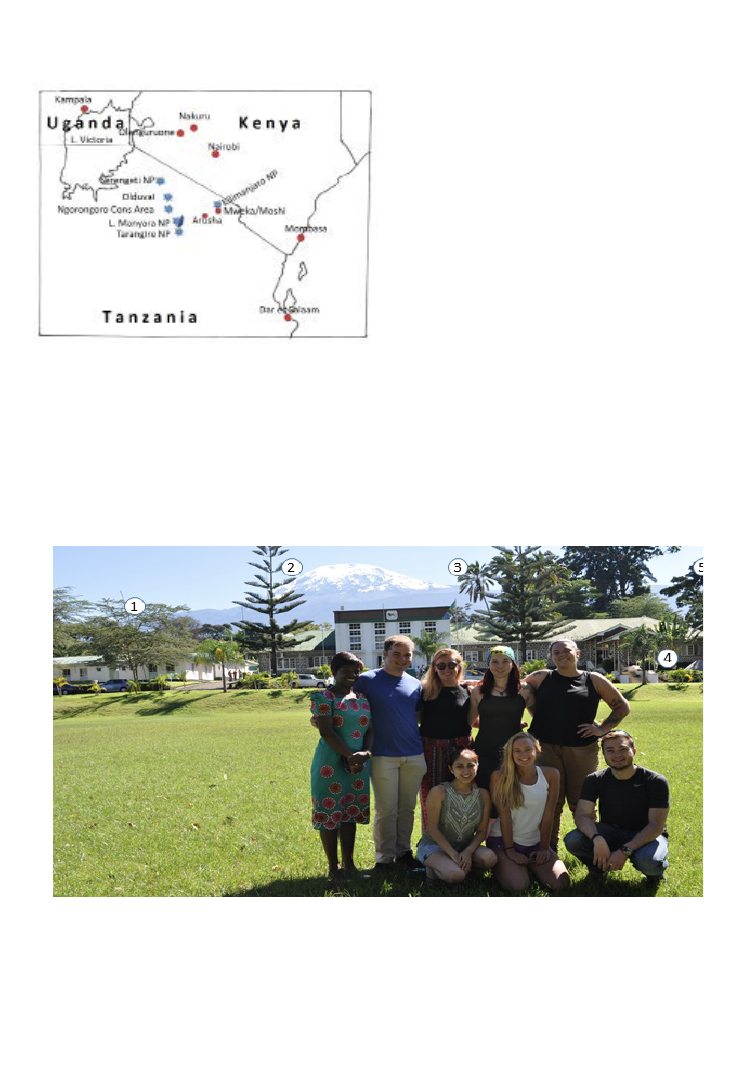
PSB 69 (2) 2023
116
are strangler fig (Ficus thonningii), African
tulip (Spathodea campanulata), and the giant
potato tree (Solanum macranthum). Strangler
fig is of particular interest to North American
students with its unfamiliar appearance and
lifestyle. A hemiepiphyte, it starts atop a
host tree and sends roots down to the forest
floor, squeezing the trunk of the host tree and
shading its crown, eventually killing it.
Mweka is located on the lower slopes of Mt.
Kilimanjaro at about 1370 m. At slightly lower
elevations, the landscape is devoted to coffee
plantations. Two wet seasons—a shorter
one that runs November to January and a
longer one from March to May—supply an
annual rainfall of 100–165 cm and support
a lush, wooded environment. Hiking up
from the college toward one of the entrances
to Kilimanjaro National Park at elevation
Figure 1. Star symbols show the National
Parks and Olduvai Gorge Museum we visited
in Northern Tanzania. The Snake Park, Maasai
Museum, and Maasai Boma, just outside Lake
Manyara, are other significant sites we visited
but are not shown on this map. The College of
African Wildlife Management (Mweka) is at
the base of Kilimanjaro.
Figure 2. Students of the 2018 class on the Mweka campus, along with a Mweka faculty member,
Mt. Kilimanjaro in the background. The weather in May was usually overcast, and of the three
times we have offered the class, this was the only time we had a sustained clear view of Mt. Kili-
manjaro. 1. Fever acacia, 2. Norfolk pine, 3. Senegal date, 4. Traveler’s palm, and 5. Pencil cedar.
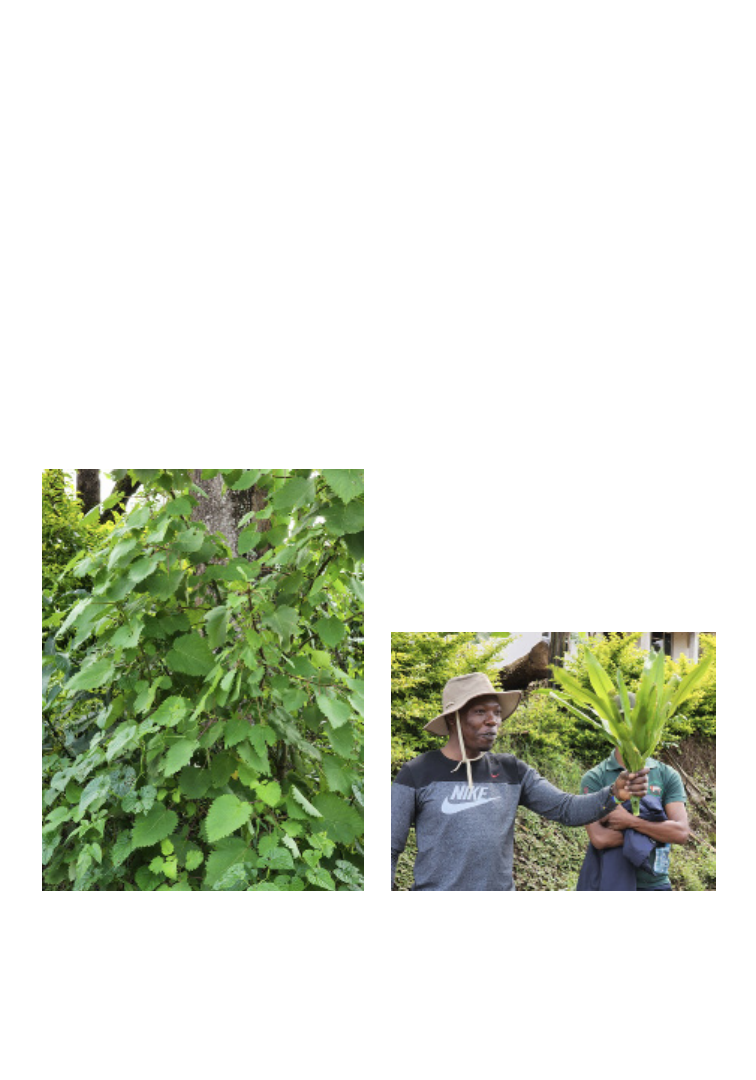
PSB 69 (2) 2023
117
1640 m, we passed through a landscape of
small villages, home to the Chagga tribe, the
houses and other buildings interspersed with
household gardens planted with banana, coffee,
maize, sweet potato, beans, and cassava. These
so-called Chagga homegardens, built into the
forest over centuries, are a fascinating example
of sustainable land use in a mixed-cropping
system (Fernandes et al., 1985; Hemp, 2008).
The coffee-banana belt occupying the lower
flanks of Kilimanjaro is a modified woodland,
with the canopy intact and shade-tolerant
crops integrated into the forest; over 500 plant
species, 400 of which are not cultivated, can
be found in this zone (Hemp, 2006, 2008).
The typical Chagga homegarden comprises
four main layers: larger trees like avocado
(Persea americana) and albizia (Albizia
schimperiana var. amanuensis), beneath
which grow different varieties of bananas
(Musa x sapientum) 5–7 m high, then coffee
(Coffea arabica), and at the base a mixture
of smaller food crops like cassava (Manihot
esculenta) and coco yam (Colocasia esculenta).
These crops make up a large part of the local
diet, and the extras (particularly coffee) are
sold for cash. Bananas are perhaps the largest
single crop, and we were fascinated by the
variety of ways in which the Chagga use them.
One interesting use is the making of mbege,
a strong beer made up of fermented banana
mixed with a borage of finger millet and some
quinine-bark flour to adjust the sugary taste
of banana. Numerous small pubs serving the
drink line the roads outside the National Park.
Besides sampling the mbege on our hike, we
also introduced our students to several plants
with medicinal and folk uses, including castor
bean (Ricinus communis), misty plume bush
(Tetradenia riparia) (Figure 3), and dragon
tree (Dracaena afromontana) (Figure 4).
Figure 3. Tetradenia riparia, a plant found
in the Chagga homegardens, which our hosts
claimed worked as a COVID-19 treatment ei-
ther by chewing the leaves or as steam therapy.
Figure 4. Among the Chagga, Dracaena mar-
ginata is used to build fences and mend rela-
tionships—one must forgive when the plant is
offered by the offender.

PSB 69 (2) 2023
118
The Chagga gardens provided the students an
education in a type of agricultural system that,
while unfamiliar to North Americans, is fairly
widespread, particularly in the tropics, among
indigenous cultures. For example, K.I.M.
witnessed similar homegardens in southern
Ethiopia, with an upper layer of ensete (Ensete
ventricosum); below it, sorghum, millet, or
maize; and a bottom layer of smaller crops,
such as beans and vegetables (Zemede and
Avele, 1995). In parts of Ecuador, inhabitants
practice two systems of agriculture: small
fields closer to their homes and homegardens.
These gardens and fields contain over 50
plant species including cacao, coffee, banana,
pineapple, cassava, and a variety of other
food and non-food crops (Gari, 2001). Fields
are cultivated and managed, and abandoned
according to a complex agroecological system
(Gari, 2001). Diversified systems such as these
ensure the resilience of ecosystems and at the
same time maximize the production of food,
medicines, and other resources. The study
of these systems has much to contribute to
improving the effectiveness and efficiency
of sustainable agroecosystems worldwide,
by integrating indigenous knowledge with
scientific methodology (Dewalt, 1994).
After a couple of days at the college, we piled
into the troop carrier, accompanied by two
Mweka faculty members who would serve as
our guides and interpreters, along with the
cook and his helpers. We drove several hours
to Mto Wa Mbu, staying in a tent campground
in the forested hills above the town. Nearby
Lake Manyara National Park is the smallest
of the parks we visited, with an area of 325 sq
km but known for its diverse habitats, which
harbor nearly 700 plant species (Greenway
et al., 1972); in fact, the density and diversity
of wildlife here is extraordinary. Any fears
that our zoology students might have been
disappointed in their safari were quashed
within minutes of entering this park, as we
soon had up-close views of baboons, zebras,
wildebeest, warthogs, elephants, monkeys,
and lions.
This park differs from the others that we
visited in that much of it is densely wooded,
whereas the others are characterized by
open savannah. Most of the park’s roads run
through the narrow flats bounded by the
alkali lake on one side, and the steep sides of
the Rift Valley on the other. The woodland
is dominated by large, dense Acacia and
Commiphora species, Albizia anthelmintica,
and Cassia singueana, with a variable
understory shrub layer. Notable among these
is African myrrh (Commiphora africana),
from the resins of which incense is produced.
The slopes, which rise 600–1000 m above lake
level, feature baobabs (Adansonia digitata),
broad-leaved croton (Croton macrostachyus),
candelabra tree (Euphorbia candelabrum),
sycamore fig (Ficus sycomorus), quinine tree
(Rauvolfia caffra), Natal mahogany (Trichilia
roka) (also noted for its medicinal extracts
[Sanogo et al., 2001]), and forest toad-tree
(Tabernaemontana ventricosa) (Greenway et
al., 1969, 1972). Closer to the lake are open
alkaline flats beds dominated by grasses,
mainly Sporobolus spicatus in association with
Sporobolus consimilis, whereas the drier grassy
areas are dominated by Cynodon dactylon.
Tarangire National Park is about 70 km
south of Lake Manyara. Although both parks
receive similar amounts of rain (about 70 cm
annually), Tarangire seems drier than Lake
Manyara National Park, with open water
flow largely limited to the Tarangire River, in
contrast to the multiple springs and creeks
draining through the steep hillsides of Lake
Manyara. It is grassier and much more open,
with only scattered trees. Nonetheless, many
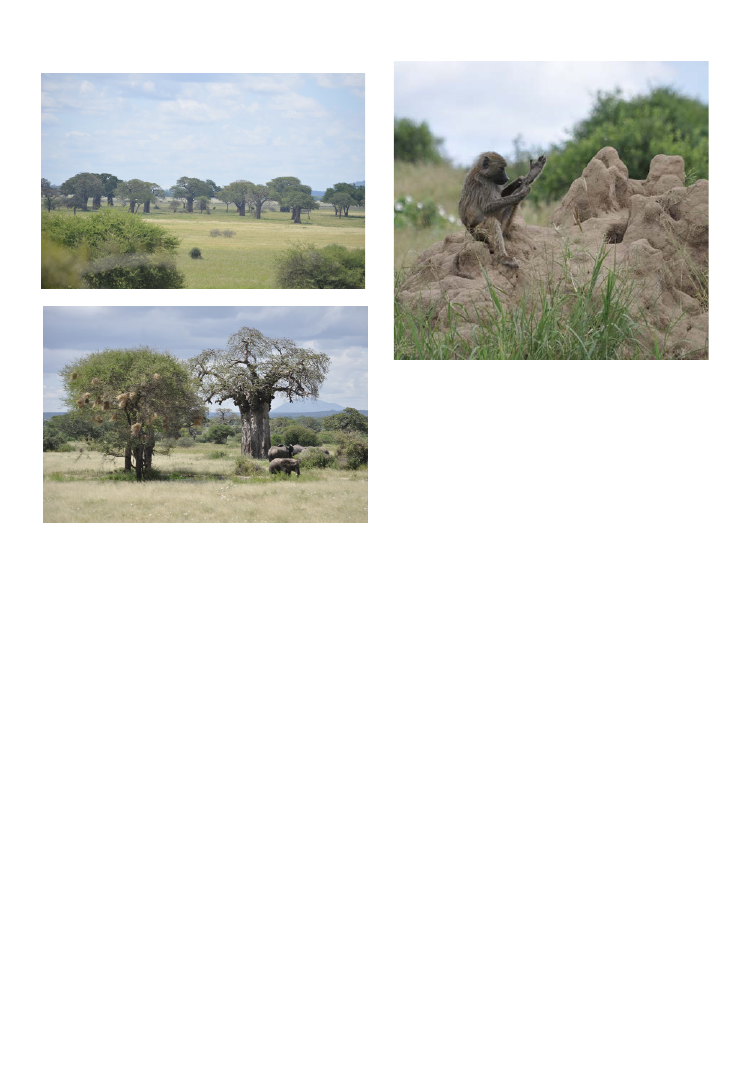
PSB 69 (2) 2023
119
of the same animals occur at the two parks,
and there is significant migration between
them.
Tarangire is renowned for its large elephant
herds, but we were just as thrilled by the
botanical “big game” of its many enormous
baobabs (Adansonia digitata). We saw more
extensive stands of these trees than at any
other place we visited in Tanzania (Figure 5A, B).
These long-lived, majestic trees reach up to 25
m, with wide spreading branches and stout
trunks measuring 10–15 m across. Baobabs
are known among the most effective plants that
control water loss. Some baobabs in Tarangire
had been heavily damaged by elephants
seeking nutrients and water, bringing to our
attention the many uses of baobabs by both
people and wildlife. They are important for
the livelihood of many people in arid zones
for uses in food, beverages, and medicine. The
hollow trunk of some specimens can provide
shelter, and the tubers, twigs, fruits, seeds,
leaves, and flowers are common ingredients in
traditional dishes and beverages; they provide
a reliable food and water source for birds,
baboons, and other animals (Gebauer et al.,
2002; Venter and Venter, 2007).
Besides the baobabs, Tarangire’s vegetation is
a mix of Acacia and Combretum woodlands
and seasonally flooded grasslands. Along the
riverbanks, we saw pure Acacia stands and
occasional sausage trees (Kigelia africana).
The drier habitats are highly suited for mound-
building termites and feature numerous, often
very large mounds (Figure 6), to the delight of
the entomologist in the group.
A
6
Figure 5. (A) Tarangire, the land of baobab.
(B) Elephants, a baobab, and an acacia bear-
ing dozens of weaverbird nests. Note the cin-
der cone in the background. There are dozens
of such volcanic features in northern Tanzania
(including Kilimanjaro), most of them inactive.
Figure 6. A termite mound in Tarangire Na-
tional Park, with a young baboon. The rest of
his troop was in a nearby baobab, devouring
the fruits and plundering bird nests.
B
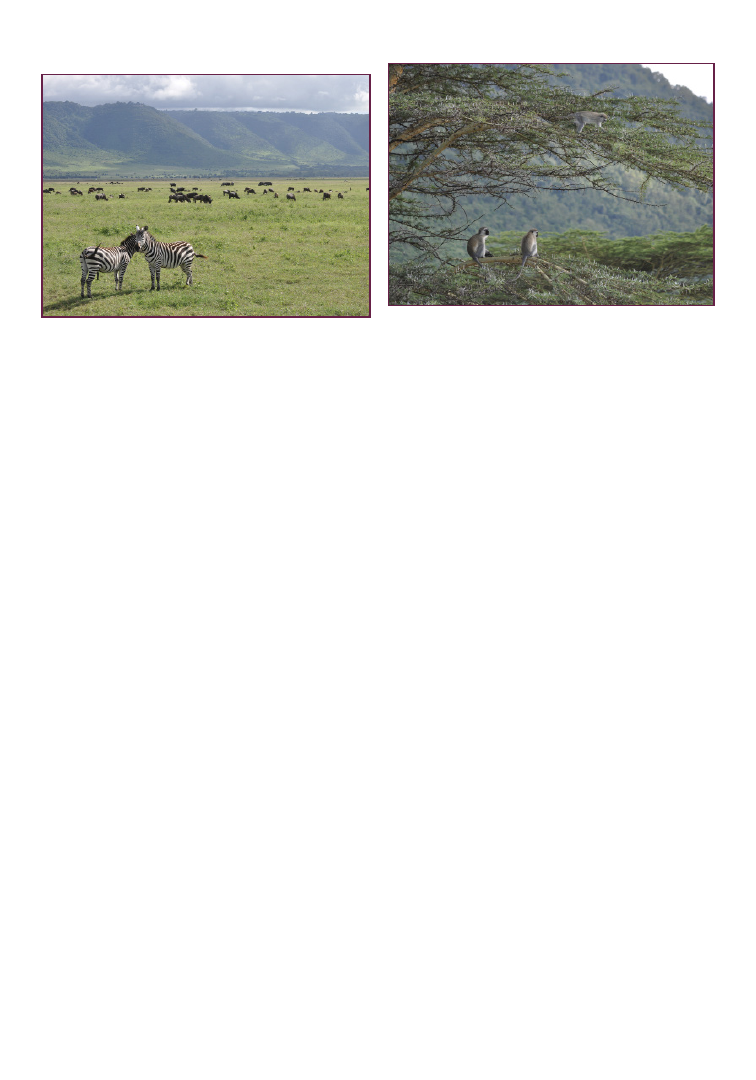
PSB 69 (2) 2023
120
From the dry lowlands (ca. 900 m elevation)
around Manyara and Tarangire, we ascended
into the cloud forests at the rim of Ngorongoro
Crater, where we camped overnight. Through
the mists, we began to see astonishing views
of the crater, which is the world’s largest intact
and unfilled volcanic caldera, some 610 m
deep and around 17 km across. At 2300 m
elevation, the rim is persistently cool and
damp. The steep interior slopes of the crater
are occupied by a variety of montane forest
trees, including red thorn acacia (Vachellia
gerrardii) and gum acacia (Acacia senegal),
stands at the edges (Figure 8). The highlight
of the crater was a close view of the gravely
endangered black rhino, made possible when
we connected with some of the “rhino rangers”
assigned to protect the crater’s rhino herd. The
rangers were alumni of Mweka College and
arranged our viewing with our faculty guides,
their former professors. Only a few dozen
rhinos live here. The ranger team follows each
animal’s activities closely, using cameras and
tracking devices. Injured or sick rhinos are
given aid (which is not done for other species).
Although the topography limits poaching in
this preserve, it is still a serious concern here
as elsewhere.
Most of the crater floor is grassland, with some
small sections of standing water surrounded
by swampy areas (Anderson and Herlocker,
1973). In late May, at the end of the rainy
season, we found many roads still muddy
or inundated. Few trees exist at the floor,
mainly near the swamps and the edges of the
crater, including species of Acacia, Vangueria,
Commiphora, Albizzia, and Rauvolfia.
Common herbaceous plants include species
of Chloris, Cynodon, Digitaria, Andropogon,
Figure 7. A typical grassland habitat in
Ngorongoro crater with a mixed herd of ze-
bras, Cape buffalo, and wildebeest; in the back-
ground, the rim rises some 600 m above the
floor of the crater.
sweet olive (Osmanthus fragrans), African
redwood (Hagenia abyssinica), and African
pencil cedar (Juniperus procera), with fever
acacia dominating the lower portions. Enormous
candelabra trees also cling to the hillside.
The morning after arriving at the rim, we
descended the steep switchback road through
these woodlands to the bottom, where we
were rewarded by views of the elephants,
lions, zebras, wildebeest, hyenas, and other
wildlife that congregate in the lush grassy
wetlands (Figure 7) and the fever acacia
Figure 8. The walls of Ngorongoro crater, vis-
ible in the background with their dense forest,
descend into stands of large fever acacia around
the base (here with a group of vervet monkeys).

PSB 69 (2) 2023
121
Sporobolus, and Leucas. We also encountered
several invasive species: yellow flower bidens
(Bidens schimperi), wild cannabis or khaki
weed (Tagetes minuta), and purple flower
gutenbergia (Gutenbergia cordiflora)—the
latter two species in particular implicated in
dramatic alterations to the native flora of the
crater in recent years (Ngondya and Munishi,
2021). Bidens schimperi has edible leaves, and
Tanzanians claim that the roots cure coughs
and colds.
Ngorongoro Crater is situated between the
Serengeti plains on the northwest and the
Rift Valley to the east, and together with
surrounding lands comprises the larger
Ngorongoro Conservation Area (NCA), a
UNESCO World Heritage Site that is home to
many Maasai, albeit with restrictions on their
use of the land. The NCA has been celebrated
as a model for cooperative conservation, the
semi-nomadic, pastoralist Maasai coexisting
with protected game (we saw many mixed
herds of cattle, goats, zebras, giraffes, and
gazelles), but for the Maasai the story has
been fraught with tensions (Buzinde et al.,
2014; Melubo and Lovelock, 2019). Many
moved to the NCA after being evicted from
the adjacent lands that were designated as
Serengeti National Park in 1959. The crater
itself was made off-limits to the Maasai for
pastoral use and habitation in 2009. One of
the Mweka faculty members accompanying
us was a Maasai who grew up in a village near
the crater rim and recalled bringing his herds
into the crater as a boy. More recently, the
Tanzanian government has moved to further
restrict Maasai use of the NCA, leading to the
possibility of another round of displacement.
From the crater, we descended into the
Serengeti plains, traveling toward Serengeti
National Park. This stretch is in the rain
shadow of the crater rim and adjacent
uplands, an ecosystem dominated by dry
grasslands and thickets of stunted acacia
species, including whistling acacia (Acacia
drepanolobium syn Vachellia drepanolobium).
Before entering the park, we stopped at
Olduvai Gorge and its visitor center (Figure
9), with its excellent museum chronicling the
paleoanthropological discoveries made in the
adjacent ravine by Louis and Mary Leakey and
their colleagues. It was here that the Leakeys
found the key fossils that consolidated the
evidence for an African origin for the human
species. Excavations in the area are ongoing.
We didn’t see much wildlife here—a few troops
of baboons—but as evolutionary biologists
we were thrilled to explore the Leakeys’
field sites. Incidentally, the name “Olduvai”
comes from (a mispronunciation of) oldupai,
the Maasai word for sisal (Agave sisalana)
(Figure 9), which is abundant in this area.
Although native to Central America, sisal has
been cultivated for commercial purposes in
Tanzania since the 1880s, and grows wild near
the gorge (Carr et al., 2006).
Figure 9. Entrance to Olduvai Museum with
sisal plants lining the road on either side.
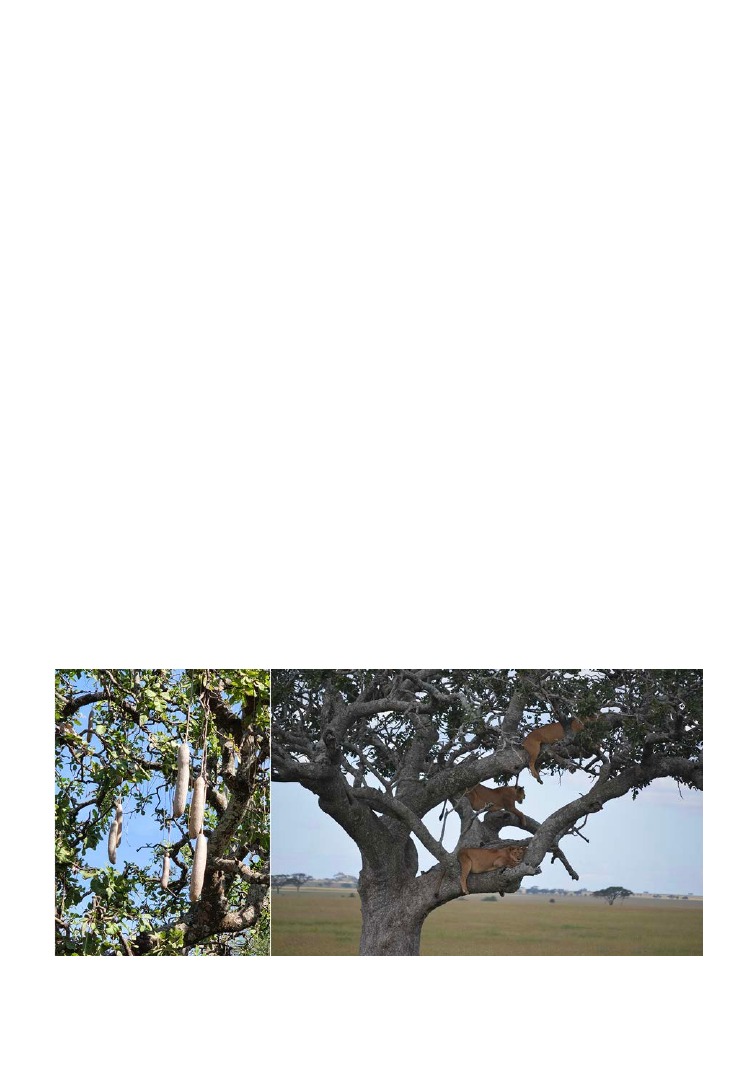
PSB 69 (2) 2023
122
We spent four nights in Serengeti National
Park. The park is large, extending some 150 km
south from the Kenya-Tanzania border and
150 km southeast from points near the shores
of Lake Victoria, with elevations ranging from
900 to 1800 m. Much of it is rolling plains, with
as many as 200 species of grasses (Williams
et al., 2016), characterized by short and tall
grasslands and small stretches of woody
savannah dominated by Acacia, Vachellia,
Commiphora, palms, and sausage trees. The
short grasslands in the eastern parts of the
park are dominated by Sporobolus and Kyllinga
species, while the tall grasslands in the west
are dominated by Pennisetum, Andropogon,
and Themeda species (Lind and Morrison,
1974). Intermediate grasslands of Cynodon
and Sporobolus are found between them.
McNaughton (1983) divided the Serengeti
grasslands into 17 different communities
including 6 short grassland communities,
3 tall, and 8 intermediate. Anderson and
Talbot (1965) and Lind and Morrison (1974)
attributed the distribution and growth of grass
species in the plains to a number of factors,
including soil depth and texture, salinity, wind
erodability, rainfall, and grazing pressure.
The diversity of grasses may have failed to
capture the interest of our zoology students,
but they could not help but notice the
scattered trees, which were focal points for
wildlife observation. Predators frequently
climb them, to scan for prey and possibly also
to avoid biting flies. We often spotted lions
and leopards on sausage trees (Figure 10) and
acacias; once, we counted 11 lions (females
and several cubs) lounging in a large acacia
(Figure 11). The sausage trees, which we had
first spotted in Tarangire National Park, are
particularly interesting. These semi-deciduous
trees are common and widespread in African
savannah, and they’re large, reaching up to 25
m. They are easily identified by the sausage-
like dangling fruits, which can be a meter
long (Figure 10). The fruits are poisonous
if consumed raw, but if prepared correctly
have significant food and medicinal value
(Jackson et al., 1996; Picerno et al., 2005).
Indigenous people make them into a beer and
have used them in wound healing and to treat
rheumatism, psoriasis, diarrhea, and stomach
ailments.
Figure 10. Serengeti lions resting on a sausage tree after a big meal. Notice the typical open
grassland with scattered trees, typical of this park. The insert on the left shows the sausage fruits.
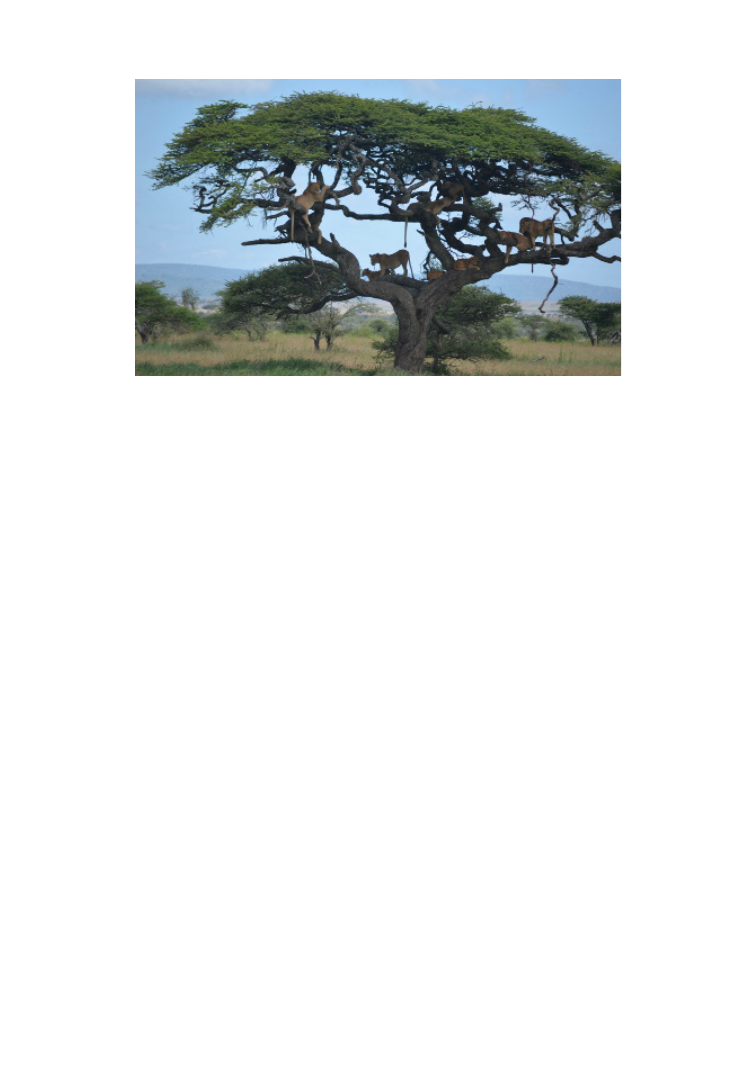
PSB 69 (2) 2023
123
Up to our arrival in the Serengeti we had been
astonished at the bounty of wildlife sightings;
and here we were astonished again, at the
sheer abundance and magnitude of the herds
in the park. Pools packed with hundreds of
hippos; gazelle, zebra, and elephant herds
so vast as to disappear into the horizon. We
witnessed thousands of migrating wildebeest
accompanied by zebras and trailed by cheetahs,
lions, and hyenas. Even our guides, who had
spent much time in the park, expressed joy,
wonder, and excitement at the scene.
While the animal highlights of a Tanzanian
safari would be well known to any fan of
BBC and PBS nature specials, the many
plant highlights are most fascinating as well,
and not only within the preserves. Driving
between parks, we saw numerous additional
species of interest, whether for their uses by
locals or for their familiarity as garden and
house plants in North America, and we had
opportunities to relate their stories to our
students. These included desert date (Balanites
aegyptiaca), with its edible fruits often serving
as fodder for goats and camels; sandpaper
bush (Ehretia obtusifolia), whose distinctive
tough leaves are infused into teas to treat
pain; frankincense (Boswellia papyrifera),
African chewing gum (Azanza garckeana);
toothbrush bush (Salvadora persica), which
is used as such and has added antiseptic and
analgesic effects (Niazi et al., 2016); and plants
commonly cultivated in North America such
as maidenhair fern (Adiantum venustum),
lantana (Lantana camara), and jimsonweed
(Datura stramonium). Jimsonweed is a large
herbaceous plant with well-known poisonous
and hallucinogenic effects (Trancă et al., 2017).
It occurs in North America but is seldom seen
in our part of New York.
Why would a botanist teach a “safari class”?
In a sense, it was under the guise of a wildlife
safari that we were able to expose our
students to a great many botanical wonders:
unfamiliar plants, plant communities, and
agroecosystems, as well as new insights into
familiar plants and products. They were
excited to taste the sweet pulp of the coffee
Figure 11. There were 11 lions in this umbrella acacia (females and
cubs), plus a few more on the ground, obscured by the tall grass (Seren-
geti National Park).

PSB 69 (2) 2023
124
fruit and dig out the green beans within, to
sample mbege made from bananas growing
just outside the pub, to see the plants from
which frankincense and myrrh originate,
and to learn the names of plants that provide
habitat, food, and water for animals. They
gained a new appreciation of indigenous and
folk uses of plants, most of them unfamiliar;
they learned about agroecosystems entirely
different from, and more sustainable than, the
typical North American farm; and they learned
about kinds of plants, such as strangler fig, that
behave very differently from any they know in
the U.S. The opportunity to view animals in
their native settings was the bait, perhaps, and
the wildlife viewing was wonderful indeed—
but we also aimed to stimulate these young
zoologists to learn more about the plants with
which their objects of study interact. Zoology
students, in our experience, are often reluctant
to study plants, but in Tanzania, through
hands-on study, they discovered that plants
and animals are inseparable when studied in
the field, and gained a new appreciation for
botanical knowledge.
By collaborating with faculty members at
Mweka, we were able to provide our students
with a rich learning experience focused on
wildlife conservation and ecology, subjects
outside our own areas of expertise. We
learned a great deal as well—about wildlife,
about Tanzanian ecosystems, about the effects
of climate change in this region, and about
political, economic, and cultural aspects of
species and habitat conservation in this part of
the world. In turn, we were able to share with
our Mweka colleagues some of our knowledge
of plants and insects, making the trip more
rewarding for everyone.
Field work in Africa can be expensive and
logistically difficult for scientists based far away
and with limited knowledge of local resources.
Organizing a class for undergraduates made
available to us with support from both our
own university and from Mweka, providing
a convenient and low-cost way to travel. Both
for us and for our students, the class was an
opportunity to work in a part of the world that
would otherwise have been very difficult for
us to visit.
ACKNOWLEDGMENTS
We thank the College of African Wildlife
Management and SUNY Oswego’s Office of
International Education and Programs for
making our Tanzania course possible; and
we thank Jim Seago and two anonymous
reviewers for comments on an earlier version
of this manuscript.
REFERENCES
Anderson, G. D., and L. M. Talbot. 1965. Soil
factors affecting the distribution of the grass-
land types and their utilization by wild ani-
mals on the Serengeti Plains, Tanganyika. The
Journal of Ecology 53: 33-56.
Anderson, G. D., and D. J. Herloacker. 1973.
Soil factors affecting the distribution of the
vegetation types and their utilization by wild
animals in Ngorongoro Crater, Tanzania.
Journal of Ecology 61: 627-651.
Briggs, P., and C. McIntyre. 2017. Northern
Tanzania Safari Guide: Including Serengeti,
Kilimanjaro, Zanzibar. Bradt Travel Guide
Publication. Chalfont St. Peter, England.
Buzinde, C. N., J. M. Kalavar, and K. Melu-
bo. 2014.Tourism and community well-being:
The case of the Maasai in Tanzania. Annals of
Tourism Research 44: 20-35.

PSB 69 (2) 2023
125
Carr, D. J., N. M. Cruthers, R. M. Laing, and
B. E. Niven. 2006. Selected mechanical prop-
erties of sisal aggregates (Agava sisalana).
Journal of Materials Science I41: 511–515.
DeWalt, B. 1994. Using indigenous knowl-
edge to improve agriculture and natural re-
source management. Human Organization 5:
123–131.
Fernandes, E. C. M., A. Oktingati, and J. Ma-
ghembe. 1985. The Chagga home gardens: A
multi-storeyed agro-forestry cropping system
on Mt. Kilimanjaro, Northern Tanzania. Food
and Nutrition Bulletin 7: 1-8.
Gari, J. 2001. Biodiversity and indigenous
agroecology in Amazonia: the indigenous
people of Pastaza. Etnoecologic 5: 21-37.
Gebauer, J., K. El-Siddig, and G. Ebert. 2002.
Baobab (Adansonia digitata L.): a review on a
multipurpose tree with promising future in the
Sudan. Gartenbauwissenschaft 67: 155–160.
Greenway, P. J., and D. F. Vesey-Fitzgerald.
1969. The vegetation of Lake Manyara Na-
tional Park. Journal of Ecology 57: 127–149.
Greenway, P. J., and D. F. Vesey-FitzGerald.
1972. Annotated check-list of plants occur-
ring in Lake Manyara National Park. Journal
of the East Africa Natural History Society and
National Museum 28: 1–29.
Hemp, A. 2006. The banana forests of Kili-
manjaro: Biodiversity and conservation of the
Chagga home gardens. Biodiversity and Con-
servation 15: 1193–1217.
Hemp, A. 2008. The Chagga home gardens
on Kilimanjaro: Diversity and refuge func-
tion for indigenous fauna and flora in anthro-
pogenically influenced habitats in tropical
regions under global change on Kilimanjaro,
Tanzania. International Human Dimensions
Programme on Global Environmental Change
(IHDP) 2: 12-17.
Jackson, S. J., P. J. Houghton, A. Photiou, and
S. Retsas. 1996. The isolation of a novel anti-
neoplastic compound from a bioassay guided
fractionation of stem bark and fruit extracts of
Kigelia pinnata (Bignoniaceae). British Jour-
nal of Cancer 73: 68.
Kennedy, A. S. 2014. Birds of the Serengeti
and Ngorongoro Conservation Area. Princ-
eton University Press. Princeton, NJ.
Lind, E. M., and M. E. Morrison. 1974. East
African Vegetation. Longman. London, UK.
Luke, Q., and H. Beentje. 2020. 100 Trees to
see on Safari in East Africa. Penguin Random
House. Johannesburg, South Africa.
Makunga, J. E. 2022. Field Guide of Tanzania
Plants. White Falcon Publishing. Chandigarh,
India.
McNaughton, S. J. 1983. Serengeti grassland
ecology: The role of composite environmental
factors and contingency in community orga-
nization. Ecological Monographs 53: 291-320.
Melubo, K., and B. Lovelock. 2019. Living
inside a UNESCO World Heritage Site: The
perspective of the Maasai community in Tan-
zania. Tourism Planning & Development 16:
197-216.
Ngondya, I. B., and L. K. Munishi. 2021.
Impact of invasive alien plants Gutenbergia
cordifolia and Tagetes minuta on native taxa
in the Ngorongoro crater, Tanzania. Scientific
African 13: e00946.
Niazi, F., M. Naseem, Z. Khurshid, M. S. Za-
far, and K. Almas. 2016. Role of Salvadora
persica chewing stick (miswak): A natural
toothbrush for holistic oral health. European
Journal of Dentistry 10: 301-308.

PSB 69 (2) 2023
126
Picerno, P., G. Autore, S. Marzocco, M. Mel-
oni, R. Sanogo, and R. Aquino. 2005. Anti-
inflammatory activity of verminoside from
Kigelia Africana and evaluation of cutaneous
irritation in cell cultures and reconstituted hu-
man epidermis. Journal of Natural Products
68: 1610-1614.
Sanogo, R., M. P. Germanò, V. D’Angelo, A.
M. Forestieri, S. Ragusa, and A. Rapisarda.
2001. Trichilia roka Chiov. (Meliaceae): phar-
macognostic researches. Farmaco 56: 357-
360.
Sinclair, A. R. E., K. L. Metzger, A. R. S.
Mduma, and J. M. Fryxell. 2015. Serengeti
IV: Sustaining Biodiversity in a Coupled
Human-Natural System. Chicago University
Press, Chicago, IL.
Trancă, S. D., R. Szabo, and M. Cociş. 2017.
Acute poisoning due to ingestion of Datura
stramonium - a case report. Romanian Journal
of Anaesthesia and Intensive Care 24: 65-68.
United Republic of Tanzania. 2014. Report on
the Implementation of the Convention on Bi-
ological Diversity. Website: https://www.cbd.
int/doc/world/tz/tz-nr-05-en.pdf
United Republic of Tanzania. 2015. National
Biodiversity Strategy and Action Plan 2015-
2020. Website: https://www.fao.org/faolex/
results/details/en/c/LEX-FAOC170299.
Venter, F., and J. A. Venter. 2007. Making the
most of indigenous trees. Briza Publications,
Singapore.
Williams, E. V., J. E. Ntandu, P. Ficinski, and
M. Vorontsova. 2016. Checklist of Serengeti
ecosystem grasses. Biodiversity Data Journal
4: e8286.
Winks, Q. 2009. Tanzania - Culture Smart!
The Essential Guide to Customs & Culture.
Kuperard, London.
Zemede, A. and N. Avele. 1995. Home-gar-
dens in Ethiopia: characteristics and plant di-
versity. Sinet, an Ethiopian Journal of Science
18: 235-266.
Walk-in
Plant
Growth
Rooms
Reach-in
Plant
Growth
Chambers
biochambers.com
477 Jarvis Ave, Winnipeg, Canada, R2W 3A8
Toll Free: 1-800-361-7778
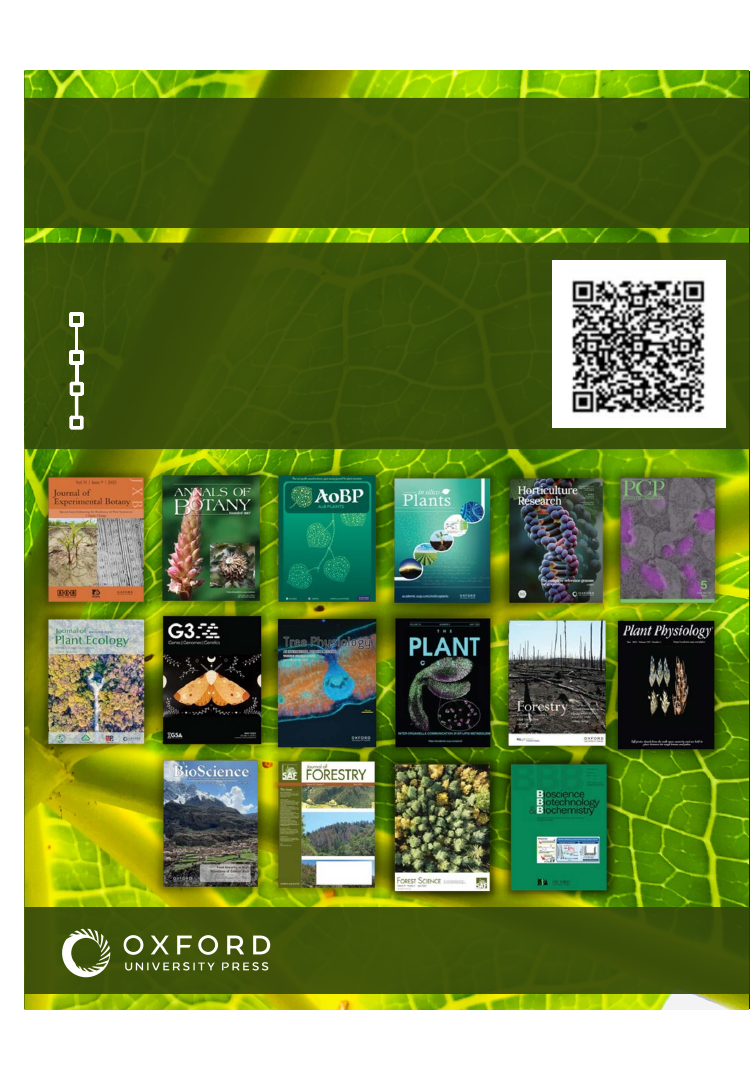
PSB 69 (2) 2023
127
OUP Plant Science Hub
Bringing together hundreds of articles from across all our
plant science journals, organized thematically for the first time.
Plant Resilience
Sustainable Plant Production
Developing Technologies
Plant Science to Improve Health
Explore the topic hubs now >>

PSB 69 (2) 2023
128
128
By
Amelia Neely
BSA Membership &
Communications
Manager
E-mail: ANeely@
botany.org
MEMBERSHIP NEWS
Botany360 (https://botany.org/home/resources/
botany360.html) is a series of programming that
connects our botanical community during the
360 days outside of Botany Conferences. The
Botany 360 event calendar is a tool to highlight
those events. The goal of this program is to
connect the botanical science community
throughout the year with professional
development, discussion sessions, and
networking and social opportunities. To see
the calendar, visit botany.org/calendar.
Botany360 Event Recordings
Now Available
We are excited to now offer the following event
recording from our Spring 2023 Botany360 events:
• Making the most out of Bota-
ny 2023 - A Student Conference
Guide (May 26, 2023) [Available
at: https://youtu.be/1CiRBSs45kw]
Workshop presented by BSA Student
Representatives, Ioana Anghel and
Eli Hartung.
Are you attending the Botany Conference
for the first time this July? Or are you looking
for tips on how to make the best of the
conference as a student? This workshop goes
over student-specific events, how to organize
your time, how to make your trip as affordable
as possible, and how to successfully network.
It also goes over ways to make the best out of
attending virtually. (Also see the student reps’
article in this issue of the PSB.)
You can also find past recordings that can be
accessed for free at https://botany.org/home/
resources/botany360.html, including:
• De-mystifying the MS submissions
process: Before you submit (Part 1 & 2)
• Applying to Grad School - A Q&A
Session
• Intro to Reviews and Meta-Analysis
• Webinar & Discussion #1: Learning
to Write Your Story Well

PSB 69 (2) 2023
129
• Webinar & Discussion #2:
Getting
Your Paper Published: An Editor’s
Perspective
BSA LEGACY SOCIETY
Thank you to all of our Legacy Society
members for supporting BSA by including
the Society in your planned giving. We look
forward to hosting you at this year’s Legacy
Society Reception at Botany 2023 in Boise,
Idaho. If you are interested in joining the
Legacy Society, you are welcome to come to
the event and sign up in person or by filling out
the form at https://crm.botany.org/civicrm/
profile/create?gid=46&reset=1 at any time.
The intent of the Botanical Society of
America’s Legacy Society is to ensure a
vibrant society for tomorrow's botanists, and
to assist all members in providing wisely
planned giving options. All that is asked is
that you remember the BSA as a component
in your legacy gifts. It’s that simple—no
minimum amount, just a simple promise to
remember the Society. We hope this allows all
BSA members to play a meaningful part in
the Society's future. To learn more about the
BSA Legacy Society, and how to join, please
visit: https://botany.org/home/membership/
the-bsa-legacy-society.html.
BSA SPOTLIGHT SERIES
The BSA Spotlight Series highlights early
career scientists in the BSA community and
shares both scientific goals and achievements,
as well as personal interests of the botanical
scientists, so you can get to know your BSA
community better.
Here are the most recent Spotlights:
• Mario Blanco-Sánchez,
Gradu-
ate Student, Universidad Rey
Juan Carlos, Madrid, Spain
Biología y Geología, Física y Quími-
ca Inorgánica
(https://botany.org/
home/careers-jobs/careers-in-botany/
bsa-spotlight-series/mario-blanco-
sanchez.html)
• Trinity Depatie, Graduate Student,
University of South Carolina, Biologi-
cal Sciences (https://botany.org/home/
careers-jobs/careers-in-botany/bsa-
spotlight-series/trinity-depatie.html
• Matias Köhler, Postdoctor-
al Fellow, São Carlos Univer-
sity (UFSCar), São Paulo, Brazil
Biology Department (https://
botany.org/home/careers-jobs/
c a r e e r s - i n - b o t a n y / b s a - s p o t -
light-series/matias-koehler.html)
• Kathryn Vanden Hoek, Un-
dergraduate Student, Univer-
sity of Missouri - Columbia
Division of Biochemistry (https://
botany.org/home/careers-jobs/
careers-in-botany/bsa-spotlight-
series/kathryn-vanden-hoek.html)
Would you like to nominate yourself or
another early career scientist to be in
the Spotlight Series? Fill out this form:
https://forms.gle/vivajCaCaqQrDL648.

PSB 69 (2) 2023
130
BSA PROFESSIONAL
HIGHLIGHTS
New this year, we are including a BSA
Professional Member Highlights section
each month in the Membership Matters
newsletter. If you would like to be
highlighted, email me at aneely@botany.org.
Dr. Shannon Fehlberg,
Conservation Biologist,
Desert Botanical Garden
(Twitter: @sdfehlberg, Website: https://dbg.
org/research-conservation-staff/shannon-
fehlberg/)
Dr. Fehlberg works as the Conservation Biologist at
the Desert Botanical Garden in Phoenix, Arizona.
Her research uses phylogenetic and population
genetic approaches, along with other data, to
understand the evolution of rare plants and their
closest relatives. She is particularly interested
in resolving relationships among closely related
species and understanding the influences of genome
duplication (polyploidy), hybridization, geography,
and ecology on species diversification. Recently, her
work has focused on members of the cactus family,
including several species complexes in the hedgehog
genus, Echinocereus. Shannon is currently serving
as a rotating program officer in the Systematics and
Biodiversity Science Cluster at the National Science
Foundation, an incredibly enriching and rewarding
experience!
Wesley Knapp
Chief Botanist
NatureServ
(Twitter: @wmknapp, Websites: www.Wesley-
Knapp.com and www.NatureServe.org)
Wesley Knapp is the Chief Botanist
for NatureServe, a conservation nonprofit
providing the authoritative source for
biodiversity data on species and ecosystems
throughout North America. Wes is an
expert in numerous fields including plant
identification, taxonomy, systematics, and
extinct species. Wes’s current research
focuses on identifying and preventing plant
extinction events and describing undescribed
species. Wes has extensive field experience in
his previous positions as a field botanist with
the Maryland and North Carolina Natural
Heritage Programs. Wes is currently a PhD
student in Alan Weakley’s lab at UNC-Chapel
Hill.

PSB 69 (2) 2023
131
Dr. Mason Heberling
Assistant Curator of Botany
Carnegie Museum of Natural History
(Twitter: @jmheberling, Websites: masonheberling.
com, Blog: collectedonthisday.com)
Dr. Mason Heberling is an herbarium curator
and plant ecologist studying the functional
ecology of understory plant species in
temperate forests, especially in the context
of climate change and introduced species
invasions. As a museum curator, he strives to
facilitate and broaden the use of natural history
collections by students, researchers, and the
public. As a museum-based researcher, he uses
herbarium specimens, field experiments, and
observational data to understand basic plant
function and complex ecological interactions.
Dr. Karolina Heyduk
Assistant Professor
University of Connecticut
(Twitter: @kheyduk, Website: www.kheyduk.
net/)
Dr. Karolina Heyduk studies how plants have
evolved adaptations to cope with abiotic stress,
with a particular emphasis on understanding
the evolution of CAM photosynthesis. Her
research integrates plant physiology, genomics,
and phylogenetics and focuses mostly on
members of the Agavoideae (including agaves
and yuccas). She is also Director of the George
Safford Torrey herbarium at UConn.
BSA STUDENT
CHAPTER UPDATE
BSA Student Chapters are a great way to network
with peers within institutions of learning
through engaging activities, as well as take
advantage of special BSA discounts—including
a $10 Student Membership and discounted
registration to Botany Conferences.
Here are our current BSA Student Chapters:
• NEW - Bartoo Botanical Society -
Tennessee Technological University -
Student Chapter

PSB 69 (2) 2023
132
• Bucknell University - Student Chapter
• NEW - Idaho State University Botany
Club - Pocatello - Student Chapter
• IISER Bhopal Student Chapter
• L.H. Baileys Botany Bunch - Cornell
University - Student Chapter
• Northwestern University - Student
Chapter
• Oklahoma State University - Student
Chapter
• NEW - Old Dominion University -
Student Chapter
• Otterbein University - Student Chap-
ter
• South Dakota State University - Stu-
dent Chapter
• NEW - St. Louis Area - Student Chap-
ter
• The Botany Club of Louisiana State
University - Student Chapter
• University of Central Florida - Stu-
dent Chapter
• University of Hawai'i at Mānoa - Stu-
dent Chapter
• NEW - University of South Carolina -
Student Chapter
• Weber State University - Student
Chapter
Welcome to our New or Rejoining Student
Chapters! If you want to start a BSA Student
Chapter, contact me at aneely@botany.org.
BSA GIFT MEMBERSHIPS
This is a reminder that BSA Gift Memberships
are a great way to introduce students and
developing nations’ colleagues to the BSA
community. You can purchase one-year
($10) or three-year ($30) gift memberships
by visiting: https://crm.botany.org and
choosing “Give a Gift of Membership”.
Don’t have anyone specific for whom to
purchase a gift membership? Not a problem!
You can put your own name and email in the
gift membership fields and we will add that
donation to a list of memberships that we
offer to those who need financial assistance.
Questions about gift memberships, or other
ways to donate? Email me at aneely@botany.
org.

PSB 69 (2) 2023
133
FROM THE
PSB
ARCHIVES
60 years ago
C. A. Price from Rutgers wrote to the editor to argue for greater training in math, chemistry, and physics for
undergraduates in botany.
“To move freely along the highway of modern plant physiology, students need a solid understanding of physical
chemistry. For the student who knows he is heading for graduate study in physiology or biochemistry, physical
chemistry should obviously be taken as an undergraduate. But the principal problem lies in the advising of
students only generally oriented toward botanical or biological sciences. In many otherwise reputable institutions
a student may earn a B. A. or even an M. A. in botany without having a single course in college mathematics or
physics. Such a student, wishing later to enter physiology, would require no less than three consecutive years
making up undergraduate courses.
Price, C.A. 1963. Letter to the Editor. PSB 9(2): 7
50 years ago
An article by Beryl Simpson provides information on the status of women in botany.
“Let us now compare these figures with those of professional women in general. The first, and encouraging,
datum, is that the percentage of women with a professional interest in botany is higher than the average of
doctorates granted in the natural sciences as a whole (19% vs. 5.6%, or 7% vs. 5.6% if only the women with
professional titles are considered). . . .
The decrease in women entering professions in the forties through the sixties is a general phenomenon. . .
Although there is no data on the ages of the botanists in the Yearbook, it subjectively seems to me that there is a
bimodality in the ages of women botanists, with few women botanists who would have received degrees during
the period of 1940-1960. Many noted women botanists began their careers in the 20’s and 30’s, but few after World
War II.. . .
To increase the percentages of women in the professions will require several things: the removal of the obvious
hinderances of discrimination; a conscious effort to convince women that they are capable of pursuing a career
without losing the qualities of’ being a woman, and a generation during which we will hopefully dispose of our
current conditioning of men and women. The next few years will be a transition period, but I have no doubt that
the change will occur. The increase in interested individuals and new ideas that this change will cause could not
help but advance a profession.”
Simpson, Beryl 1973. Women in Botany PSB 19(2): 22-24
40 years ago
“The Center for Environmental Studies at Arizona State University is interested in publishing a newsletter
dedicated to computer (particularly microcomputer) software and applications for the natural sciences. The
newsletter would be published quarterly and would contain 1) a listing and short review of recent scientific
software,
with availability and compatibility specifications; 2) one or more articles on microcomputer
techniques -- how to download software for different systems, how to choose between a minicomputer
and a network of micros, etc.; 3) a form for advertising “custom” software -- a place where scientists
who have written software for specialized modeling or applications (for microcomputers, minis, or
main-frame) can list and describe programs for free use, exchange or sale.”
Assistance Needed for Science Software Newsletter. 1983
.
PSB
28(5): 35.
[Note:
The 1983 volumes 1-4 are missing from the digital archives. If you have a copy of these issues,
please contact the BSA office.]

PSB 69 (2) 2023
134
134
SCIENCE EDUCATION
By Dr. Catrina Adams,
Education Director
Jennifer Hartley,
Education Programs
Supervisor
Life has been busy for the PlantingScience
team. We just closed out our Spring 2023
session, which served over 1300 students!
Twelve of the projects they created received
Star Project designation; please come take
a look at them at plantingscience.org/
starprojects/sp-recent. Many thanks to Jin
Liao and Shan Wong, our coordinators, for
helping to keep things running smoothly,
and an additional big thank you to everyone
who stepped up to mentor students or serve
as leaders on the Master Plant Science Team.
BSA 2022-2023 MASTER
PLANT SCIENCE
TEAM MEMBERS
Each year, the PlantingScience team reaches
out to our society partners to ask them to
sponsor members of our Master Plant Science
Team. This leadership team mentors students
like our other participants, but they also take on
an advisory role with each teacher who works
with us each session. As MPST members, they
PlantingScience Updates!
support communication between the teachers
and the mentors working with student teams
within a class. Each week they report in on any
issues the group may be having, and they step
in when scientist mentors cannot respond to
student posts right away.
The BSA generously supports PlantingScience’s
Master Plant Science Team by sponsoring
early career scientists interested in taking part.
The 2022-2023 MPST members sponsored by
BSA included:
• Guadalupe Maldonado Andrade
• Israel Borokini
• Yanni Chen
• Ana Flores
• Nitin Gaikwad
• Waqar Hussain
• Devani Jolman
• Jacqueline Lemmon
• Allyssa Richards
• Juan Diego Rojas-Gutierrez
• Cierra Sullivan
• Jessica Szetela
Please join us as we thank these amazing people
for their contribution to our program. We
could not do what we do without their help.

PSB 69 (2) 2023
135
PLANTINGSCIENCE
NEEDS YOUR HELP!
PlantingScience’s next round of efficacy
research, Digging Deeper F2, kicks off in the
coming Fall 2023 session. This session will
include about sixty test classrooms in addition
to the usual classes who participate. With
this in mind, we are in desperate need of new
mentors!
If you, your colleagues, or your students might
be interested in working with a high school
team this fall, please consider registering for
an account at plantingscience.org and setting
yourself available to mentor. Mentoring
through PlantingScience is conducted
entirely online through an asynchronous
message board. The students’ teachers handle
instruction, so the mentors’ role is simply to
respond to student messages, answer their
questions, and provide encouragement and
advice. You’ll also be encouraged to share a
little about your own research and what life
as a plant scientist is like. The experience
is convenient and easy and takes at most an
hour per week. For more information, visit
plantingscience.org/getinvolved/mentor.
You can also apply to be a member of
our Master Plant Science Team. MPST
membership is available to early-career
scientists who are interested in taking on a
leadership role for one academic year (two
sessions, fall and spring). This role involves
more behind-the-scenes responsibilities
that may require up to 2 hours of time per
week during an active session, so our team
members are sponsored by a partner society
and receive membership discounts and other
benefits. For more information on the MPST,
visit plantingscience.org/getinvolved/mpst.
And of course, if you aren’t in a position to
participate directly, we would love your
support in spreading the word! Please share
this opportunity with other scientists in your
community and encourage them to check it
out.
SEE YOU IN BOISE!
Come visit our PlantingScience booth at
Botany this summer! We have a fun booth
planned in the exhibit hall, and we encourage
everyone planning to attend the conference to
drop by and check us out. If you’re currently a
mentor or MPST member, make sure to drop
by to pick up an appreciation gift. We’ll be
found next to the BSA booth.
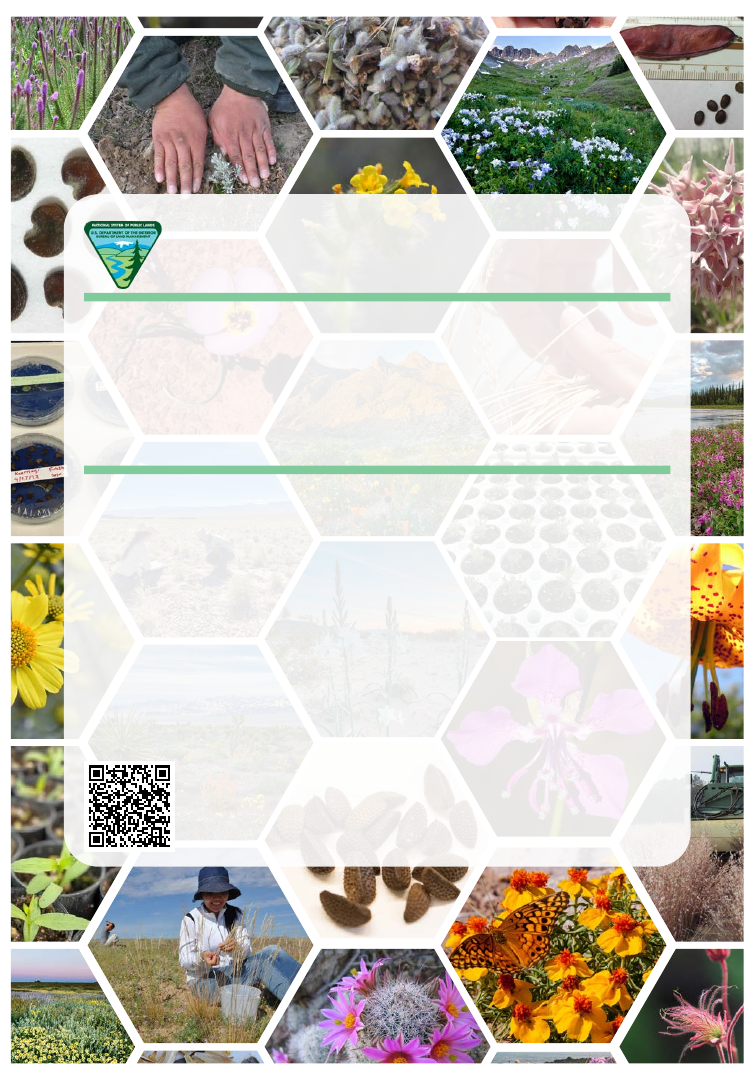
PSB 69 (2) 2023
136
Plant Conservation &
Restoration Program
U.S. Department of the Interior
Bureau of Land Management
Native plants are the true green infrastructure we rely on
for healthy, resilient, biodiverse ecosystems. As
wildfires and other climate-driven disasters continue to
devastate the U.S., the BLM Plant Conservation &
Restoration Program is implementing the National Seed
Strategy and conserving and restoring the native plant
communities that define America's iconic landscapes
and provide wildlife habitat, ecosystem services, and
recreational opportunities for all Americans to enjoy.
blm.gov/nativeplants
blm.gov/seedstrategy

PSB 69 (2) 2023
137
137
STUDENT SECTION
By Ioana Anghel and Eli Hartung
BSA Student Representatives
The Botany Conference is coming up very
soon. We are looking forward to seeing you
in Boise or virtually! With six days of lectures,
field trips, workshops, and socials, how can
you get the most out of the conference? Don’t
worry, we’ve got you covered with some
student-focused tips below. We discussed these
conference tips and more at our Botany360
event on Friday, May 26th “Make the Most out
of Botany 2023: A Student Conference Guide”.
See a recording of the event on the Botany360
page at: https://botany.org/home/resources/
botany360.html
If you have any questions or need any help
navigating Botany, please email us (Ioana:
ianghel@ucla.edu, Eli: elishartung@gmail.
com) or connect with us on Twitter (@ioana_
anghel and @hartung_eli). Also follow the BSA
social media accounts (Facebook: Botanical
Society of America; Twitter: @Botanical_;
Instagram: @botanicalsocietyofamerica) to
get the latest updates on the conference and
BSA activities.
Your Student Botany 2023
Conference Guide
CONFERENCE AT A
GLANCE
• Here’s a summary of the conference
schedule: Friday 7/21 – Sunday 7/23:
Field Trips
• Sunday 7/23: Workshops
• Monday 7/24 – Wednesday 7/26:
Regular talks and events
• Wednesday 7/26 evening: Confer-
ence-wide party
STUDENT-CENTERED
EVENTS
Join us for the many student-centered
conference events including a workshop, a
Careers in Botany Panel, two Student Socials,
and a Student Chapter Meet-up:
Workshop: Writing your CV and translat-
ing it into public facing website
Sunday, July 23, 8:00 AM – 12:00 PM
Let’s work together to create a comprehensive
description of your career in a CV format and
then create a website that will highlight those
achievements for the world to see. We will
first organize your skills and accomplishments

PSB 69 (2) 2023
138
in a CV that you can use for job, funding,
and nomination applications. Then we will
use these highlights of your career history
to design a website that can showcase your
research, teaching, publications, speaking
engagements, and service. At the end of this
workshop, you will have the tools to write a
well-developed CV and to create your own
website. You will also leave with a working
draft of a CV and a basic academic website
that you will be able to build up further in the
weeks to come.
In this workshop, you will:
1. Learn the basic structure of a CV and
best practices for writing it
2. Receive feedback on your CV from
peers and instructors
3. Learn the steps to create your own
website
Ǎ
Why create a website? Define
your audience and intentions for
having a website
Ǎ
Discover possible content to in-
clude and see good examples
Ǎ
Create a structure for your per-
sonalized website content (using
your CV as a starting point)
Ǎ
Work together to build a free
website
This workshop is for students and early-career
professionals. Please bring a draft of your
current CV to edit in class, a computer, and
any previous attempts at making a website.
This event costs $20 and has limited space -
register today!
Undergraduate Student Social
Sunday, July 23, 5:30 – 7:00 PM
Join us before the Plenary Talk for a chance to
meet fellow undergrads and make some new
friends to explore the rest of the conference
with.
Careers in Botany Luncheon
Monday, July 24, 12:00 – 1:45 PM
Come learn about career paths and experiences
from professionals from a variety of academic
disciplines and job titles. We will have rotating
small-group discussions so that everyone has
a chance to speak with our panelists. Check
out the Careers in Botany Profiles from the
2022 conference (https://botany.org/home/
careers-jobs/careers-in-botany/careers-in-
botany-profiles-2022.html).
This event costs $10 for students, $25 for non-
students with lunch included.
Student Social and Networking
Monday, July 24, 9:00 – 11:59 PM
After the full first day of the conference, please
join us to wind down, network, and socialize
with other students. This is another great
opportunity to make friends that you can
explore Botany and Boise with!
Registration is necessary and costs $10 for
students, $25 for non-students with a drink
and snacks included.

PSB 69 (2) 2023
139
Student Chapter Meet-up
Date and time TBD
Come chat with other students about how to
start a student chapter at your university or to
connect with other student chapters at other
schools. Look out for an announcement from
us about the date and time for this event.
If you already registered, you can still sign
up for events! Log into your registration
and “Modify Registration” at https://2023.
botanyconference.org.
GENERAL
CONFERENCE TIPS
Here are some ideas to make the most of the
conference:
• Plan out in advance the talks you want
to see and make a schedule for your
time. With so many events occurring
during the conference, planning each
day can be a challenge! The online
Botany Conference App gives you the
freedom to browse talks and events
and create your own easily accessible
schedule to stay on track. More infor-
mation about where to download the
App is coming soon! Be on the look-
out for an e-mail and/or check the
conference website for details.
• Don’t overpack your schedule with
too many talks to avoid burnout; plan
time to meet people and to rest.
• Think about who you want to meet
with in advance, and reach out to
them to see if they’d be willing to grab
a coffee or tea.
• If you are presenting, invite people
you meet to come see your talk.
Share your experience on social media with
the hashtags #BSAStudents and #Botany2023.
BUDGETING
Registration
• Register early for best price – early
registration deadline 5/31, or before
July 20
• Field trip reimbursements: Any grad-
uate or undergraduate student that is
a member of ASPT and/or BSA may
apply to have one field trip fee reim-
bursed, up to $100.00. Reimburse-
ments will be issued after the confer-
ence as a refund on your registration
credit card. Sign up Here! https://
forms.gle/M42jG2ujoRDvCzXbA
Volunteer at the conference
Did you know that you can earn your early
registration fee back by volunteering your
time at the conference? The conference would
not be able to happen without the help of
students who run the registration booth, help
at ticketed events, and make sure that sessions
run smoothly. Eight hours of service will
cover your registration, with opportunities
before and during the conference. For more
information, be sure to check your email as
well as the conference website.
Food
Find the included food events
Ǎ
Continental breakfast each morn-
ing of the conference
Ǎ
Coffee/Tea at coffee breaks

PSB 69 (2) 2023
140
Ǎ
Careers in Botany Luncheon –
Mon 12:00 PM (lunch), registra-
tion necessary
Ǎ
Student Social – Mon 9:00 PM
(substantial snacks), registration
necessary
Ǎ
Undergraduate Student Social –
Sun 5:30PM
Ǎ
Celebrate! All-society celebra-
tion – Wed 7:30 PM (substantial
snacks)
Ǎ
Affinity group events; some re-
quire registration
Shop for food at the grocery store (TJs 2 blocks
away from the conference center).
Conference center will have vegetarian, vegan,
gluten-free, dairy-free, and kosher options,
and the kitchen labels the food.
Accessibility
Ǎ
All talks will be in one location
at the conference center so there
won’t be any issue of running be-
tween buildings during the day.
Ǎ
The hotels with room blocks sur-
round the conference center, a
very short walk away (most are
less than 10 minutes away).
PRESENTING AT THE
CONFERENCE?
Ǎ
If giving a talk in person, you are
encouraged to submit a record-
ed presentation for the virtual
conference attendees or to have
someone record your talk at the
scheduled time and upload it.
Ǎ
Virtual presenters must pre-re-
cord their presentations and up-
load them to the platform by July
23rd.
NETWORKING TIPS
Meeting new people is hard, especially if you
are an introvert. A little planning in advance
can make networking a little easier. Here are
some ideas:
Ǎ
Come up with a plan about how
you will approach people.
Ǎ
Remember that people love to
talk about themselves, so asking
questions can help start conver-
sations.
Ǎ
Talking to people is more valu-
able than attending talks.
Ǎ
Use mutual connections to meet
people. Ask your advisor to intro-
duce you to people.
Ǎ
Introduce others to people they
might like to meet.
Ǎ
Meet new people at affinity group
events. This year the LGBTQ
and Friends Mixer is planned for
Tuesday (5:30–7:00 PM). In the
past, we’ve had a Black, Indig-
enous, and People of Color gath-
ering, a Bots with Tots gathering,
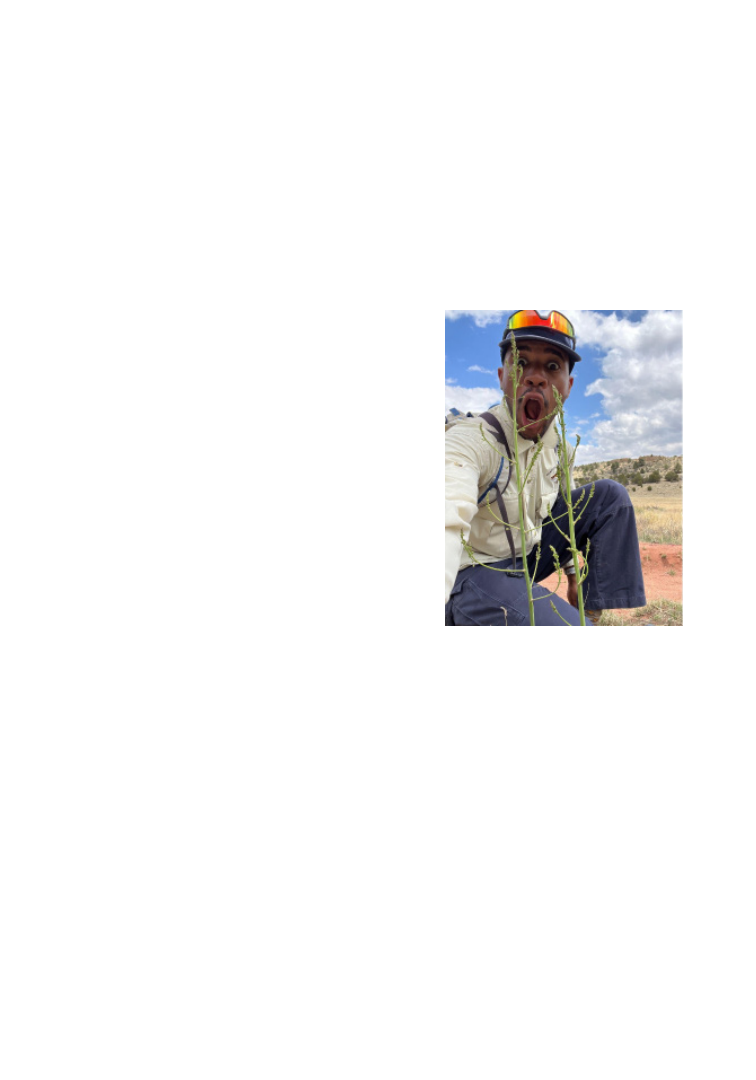
PSB 69 (2) 2023
141
an Asian/Asian-American/Pacif-
ic Islander mixer, a Disabled and
Allies mixer. Dates and times for
additional planned meet-ups to
come.
Ǎ
Be ready with a pitch about you
and your interests.
Ǎ
Get contact info from people you
meet (Twitter, email, etc.) and
have a follow-up topic to keep the
conversation going.
VIRTUAL CONFERENCING TIPS
Ǎ
Treat it as if you were at the con-
ference in person by giving it
your undivided attention and by
reaching out to people you would
like to connect with.
Ǎ
Avoid multitasking during talks.
Ǎ
If presenting virtually, make sure
to include your contact informa-
tion in your presentation so peo-
ple can get in touch with you.
Ǎ
Use the chat features in the con-
ference app to ask questions of
the presenters and to connect
with other attendees.
Ǎ
Don’t hesitate to reach out to peo-
ple who are attending the confer-
ence in person.
Ǎ
Be on the lookout for virtual spe-
cific events.
GETTING TO KNOW
YOUR NEW STUDENT
REPRESENTATIVE
We are excited to welcome our incoming BSA
Student Rep, Josh Felton. Josh’s term will begin
the day after the Botany Conference and last
for two years from 2023 to 2025. Get to know
them in the interview below.
Josh Felton
Incoming Plant Biology PhD student
at Cornell University
When did you join BSA and what motivated
you to do so? Will you encourage other
students to become members and participate
in the Society as well?
In July 2021, I became a member of the BSA
after taking part in the PLANTS program. It
was my advisor at the time, Dr. Rachel Jabaily,
who introduced me to both the program
and the Society, and she spoke highly of the
numerous benefits associated with being a
member.

PSB 69 (2) 2023
142
Since joining the BSA, my botanical journey
has been enriched in countless ways. One of the
most significant highlights has been attending
the renowned Botany conference. This annual
event serves as an invaluable platform for
expanding my botanical knowledge. The
conference offers a diverse range of sessions,
workshops, and presentations that expose
me to cutting-edge research, innovative
methodologies, and emerging trends in
the field. Each year, I eagerly anticipate this
gathering of like-minded individuals who
share a deep passion for botany.
Beyond the intellectual growth that Botany
provides, the BSA has connected me with
a vast network of professionals. I’ve had
the privilege of interacting with esteemed
botanists, researchers, and educators who
have not only inspired me but also become
valuable mentors in my journey.
In addition to the conference, I’ve been
thoroughly enjoying attending Botany360
events. These immersive experiences have
allowed me to delve deeper into specific
areas of botany, and the comprehensive range
of events that cater to diverse interests has
ensured there is always something new to
learn and explore.
From my initial exposure through the PLANTS
program to my ongoing participation in the
Botany conference and other BSA events, I
have gained invaluable knowledge, formed
meaningful connections, and expanded
my passion for botany. The BSA has truly
been a cornerstone of my botanical journey,
providing a supportive community and
invaluable resources that continue to fuel my
curiosity and growth in this fascinating field.
What motivated you to run for the position
of Student Representative to the Board of
Directors and what do you plan to do as the
student representative of BSA?
The motivation to run for the student
representative position stemmed from my
deep passion for building community and
my desire to actively contribute and advocate
for the needs and interests of fellow student
members. As a passionate student in the field
of botany, I have recognized the importance
of providing a platform for students to have
their voices heard and their perspectives
considered within the society.
As the student representative, I aim to
establish effective communication channels
between students and the Board of Directors.
I will actively engage with student members,
soliciting their feedback, ideas, and concerns,
and ensure that their voices are represented
during decision-making processes.
Additionally, I intend to promote professional
development opportunities specifically
tailored to students. This includes organizing
webinars, and workshops that focus on
honing essential skills, providing guidance
for career advancement, and facilitating
networking opportunities within the botanical
community.
Overall, my goal as the student representative
is to ensure that the BSA remains a supportive
and inclusive community for all students.
By actively listening to any concerns and
advocating for our interests I aim to empower

PSB 69 (2) 2023
143
student members and strengthen their
engagement within the BSA.
What’s your research about and how did you
discover your research interest?
My undergraduate research focused on
studying the reproductive biology of
Bromeliaceae (the pineapple family). As I
looked ahead to my future research in graduate
school, I discovered a new-found interest in
mating systems. It was while working on my
undergraduate thesis that I became fascinated
by the intricate nature of plant reproduction.
This sparked my desire to delve deeper into
the study of mating system evolution.
Mating systems in plants are determined
by a combination of morphological,
developmental, and physiological traits of
reproductive organs, which directly influence
the union of gametes. Understanding the
intricate interaction among these traits is
crucial in determining how plants mate.
While breeding system evolution has been
broadly investigated across angiosperms and
extensively studied in select model systems,
there remains a significant knowledge gap
regarding the phylogenetic distribution of
breeding systems in some of the largest and
most culturally and agriculturally important
angiosperm families.
In graduate school, my aim is to address this
knowledge gap and shed light on the breeding
systems of Bromeliaceae. I will focus on
exploring the evolutionary patterns of mating
systems while incorporating aspects of natural
history research.
Through this research, I hope to uncover
important insights into the adaptive
radiation and evolution of mating
systems in Bromeliaceae. By expanding
our understanding of breeding systems
beyond model systems, we can gain a more
comprehensive understanding of plant
reproduction as a whole and its implications
for both conservation and agricultural
practices.
What hobbies do you have?
One of my biggest passions is playing guitar,
which I’ve been playing off and on since I was
young. Lately, I’ve been particularly interested
in blues, indie folk, and bossa nova. I enjoy
experimenting with different chords and
melodies, and I find that playing music is a
great way to relax and unwind after a long day.
I also love to get outside and explore the
world around me. I’m an active person and I
love to channel that energy through outdoor
activities like ultimate frisbee and road biking.
I love the rush of adrenaline that comes with
chasing down a frisbee and making a great
catch, and the feeling of freedom that comes
with riding my bike down an open road.
Maybe my favorite hobby is botanizing. It’s
a great way to connect with nature and the
feeling of finding a plant that you’ve never seen
before is euphoric. Follow me on iNaturalist:
Josh_felton!
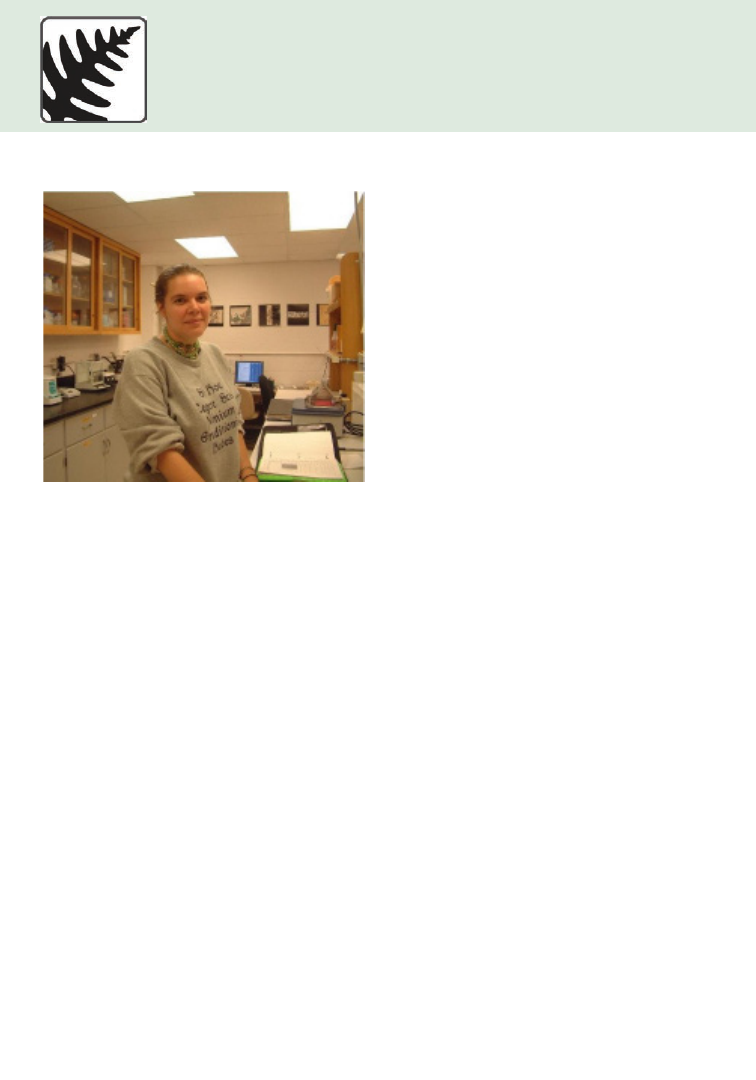
PSB 69 (2) 2023
144
144
AJ HARRIS
1979–2023
This year we lost another brilliant evolutionary
biologist much too early! AJ Harris lost
her battle with cervical cancer on January
15 at her home in Indiana at the young age
of 44. AJ started her academic career at
Alamance Community College in Graham,
North Carolina where she earned her high
school equivalency diploma in 2003, and was
recognized as the Distinguished Alumna of
the Year in 2016. She soon enrolled at North
Carolina State University (NCSU) majoring
in Religious Studies and minoring in Botany
after taking PB403-Systematic Botany with
Dr. Jenny Xiang. This curriculum sparked
an interest in plants that would inspire her to
not only to graduate with a minor in Botany
for her undergraduate degree (2005), but also
to complete a M.S. degree with Dr. Xiang on
AJ Harris in the Xiang Lab at NCSU in 2005
ANNOUNCEMENTS
IN MEMORIAM
Molecular and Morphological Inference of the
Phylogeny, Origin, and Evolution of Aesculus
L. in 2007 at NCSU. AJ published two peer-
review papers from her M.S. degree (Harris
et al., 2009; Harris and Xiang, 2009). In the
process, she spearheaded a method to account
for phylogenetic uncertainty in reconstructing
ancestral ranges in biogeographic analysis
with the DIVA method to serve her research
on Aesculus and published the method in the
second paper.
During this time, AJ began interacting with
colleagues in China, which led to fruitful
collaborations. Her keen understanding and
interest in computational biology allowed
AJ to contribute to the development of some
excellent analytical tools in biogeographic
inference such as S-DIVA (Yu et al., 2010)
and RASP (Yu et al., 2015). AJ also had an
insatiable appetite for the evolutionary history
and diversification of plants, and she wanted
to know more about the fossil record after
taking Jim Mickle’s PB545-Paleobotany class
at NCSU during her M.S. degree. AJ pursued
that passion from 2008 to late 2009 as a Ph.D.
student with paleobotanist Dr. Ruth Stockey
at the University of Alberta in Edmonton,
Canada. AJ gained much insight from working
with Ruth and was working on a manuscript
describing fossil maple-like samaras with Drs.
Steve Manchester and Kirk Johnson in the fall
of 2022.
She enrolled in a Ph.D. program at Oklahoma
State University, Stillwater in 2010 under
the mentorship of Dr. Michael Palmer, and
she graduated in 2015 with her dissertation:
Evaluating Past and Present Plant
Distributions using Biodiversity Informatics.
During her Ph.D. studies, she received an East

PSB 69 (2) 2023
145
Asia and Pacific Summer Institutes for U.S.
Graduate Students (EAPSI) fellowship from
NSF to work in Dr. Fu Chengxin’s laboratory
at Zhejiang University in Hangzhou, China in
2012. There AJ developed a passion for field
work and interacted with many colleagues
from all over China.
After her Ph.D. graduation AJ was awarded
the prestigious Peter Buck Postdoctoral
Fellowship to work with Dr. Jun Wen on ‘The
effects of time, speciation and extinction rates,
and morphological traits on assembly of the
woody flora of North America’ (2016–2018)
at the Department of Botany, Smithsonian
Institution. She had a tremendous impact on
undergraduate and high school interns and
foreign visitors at the Wen lab, helping with
analyses and the training of graduate students
in computational biology. This collaboration
resulted in a dozen peer-reviewed papers
ranging in scope from historical biogeography
and ecological characterization of Northern
Hemisphere disjunct plants to sumac-gall
aphid-plant co-evolution (Harris et al. 2016,
2017; Ren et al. 2017). Prior to her Peter
Buck postdoctoral fellowship, AJ also did a
10-week Smithsonian graduate fellowship
on ‘Resolving taxonomic uncertainties in
Billia Peyr. (Sapindaceae), tropical trees in a
temperate subfamily’ in the summer of 2014.
Always reinventing and fueling her passion,
AJ applied and was awarded another
postdoctoral fellowship in computational
biology working with Dr. Aaron Goldman at
Oberlin College in Oberlin, Ohio (2018–2020).
In this position, AJ brought her expertise
in phylogenetic analysis to a NASA-funded
collaboration with origin of life researchers at
the University of Southern California (USC)
and the Jet Propulsion Laboratory. Her many
contributions included the discovery of a new
family of anciently duplicated genes (Harris
and Goldman, 2018) and the reconstruction
of ancient proteins responsible for targeting
other proteins to cell membranes (Harris and
Goldman, 2021). This research required AJ
to learn an entirely new side of evolutionary
biology. Although she continued to carry
her botanical sampling equipment with her
everywhere she went, AJ also approached
Yuan Xu, Yash Kalburgi, Jun Wen, AJ Harris, Liz Zimmer, Xiaodan Xu, Wei Zheng and
Yousheng Chen at the National Museum of Natural History, the Smithsonian

PSB 69 (2) 2023
146
these new topics in molecular evolution with
the same enthusiasm and fearlessness that
defined her approach to science.
She continued her passion for China and
chose to work in China at the South China
Botanical Garden (SCBG), Chinese Academy
of Sciences, in Guangzhou, Guangdong,
China as an associate professor in 2020.
Unfortunately, due to the pandemic and travel
bans, she was unable to fulfill her dream
of living in China to pursue her academic
career there, and worked at SCBG remotely
during the COVID-19 pandemic. She was
extremely productive in her position at SCBG,
collaborating with many inspiring young
students and colleagues. She did not only
manage to mentor her own students at SCBG,
but also extended her mentoring to several
students of Huafeng Wang’s lab at Hainan
University.
It was in 2011 that I (S.I.B.) had the privilege
to meet AJ at the XVII International Botanical
Congress (IBC) in Melbourne, Australia,
where she was an invited speaker on The
Bayes–DIVA method and its application
for testing biogeographic origins of inter-
continental disjunct endemics. AJ first
approached me in her self-assertive, exuberant
way, “Hello, are you Dr. Ickert-Bond, I am AJ
Harris, I am the co-developer of Bayes-DIVA
and I would like to get your datasets….” Our
meeting in Melbourne started a long period
of exchanging thoughts on manuscripts,
developing new projects and always having a
laugh on one thing or another (Ickert-Bond
et al., 2018). AJ was very generous with her
time throughout her short career and helped
many scientists from many different nations
with their own research and career paths. AJ
had an impactful career in the life sciences,
publishing more than 66 peer-reviewed
papers (see References), and she organized
symposia both at the IBC in Shenzhen, China
in 2017 as well as the BSA annual Botany
meeting in Anchorage, Alaska in 2022. Her
research was original, using her knowledge
of systematics, biogeography, and computer
sciences. I loved her voice, her smile, and her
laugh. Her joyful spirit was contagious. She
was amazing in her endeavors, forging ahead,
breaking new ground analytically, and always
posing challenging questions in seminars
and at conferences. She was very humble and
generous with her knowledge, eager to include
you on her discoveries. We will miss you,
AJ! She is survived by her parents, husband
Andrew Dabbs, and many international
colleagues and students that she supported in
many ways.
REFERENCES
{The most complete listing of AJ’s publications
can be found at https://scholar.google.com/
citations?user=xKlng-gAAAAJ&hl=en.}
Harris, AJ, and Q.-Y. Xiang. 2009. Estimating
ancestral distributions of lineages with uncer-
tain sister groups - A statistical approach to
DIVA and a case using Aesculus L. (Sapinda-
ceae) including fossils. Journal of Systematics
and Evolution 47: 349-368.
Harris, AJ, Q.-Y. Xiang, and D. T. Thomas.
2009. Phylogeny, origin, and biogeographic
history of Aesculus L. (Sapindales) - An up-
date from combined analysis of DNA sequenc-
es, morphology, and fossils. Taxon 58: 1-19.
Harris, AJ. 2015. Evaluating Past and Pres-
ent Plant Distributions using Biodiversity In-
formatics. Ph.D. Oklahoma State University,
Stillwater, OK.

PSB 69 (2) 2023
147
Harris, AJ, C. X. Fu, Q.-Y.(J.) Xiang, L. Hol-
land, and J. Wen. 2016. Testing the mono-
phyly of Aesculus L. and Billia Peyr., woody
genera of tribe Hippocastaneae of the Sapin-
daceae. Molecular Phylogenetics and Evolution
102: 145-151.
Harris, AJ, P. T. Chen, X. W. Xu, J. Q. Zhang,
X. Yang, and J. Wen. 2017. A molecular phy-
logeny of Staphyleaceae: Implications for ge-
neric delimitation and classical biogeographic
disjunctions in the family. Journal of System-
atics and Evolution 55: 124-141.
Harris, AJ, and A. D. Goldman. 2018. Phy-
logenetic reconstruction shows independent
evolutionary origins of mitochondrial tran-
scription factors from an ancient family of
RNA methyltransferase proteins. Journal of
Molecular Evolution 86: 277-282.
Harris, AJ, and A. D. Goldman. 2021. Very
early evolution of protein translocation across
membranes. PLoS Computational Biology 17:
e1008623
Ickert-Bond, S. M., AJ Harris, S. Lutz, and
J. Wen. 2018. A detailed study of leaf micro-
morphology and anatomy of New World Vitis
L. subgenus Vitis within a phylogenetic and
ecological framework reveals evolutionary
convergence. Journal of Systematics and Evo-
lution 56: 309-330.
Ren, Z. M., AJ Harris, R. B. Dikow, E. B. Ma,
Y. Zhong, and J. Wen. 2017. Another look at
the phylogenetic relationships and intercon-
tinental biogeography of eastern Asian - North
American Rhus gall aphids (Hemiptera: Aphi-
didae: Eriosomatinae): Evidence from mitoge-
nome sequences via genome skimming. Molec-
ular Phylogenetics and Evolution. 117: 102-110.
Yu, Y., AJ Harris, and X. He. 2010. S-DIVA
(Statistical Dispersal-Vicariance Analysis):
a tool for inferring biogeographic histories.
Molecular Phylogenetics and Evolution 56:
848-850.
Yu, Y., AJ Harris, and X. He. 2015. RASP
(Reconstruct Ancestral State in Phylogenies):
A tool for historical biogeography. Molecular
Phylogenetics and Evolution 87: 46-49.
DONATE TO THE AJ HARRIS AWARD
To honor AJ, members of the botanical community seek to establish an
award with the BSA to support graduate student research. In this way, her
name will continue to resonate with botanists well into the future. BSA
is collecting funds in memory of AJ Harris. $20,000 will allow a student
award to be created in her name in perpetuity. If this goal is not met, the
funds collected will be distributed to fund extra graduate student research
awards in 2023 and 2024. Graduate student research awards are open to all
students, including non-U.S. citizens. Your donation to this fundraising ef-
fort to the BSA is tax deductible and you will receive a tax donation receipt
upon making your gift. Thank you for your contributions in honor of AJ
Harris.
https://botany.org/aj-harris-memorial.html
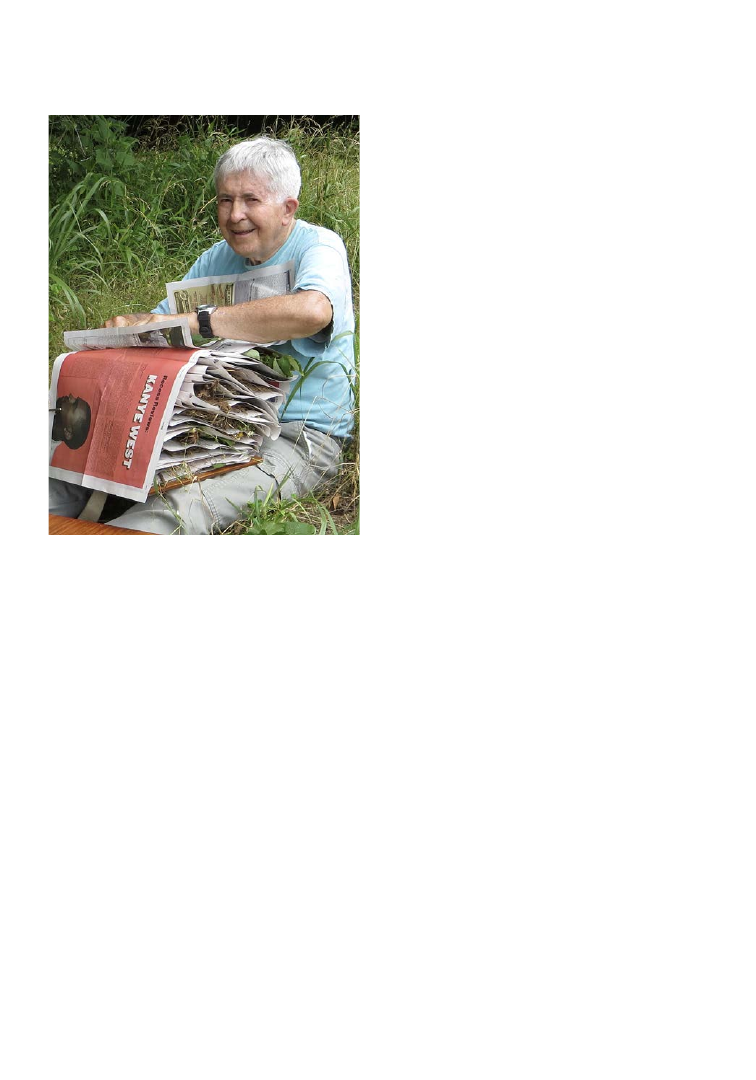
PSB 69 (2) 2023
148
IN MEMORIAM
ROBERT L. WILBUR
1925–2022
Robert Lynch Wilbur, Professor Emeritus of
Biology at Duke University died 31 October
2022 in Durham, North Carolina at the age
of 97. He was a prominent teacher of plant
taxonomy, productive botanical researcher
and nomenclaturist, herbarium curator/
proponent, and mentor to several generations
of undergraduate and graduate students.
He excelled in each of these endeavors
throughout his botanical career. Born in
Annapolis, Maryland, he and his family
moved to Durham in 1933, where Bob Wilbur
and Duke University began an association
Bob Wilbur collecting plants in Orange
County, North Carolina in 2013. Photo by
Mengchi Ho, used with permission
that lasted nearly 80 years. After obtaining his
BS (1946) and MA (1947) degrees in botany at
Duke, he went to the University of Hawaii and
worked as a graduate assistant with Harold
St. John. In 1948, Wilbur began studies at the
University of Michigan for a Ph.D. under the
direction of Rogers McVaugh—as the latter’s
third graduate student. He accompanied
McVaugh on his professor’s first trip to
the Nueva Galicia region of west-central
Mexico, and several months later, he and one
of his brothers returned there to continue
collecting. His doctoral dissertation, a detailed
taxonomic account of the primarily North
American genus Sabatia (Gentianaceae), was
completed in 1953. Its publication (Wilbur,
1955) received the George R. Cooley Award
in 1956 from the American Society of Plant
Taxonomists for the “best published paper
dealing with the flora of the southeastern U.S.”
Wilbur’s professional academic career
began with a one-year stint as an assistant
professor at the University of Georgia (1952-
53). He relocated to North Carolina State
College in Raleigh as assistant professor and
herbarium curator (1953-57) before making
his final move back to Durham, Duke, and
the Department of Botany (later Biology)
for the remainder of his career. He advanced
to associate professor in 1963, to professor
in 1970, departmental chair (1971-77),
and professor emeritus (2007-22). Wilbur’s
signature course was a lecture/lab class on
local flora and plant taxonomy. Half or more
of both lecture and lab periods were spent
roaming the Duke campus and Duke Forest,
learning how to identify plants. In addition
to his teaching duties, he curated and greatly
expanded the university’s herbarium (DUKE)
and conducted/published research primarily
on plants of the southeastern U.S. and

PSB 69 (2) 2023
149
Central America. One of his early botanical
contributions that remains in use today was a
book on the family Fabaceae in North Carolina
with keys, lengthy descriptions, distribution
maps, and illustrations (Wilbur, 1963).
A trip to Costa Rica in 1968 with Duke
colleague Donald E. Stone rekindled his
interest in tropical botany, and thereafter
Wilbur became an avid collector of plants
in Central America. He and his students
collected extensively in Costa Rica, and made
trips to Belize, El Salvador, Mexico, Nicaragua,
and Panama. His typical field protocol was
early to rise, eat breakfast, get out in the field
ASAP, collect until dark with no lunch break,
return and eat dinner, and work until late at
night writing up notes and rearranging plants
from the field press into drying presses. His
specimens tended to be ample (sometimes
completely covering an herbarium sheet)
and were occasionally referred to by others
as “Wilbur sheets.” After formally retiring,
much of his time in the field was refocused on
collecting again in North Carolina and other
parts of the southeastern U.S.
In his floristic and monographic research,
Wilbur was a flowering plant generalist
with taxonomic publications on numerous
families, including: Asteraceae, Annonaceae,
Campanulaceae, Cistaceae, Clethraceae,
Crassulaceae, Ericaceae, Euphorbiaceae,
Fabaceae, Gentianaceae, Liliaceae,
Myricaceae, and Rubiaceae. For 21 years,
he served on the International Association
for Plant Taxomomy’s Committee for
Spermatophyta, and his papers clarifying
and revising botanical nomenclature include
many additional families. Wilbur was a
prolific plant collector who made more than
100,000 numbered collections. Largely as a
result of his collections, those of his students,
and exchange generated by duplicates of both,
the number of specimens of vascular plants
at DUKE grew from a teaching and reference
collection of 134,000 to a major research
collection of more than 400,000. Among his
103 (fide his numbered reprint collection)
research publications, Wilbur described
three new genera, Calcaratolobelia Wilbur
(Campanulaceae), Didonica Luteyn & Wilbur
(Ericaceae), and Utleya Wilbur and Luteyn
(Ericaceae); he also described more than 60
new species. To date, 28 species have been
named for him.
Beyond his productivity as a teacher, collector,
and researcher, Dr. Wilbur was devoted to his
family, students, university, and discipline
of systematic botany. He was warm-hearted,
friendly, and always approachable. Those
who worked closely with him—colleagues,
students, his long-time collections manager
(Sherri Herndon)—got to know him as a
caring family man with six children and a
cadre of dogs; at least one of the latter often
accompanied him to the herbarium and/or
field. One of his great joys was the time he
spent training, encouraging, and aiding the
next generation of plant systematists. He took
a personal interest in the lives and careers of
his graduate students and those undergrads,
like us, who demonstrated an interest in
learning about plants. These efforts included
taking students into the field, offering both
fatherly and academic advice, and sharing his
passions for local flora, tropical botany, and
rigorous academic scholarship.
A tribute to Robert Wilbur, the man, scientist,
and teacher, is to appear in a forthcoming
issue of Rhodora, a journal in which his
articles often appeared. It consists of a detailed
biography, a bibliography, reminiscences by
some of his former students, and a series of
research papers produced in his honor.

PSB 69 (2) 2023
150
REFERENCES
Wilbur, R. L. 1955. A revision of the North
American genus Sabatia (Gentianaceae).
Rhodora 57: 1-33, 43-71, 78-104.
Wilbur, R.L. 1963. The Leguminous Plants of
North Carolina. North Carolina Agricultural
Experiment Station, Technical Bulletin 151.
Raleigh, North Carolina. 294 pp.
— Thomas F. Daniel, Curator Emeritus,
Botany, California Academy of Sciences; and
Layne Huiet.
NANCY G. SLACK
1930–2022
Nancy Slack, botanist and historian of botany,
passed away on December 21, 2022 after a
short illness. She taught botany at Russell
Sage College and then also became interested
in the history of botany. She was an active
member of the Botanical Society of America.
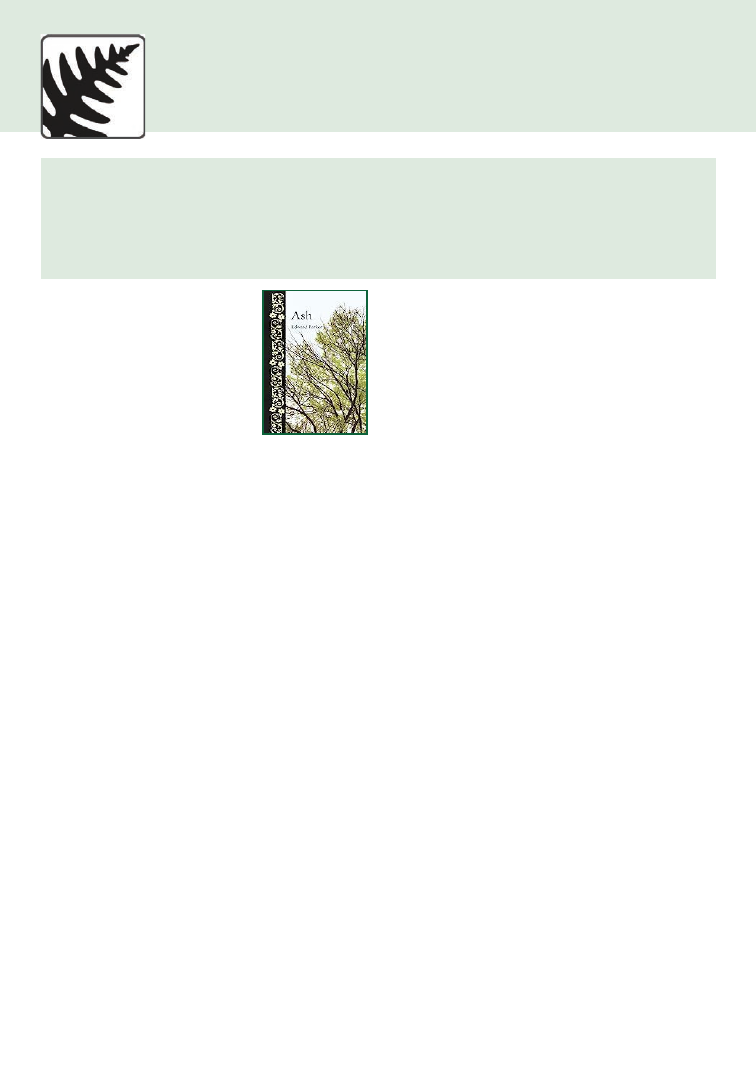
PSB 69 (2) 2023
151
151
Ash
Chasing Plants
Mary Strong Clemens. A Botanical Pilgrimage
Pressed Plants: Making a Herbarium
White Pine: The Natural and Human History of a Foundational American Tree
BOOK REVIEWS
Ash
Edward Parker
2021. ISBN: 978-1789143560
US$27 (Hardcover); 224pp.
Reaktion Books, London, U.K.
Years ago, I planted several ash trees in my
yard in Ohio. Then sometime later, I learned
that the emerald ash borer beetle had arrived
in Ohio and that people all over town were
cutting down these trees to stop the spread of
infection from this harmful insect. It appeared
that the massive death of ash trees would
change the character of natural areas and cities
as much as the Dutch Elm disease fungus did
(Bukowski, 2019). Ash trees are casualties of
this invasive insect that has killed hundreds of
millions of these trees in the United States and
Canada (Siegert et al., 2014).
This book, written for the general reader, is
part of a series that integrates botanical work
into a broader social and historical context.
All books in the series have a single word title
(e.g., apple, sunflower, oak, cherry) and are
elegant hardcover volumes.
Chapter one provides the general botanical
background on ash trees. Ash is in the
genus Fraxinus with about 48 true species.
Ash is one of the 24 genera in the olive and
lilac family, the Oleaceae. These plants are
widespread throughout much of North
America, Europe, and Asia, and most of the
species are medium-to-large, deciduous trees.
These trees are generally 35 to 75 feet in height
with a diameter of 1 to 2 feet. Most species of
ash have compound leaves, and they provide
a more open canopy than other trees so that
there can be a rich under-story of small plants
in the forest. Many lichens and mosses occur
on the alkaline bark of ash trees. The oldest ash
trees in the fossil record are from the Eocene
epoch (55 to 34 million years ago).
The next chapter focuses on threats to ash
trees, which are dying at an unprecedented
rate throughout North America and Europe.
In North America, the death is due to the
introduction of a beetle known as the emerald
ash borer, and in Europe, ash is perishing
due to a fungal infection. The emerald ash
borer was introduced from Asia where it is
in balance with the ecosystem, but in North
America this beetle has no known predators.
Damage occurs when emerald ash borer
larvae feed on the inner bark of trees, thus
impeding transport within the phloem. Blue
ash (Fraxinus quadrangulate) appears to be
relatively resistant to the emerald ash borer,
but damage caused by this insect is estimated
to be $10 billion over a 10-year period (Herms
and McCullough, 2014).

PSB 69 (2) 2023
152
Mythology of ash throughout history
and across the world is considered by the
author. Mythologies about ash appear in a
large number of cultures, including Native
American, Scandinavian, Siberian, Asian,
Middle Eastern, and Indian folklore. A
common theme is to use a tree as a metaphor
for the structure of the universe and to show
the interconnectedness of everything.
Ash trees also have had tremendous economic
importance throughout history. Ash timber
has a number of qualities that make it very
useful, such as its strength and flexibility. Ash
wood was used for the wheels in carts and
carriages for hundreds of years. This wood
also was used in a number of weapons such
as spears as well as bows and arrows. Ash
also was used in construction and furnishing
homes throughout the ages. One of the most
interesting uses of ash woods is in musical
instruments, including the classic violin and
electric guitar bodies.
The final chapter considers the medicinal uses
of ash trees. One of the first medicinal uses
of ash was noted by ancient Greek physicians
who found the leaves were useful for the
treatment of snake bites. Ash plants contain
important biochemicals including phenols,
phenylethanoids, flavonoids, coumarins,
and lignans. These compounds are useful as
pharmaceutical since they have been shown
to have properties such as antioxidant,
anticancer, anti-inflammatory, antimicrobial,
among others (Sarfraz et al., 2017).
The book is beautifully illustrated with many
images of ash trees in natural settings along
with interesting historical photographs. This
book is reasonably priced and will be enjoyed
by professional and amateur botanists as well
as by horticulturalists and foresters.
REFERENCES
Bukowski, E. 2019. Using the commons to understand
the Dutch elm disease epidemic in Syracuse, NY. Geo-
graphical Review 109: 180-198.
Herms D. A., and D. G. McCullough. 2014. Emerald
ash borer invasion of North America: history, biology,
ecology, impacts, and management. Annual Review of
Entomology 59: 13-30.
Sarfraz, I., A. Rasul, F. Jabeen, T. Younis, M. K. Za-
hoor, M. Arshad, and M. Ali. 2017. Fraxinus: a plant
with versatile pharmacological and biological activi-
ties. Evidence-Based Complementary and Alternative
Medicine. https://doi.org/10.1155/2017/4269868
Siegert, N. W., D. G. McCullough, A. M. Liebhold,
and F. W. Telewski. 2014. Dendrochronological recon-
struction of the epicentre and early spread of emerald
ash borer in North America. Diversity and Distribu-
tions 20: 847-858.
–John Z. Kiss, Department of Biology, UNC-
Greensboro, Greensboro NC 27402

PSB 69 (2) 2023
153
Chasing Plants: Journeys
with a Botanist through
Rainforests, Swamps, and
Mountains
Chris Thorogood
2022. ISBN: 978-
0226823539
US$27.50 (cloth); 224 pp.
University of Chicago Press
Chasing Plants really is a journey with botanist
Chris Thorogood through rainforests,
swamps, and mountains. The book is
intended for a lay audience and the beautiful
artwork throughout makes it worthy of any
coffee table. The writing and stories are so
enjoyable that non-botanists and seasoned
researchers alike will thoroughly enjoy the
book. While botanical knowledge is not a
prerequisite for reading this book, having
some background in botany does improve the
reading experience. Overall, Thorogood has
written an entertaining and informative book
that takes you with him as he travels the world
to satisfy his professional goals and fulfill his
personal mission of experiencing as many
plants as he can while they can still be found.
Right from the start, Thorogood’s eagerness
and passion for studying plants drives
him to inspire a similar passion in his
readers. His enthusiastic descriptions and
narrated adventures immerse the reader in a
secondhand experience of a day in the life of
a botanist. Throughout his book, it’s clear that
Thorogood views botany as a communal effort
as he strives to increase awareness of plants
in communities in order to combat plant
blindness. It’s evident that part of Thorogood’s
mission in writing his book is to highlight
the vulnerability of many plants, especially
endemic species, which may soon disappear
forever due to natural disasters and climate
changes. One of his adventures highlights this
danger, when he talks of a mudslide that wipes
out many endemic species before he has the
chance to return and study them. His race to
discover, study, and raise awareness of as many
plants as possible portrays Thorogood’s belief
that mankind must take part in a stewardship
of nature. Part of this stewardship seems to
involve a “conversation with the past” (p. 64).
He’s not only interested in studying plants in
the present, but also in learning what plants
can tell us about our heritage. In addition,
Thorogood is very conscious of the fact that
botany exists today as a result of the combined
efforts of past scientists and explorers, such
as Alexander von Humboldt and Walter
Weston, whom he quotes multiple times.
Through Thorogood’s interweaving of history,
conservation, theory, and science, the reader
gleans a sense of the interdisciplinary nature
of botany.
As Thorogood states, each geographic
location is a “living library” of rare and
endemic species, documenting evolutionary
changes and relationships that contribute to
the greater study of plant conservation (p.
57). He places himself within a long-existent
tradition of plant documentation, originating
as personal herbariums and sketches, by
including the writings of early botanists,
linking his own research into the continuous
lineage of botanical study (pp. 53-54, 154-155).
Thorogood’s masterful paintings paired with
his own meticulous study are perfect reflections
of the structure of early botanical studies.
The reader can see that Thorogood envisions
himself as a perpetuator of and participant
in a historically rich and ecologically critical
heritage. By continuing research begun
centuries previous, he constructs a promising
future for the conservation and preservation
of diverse plant communities across the globe.

PSB 69 (2) 2023
154
The reader will notice that throughout his
explorations, Thorogood never hesitates
to credit his discoveries of rare plants to
local guides and researchers. He subtly
but artfully emphasizes that the science of
plant taxonomy is only possible with the
intimate, observational knowledge that local
communities have of their unique flora.
This becomes a key for his vision of plant
conservation as a practice which needs the
involvement of the average person as well as
scientists. Thorogood crafts a definition of
plant conservation as one part science, one
part botanical tradition, one part personal
interest, and one part community engagement
(pp. 10-11, 144-146, 154, 264). As readers
approach the final chapters, they cannot help
but feel that Thorogood’s mission is the most
relatable, compelling, and accessible form of
plant science they have encountered.
As a researcher, Thorogood provides powerful
and yet simple explanations of the science
underlying why plant taxonomy is important
to our understanding of plant diversity. For
example, Thorogood’s explanation of species
richness and the importance of collecting
herbarium specimens (pp. 154, 155) and
his allusion to the importance of DNA to
confirm identifications (p. 120) remind us
that the author always has his research goals
in mind. In addition, Thorogood conveys
how island endemism and rarity are products
of evolution, further supporting his goal of
increasing awareness of plant conservation
without detracting from the overall narrative.
The glimpses into the life a modern botanist
are equally informative; descriptions of the
harsh conditions, the fruitless searches and
the successful ones are described in ways that
make you feel like you are in the field too.
Chasing Plants incorporates an exciting
mixture of art, science, history, and culture,
which are all made accessible to the reader
through vivid imagery and Thorogood’s
conversational tone. Thorogood’s descriptions
of the plants that he encounters engage all
the senses and bring the plant to life in the
reader’s mind. Part of the life-like nature
of Thorogood’s descriptions comes from
his creative ability to associate unfamiliar
plants with images from everyday life. He’ll
compare plants to anything ranging from a
“purple asparagus” to “a leafless ghoul” (pp.
21, 23). Add to these descriptions his dynamic
artwork, and the reader feels as though they
are seeing the plant with their own eyes. Our
only complaint about the artwork is that there
could be a larger variety of plants depicted and
a more organized placement of the artwork
throughout. Often the artwork displayed
seems to have little to do with the page it’s
facing. However, the art itself is beautiful and
creates an anticipation for whatever artwork
might be displayed on the next page. Overall,
Thorogood’s Chasing Plants invites the reader
to share in an educational, immersive, and
exciting journey that helps reveal the history
of plants and their relevance to our own lives.
–Elizabeth Wamsley, Carolyn W. Howell, and
Christopher D. Heckel (checkel@hillsdale.edu),
Hillsdale College, 33 E College St, Hillsdale,
MI 49242

PSB 69 (2) 2023
155
Mary Strong Clemens.
A Botanical Pilgrimage
Nelda B. Ikenberry
2021. ISBN-13: 978-1889878638
Hardcover US$45; 462 pp.
Botanical Research Inst of Texas
Mary Strong Clemens, who lived from
1873 to 1968, was a botanical explorer and
extensively collected plants in remote areas of
the world including the Philippines, Borneo,
New Guinea, and Australia. She was born in
New York and died in Australia where she did
extensive work in isolated areas.
In 1896, Mary married Joseph Clemens, who
became a chaplain in the U.S. Army. This work
brought Joseph and Mary to the Philippines
from 1905 to 1907, and she started to make
collections in remote areas. Later, Joseph
worked with her, and they became notable
botanical collectors. They made many trips
in Southeast Asia, and during 1931–1934 in
Borneo (a large, rugged island), they made
the largest collections of plants from remote
mountainous parts of that island.
In 1935, Mary and Joseph traveled to New
Guinea, and Joseph died the next year (Merrill
and Perry, 1948). Mary stayed to continue to
collect plants but evacuated to Australia in
1941 due to World War II in the Pacific theater.
For the next 20 years, she worked at the
Queensland Herbarium in Brisbane, and she
continued her botanical work as a collector.
Mary did extensive botanical collections in
Queensland and made major contributions to
categorizing the flora of Australia. She worked
in the Queensland Herbarium until the early
1960s and died in 1968.
This book used her diaries and letters as well
as family and institutional archives to present
the fascinating story of her dedication to
collect plants from all around the world. She
was considered in many ways an “amateur”
botanist whose extensive collections were used
by professional botanists throughout the world
(Keeney, 1992). Sets of her plant collections
in Queensland were sent to the Botanical
Garden at the University of Michigan, which
distributed them to other institutions. Thus,
her specimens were sent to herbaria around
the world including Berlin, Zurich, Munich,
Singapore, Harvard, the United States Botanic
Garden, New York Botanical Garden, and
many other places.
The author takes a chronological approach,
and the book includes many photographs
(both half-tone and color) of Mary and
Joseph Clemens, the exotic locations of their
collections, and some of the plants they
collected and catalogued. Amateur botanists
have contributed greatly to the field, and we
are fortunate to have so many people interested
in plants and their remarkable diversity.
Although we still have some amateurs who
are very knowledgeable about plant taxonomy
(Marcenò et al., 2021), few today will ever
contribute to plant biology as much as Mary
Strong Clemens.
REFERENCES
Keeney, E. 1992. The botanizers: amateur sci-
entists in nineteenth-century America. Univer-
sity of North Carolina Press.
Marcenò, C., J. Padullés Cubino, M. Chytrý,
E. Genduso, A. S. Gristina, A. La Rosa, D. Sa-
lemi, et al. 2021. Plant hunting: exploring the
behaviour of amateur botanists in the field.
Biodiversity and Conservation 30: 3265-3278.
Merrill, E. D., and L. M. Perry, L.M. 1948.
Notes on some Papuan collections of Mary
strong Clemens. Journal of the Arnold Arbore-
tum 29: 152-168.
–John Z. Kiss, Department of Biology, Univer-
sity of North Carolina Greensboro, Greensboro
NC 27412

PSB 69 (2) 2023
156
Pressed Plants: Making a
Herbarium
Linda P.J. Lipsen
With illustrations by Derek Tan
2023. ISBN 978-0772680563.
Paperback, US$19.95; 92 pp.
Royal BC Museum
People press plants for all sorts of reasons,
from creative or artistic pursuits, to “amateur”
documentation, to the use of specimens in
more formal scientific endeavors. Pressed
Plants: Making a Herbarium by Linda P.J.
Lipsen (with illustrations by Derek Tan) guides
readers through the entire process of pressing
plants. Lipsen is the collections curator at the
University of British Columbia Herbarium,
part of the Beaty Biodiversity Museum, while
Derek Tan is an illustrator and photographer
with the museum. This book is divided
into six main chapters that chronologically
address the major steps in creating one’s own
herbarium.
The book starts with a brief introduction
that explains why we press plants, and
who presses them, followed by chapters
that walk through the steps to making an
herbarium. Chapter One deals with collection
preparation, including a list and description
of the necessary supplies as well as safety
and ethical considerations to make before
collecting. The second chapter focuses on the
actual collection process, walking through
the why, what, when, and how to carry out
this important step of sampling plants in the
field. The third chapter addresses how to press
and dry plant specimens, and Chapter Four
focuses on the mounting process. Now that
individual specimens have been collected,
pressed, and mounted, the author details the
preservation and organization of the overall
collection in Chapter Five. Chapter Six
discusses how to identify specimens, pointing
to both traditional field guides and online
resources, while also describing key traits for
some of the largest plant families along with
illustrations and special tips on collecting or
mounting plants from these groups. Finally,
the References and Resources section directs
readers to both useful publications and
websites, organized thematically.
This concise book (92 pages) is a remarkable
guide through each step of making an
herbarium. Lipsen provides complete
equipment lists for each step, including both
expensive options and recommendations
for supplies that are more affordable or
accessible, with special notes on reusable or
sustainable options in the margins denoted
by a recycling symbol. Additional margin
notes denoted with a “T” include tips and
tricks, while checkmarks provide step-by-step
checklists for important protocols. The black-
and-white illustrations by Tan are beautiful
and clean, giving clear depictions of all tools
and supplies, plus set-ups for organizing and
walking through the pressing and mounting
processes. Gorgeous botanical illustrations
also highlight important parts of the plants to
preserve; labeled diagrams show key features
of important plant groups.
This book is accessible to novices while
simultaneously providing helpful reminders
and tips for more experienced individuals.
At each step in the process, Lipsen not only
discusses what to do, but also why to do it,
which reiterates the importance of the step
and provides helpful context. It can therefore
serve as a handy reference for non-experts, as
a great introduction to students or new people
working in collections, or as a reference for
seasoned herbarium staff or curators. As a

PSB 69 (2) 2023
157
professor who teaches Plant Systematics and
co-curator of a small university herbarium, I
will certainly be using many of the tips and
tricks recommended in this book and will
also be framing my teaching using some of
these ideas and examples! Overall, this book
is a thorough and accessible introduction and
reference to plant collection and preservation
in herbarium formats.
—Nora Mitchell, Department of Biology,
University of Wisconsin – Eau Claire, Eau
Claire, Wisconsin, USA
White Pine: The Natural and
Human History of a
Foundational American
Tree
John Pastor
2023. ISBN-13: 9781642831412
US$30.00 (paperback); 276 pp.
Island Press, Washington, DC, USA
As children, we all learned about the history
of America in increasing detail each year
from kindergarten through our late high
school or early college years. Our teachers
imparted their knowledge of major events
in American history, including the Boston
Tea Party, Revolutionary War, and Franklin
D. Roosevelt’s New Deal but, sadly, not one
teacher, in my experience, mentioned the
critical role that white pine had on these
and other historical events. White Pine: The
Natural and Human History of a Foundational
American Tree by Dr. John Pastor, an ecologist
and Professor Emeritus at the University of
Minnesota, fills in the gaps and regales readers
with tales from American history through the
lens of Pinus strobus, the tree species that built
America. This captivating book is organized
into 11 chapters, and includes a detailed
introduction, afterword, and bibliography
with additional notes for the history and
forestry buffs who want more information
and references for further reading.
The book starts with stories of Pastor’s youth
in the North Woods with old-growth eastern
white pine stands and evolves into a summary
of the history of white pine. Many of the
chapters seem to include similar musings
from Pastor about his lived experiences
with white pine, preceding or following the
science and history around the theme of the
respective chapter. In the first chapter, Pastor
begins by painting a vivid description of the
sights, smells, and sounds of an old growth
stand of eastern white pine in Minnesota and
transitions to a story of how pine evolved,
starting from the time of Pangaea and
Laurasia with Pinus mundayi, through the
many Ice Ages, and up to the present-day
distribution and diversity of pine species in
North America. This narrative eases the reader
into the history of the relationships between
humans and white pine that picks up speed in
the second chapter, which includes a very brief
history of Indigenous use (e.g., needles, roots,
and bark used as base of many Algonquin
medicines) and reverence/views (e.g., sign of
unity for Haudenosaunee peoples) of white
pine. The chapter includes citations from
some powerhouse researchers in the field, but,
unfortunately, does not directly or explicitly
cite Indigenous elders and knowledge keepers
as sources of the information. Pastor strongly
contrasts Indigenous use and views of white
pine with the more utilitarian and ownership-
centric view of European colonists, who are
the focus for the rest of the chapter. Notable
events, such as the naming of white pine by
Plukenet and Linnaeus, the development of
the Pine Laws and King’s Broad Arrow, and
Pine Tree Riot, which led to the Boston Tea
Party and Revolutionary War, are woven

PSB 69 (2) 2023
158
together in the history presented in the second
chapter.
The post-Revolutionary War era picks up in
the third chapter, which focuses on the extreme
shift in white pine logging and utilization that
led to the rapid establishment and success
of many timber companies (some of which
still exist today) and rapid displacement of
Indigenous peoples and downfall of white
pine ecosystems throughout eastern North
America. Henry David Thoreau’s views on the
destruction of these “legendary” white pine
forests are outlined in the somewhat solemn
fourth chapter, which details Thoreau’s
ecological perspective, “righteous” quest to
understand the relationships between white
pine and other forest-dwelling organisms,
and determination to demonstrate the
ecological value of white pine from cradle to
grave and beyond. This focus on ecological
benefits of white pine continues in the next
chapter, “The Watershed,” which focuses on
diplomat and conservationist George Perkins
Marsh and artist Sanford Gifford, the latter
of which who was the godfather of Gifford
Pinchot, the first head of the U.S. Forest
Service. Collectively, the story of these three
men speaks to the recognition that white pine
commodification led to the demise of other
species and the landscape, which segues to
the sixth chapter focused on Pinchot’s quest
for sustainable forestry and the development
of Spalding and Fernow’s comprehensive
study of white pine ecology, silvics, health,
and management. Chapters seven through ten
focus on the movement to restore white pine
to the landscape, which ranged from imports
of white pine (and the horrid white pine
blister rust) from Europe to the development
of the Civilian Conservation Corps (a.k.a.,
Roosevelt’s Tree Army) as part of FDR’s New
Deal attack on economic stagnation during
the Great Depression, and the development of
modern-day ecological silviculture. The ninth
chapter focuses on the shifting view of fire in
the forest landscape, from Indigenous use of
fire to promote berry-producing species to the
early Smoky Bear era of fire prevention and
the shift to understanding the importance of
using fire to obtain and sustain diverse, healthy
forest ecosystems. The last chapter brings the
story back to climate and how pines have
evolved over time, citing that, with climate
change rapidly warming Earth’s temperature,
no one really knows what will happen with
pines. Will they adapt to the warming climate?
Contract their range? Go extinct? Pastor
speculates what will happen, wrapping up
the book with an emphasis on using what we
have learned about the history of white pine to
guide the future of this foundational species
that helped shape America and the field of
forestry.
This book contains the rich history of a
foundational tree species that has helped
sustain life and ecosystem health while
shaping a nation. Pastor’s discussion of the
fine historical details, such as the Pine Tree
Riots, how mean annual increment was
created, how white pine blister rust was
important for motivating Congress to pass
the Plant Quarantine Act, and transition from
Indigenous reverence to European exploitation
and utilitarianism to modern conservation
and sustainability, makes this a must-read
for all forestry professionals, naturalists, and
others receptive to the teachings of history in
pursuit of conserving a legendary tree species
and forest ecosystems.
– A.N. Schulz, Department of Forestry, Missis-
sippi State University, Starkville, Mississippi,
USA
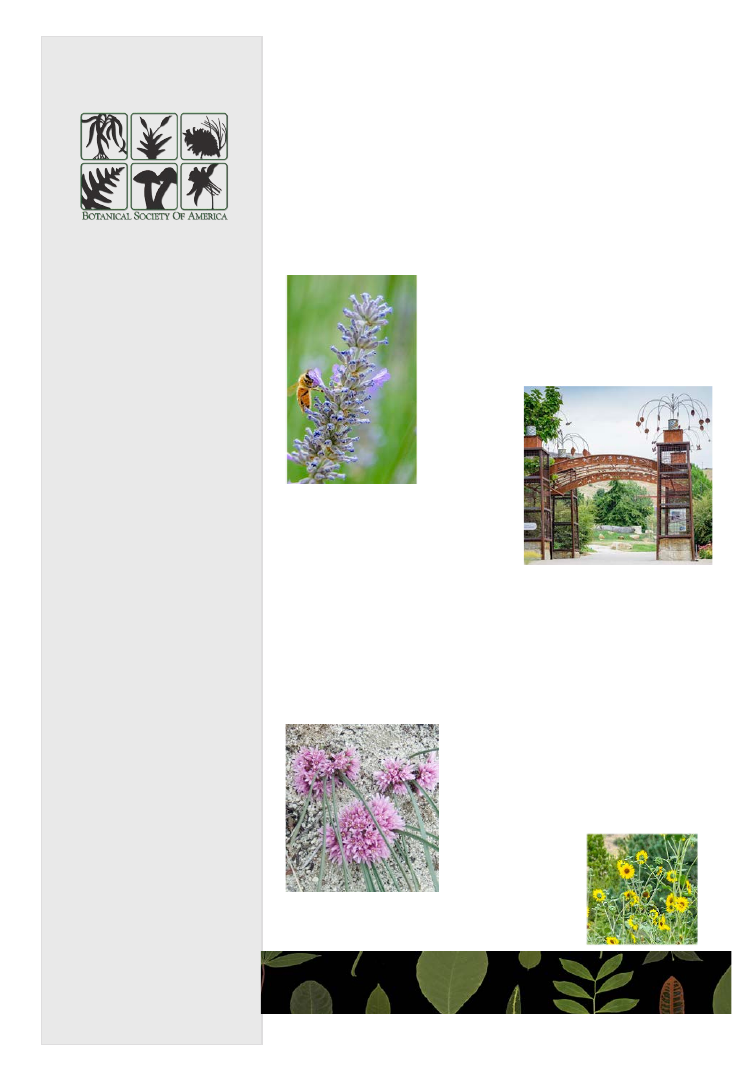
The Botanical Society of
America is a membership soci-
ety whose mission is to: pro-
mote botany, the field of basic
science dealing with the study
& inquiry into the form, func-
tion, development, diversity,
reproduction, evolution, & uses
of plants & their interactions
within the biosphere.
ISSN 0032-0919
Published 3 times a year by
Botanical Society of America, Inc.
4475 Castleman Avenue
St. Louis, MO 63166-0299
Periodicals postage is paid at
St. Louis, MO & additional
mailing offices.
POSTMASTER:
Send address changes to:
Botanical Society of America
Business Office
P.O. Box 299
St. Louis, MO 63166-0299
bsa-manager@botany.org
The yearly subscription rate
of $15 is included
in the membership
Address Editorial Matters (only) to:
Mackenzie Taylor, Editor
Department of Biology
Creighton University
2500 California Plaza
Omaha, NE 68178
Phone 402-280-2157
psb@botany.org
Plant Science Bulletin
Summer 2023 Volume 69 Number 2
Plant Science Bulletin
Have you registered yet?
Come home to Botany 2023
at the beautiful
Boise Centre, Boise, Idaho
Connect, Collaborate & Learn
with Colleagues from Around the Globe
Register now -
www.botanyconference.org
AN INVITATION
FROM A MEMBER
https://bit.ly/41uM70n
WHY BOISE?
https://bit.ly/3AjUZd4
A NOTE FROM VISIT
BOISE
https://bit.ly/3mXx7Jm
Over 900 Scientific Presentations
Including Symposia - Colloquia - Poster Session
Social Events - Field Trips - Wildflower Walks
Workshops - Exhibits
Special Lectures by Prominent Scientists
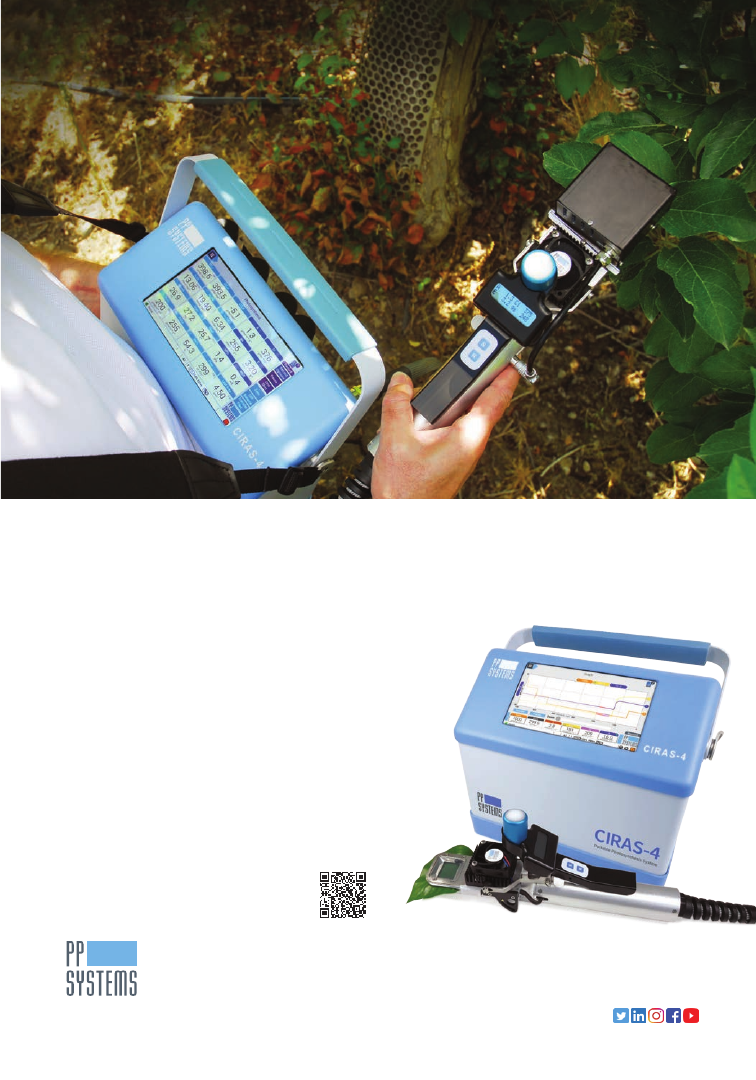
Measuring photosynthesis?
Chlorophyll fluorescence?
Don’t let its compact size fool you. The highly accurate CIRAS-4 Portable Photosynthesis System is the lightning-fast
portable powerhouse that will elevate your research. Its advanced software is exceptionally intuitive, customizable, and all
managed from the touchscreen. It’s so easy to use that you can begin taking measurements right out of the box.
•
Designed for high-level field research
Lightweight, compact & up to 16 hours of continuous use
•
Measure rapid A/C
i
in real time without post processing
The Single-Step CO
2
Response (SSCO
2
R
™
) Method is the
fastest, most accurate, streamlined method available
•
Only system to feature far-red LEDs
Allows for control of far-red light up to 30% of PAR
•
Fully automatic & programmable environmental control
Full control of CO
2
, H
2
O, temperature & light (RGBW-FR)
•
Measure leaf gas exchange & chlorophyll fluorescence
simultaneously
Plus dark & light-adapted fluorescence measurement
parameters & OJIP fast induction kinetics
Elevate your research
Amesbury, MA 01913 U.S.A. | +1 978-834-0505 | sales@ppsystems.com
Learn more about the fastest, most accurate
.
portable leaf gas exchange system available.